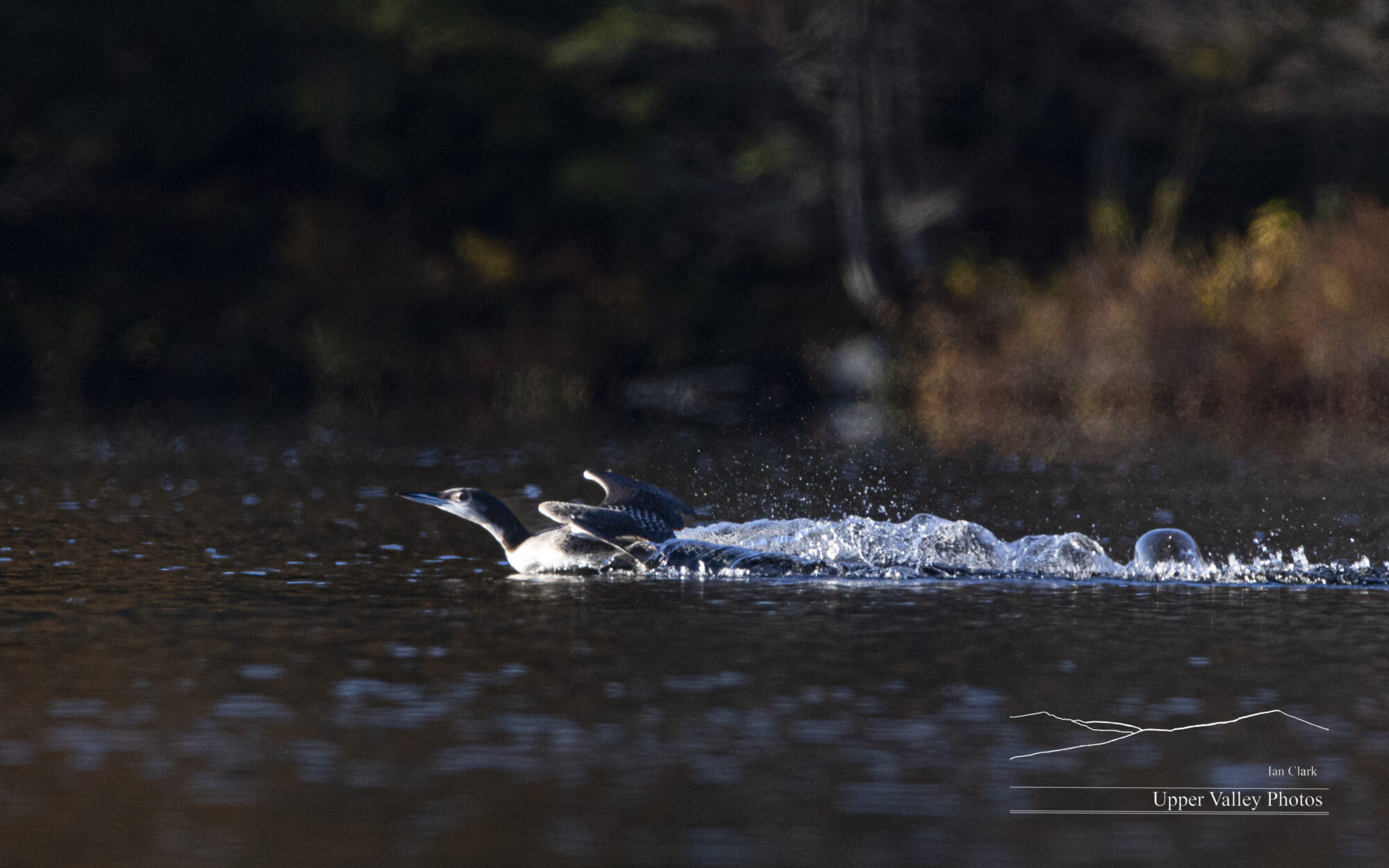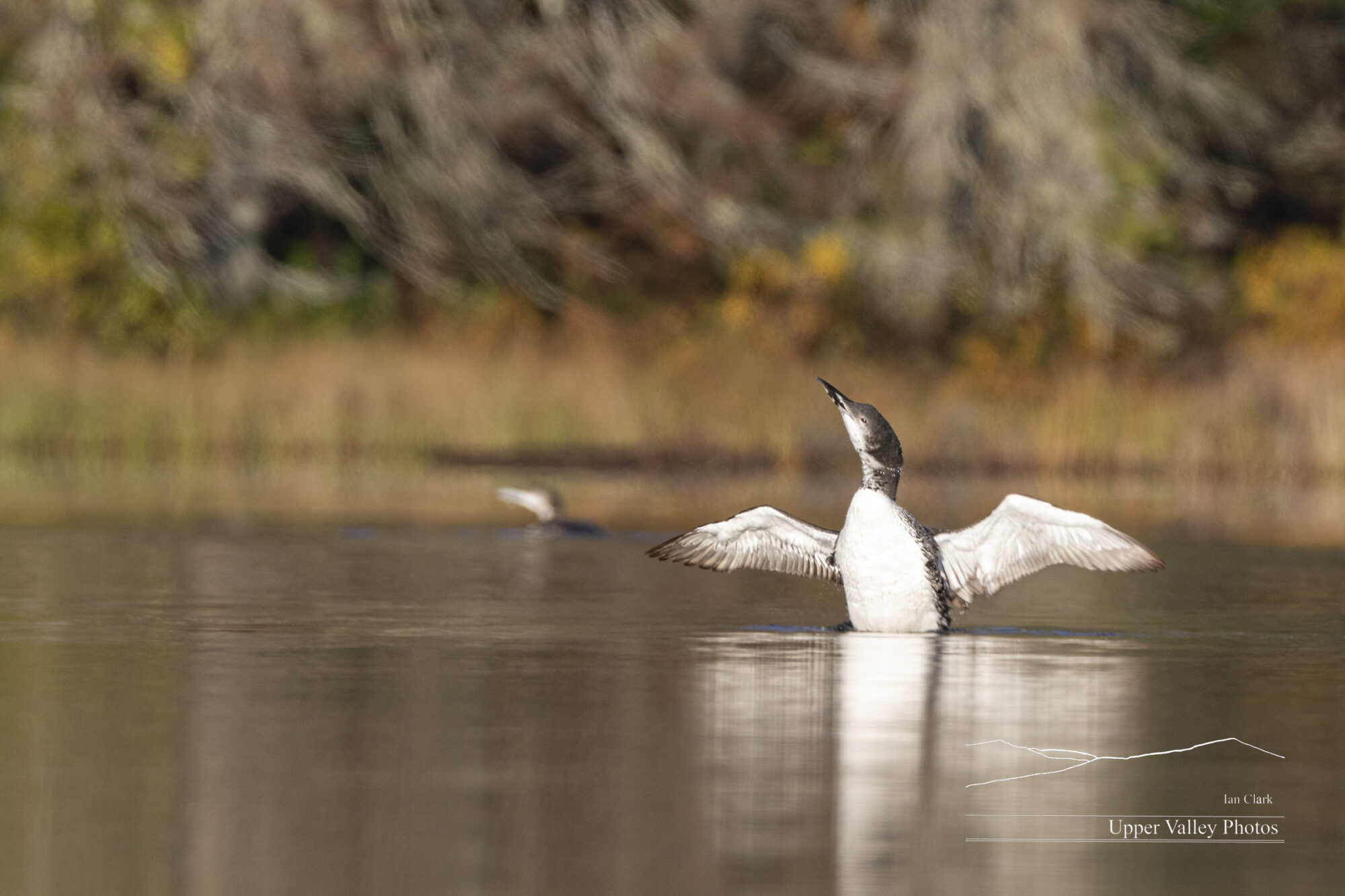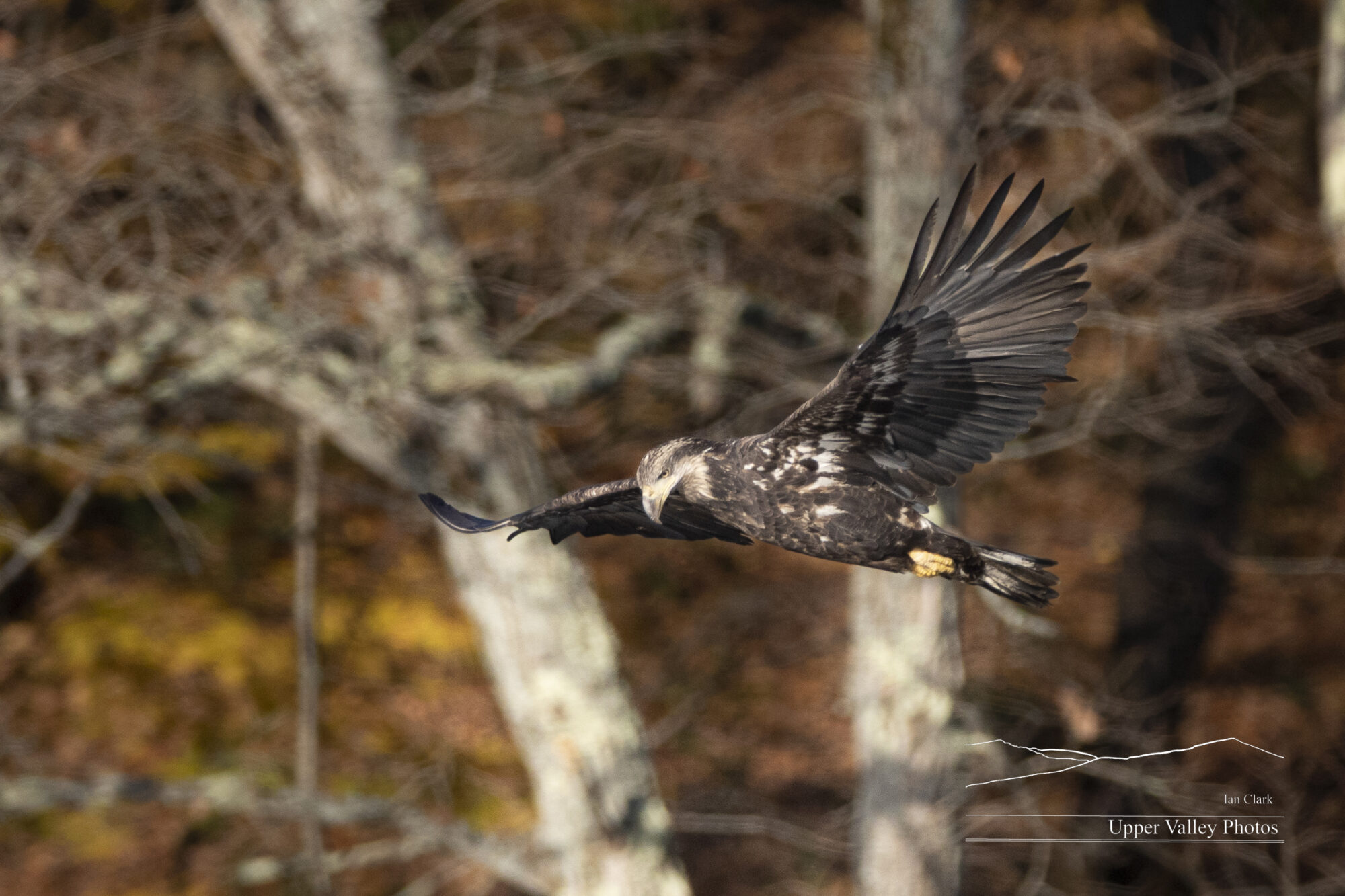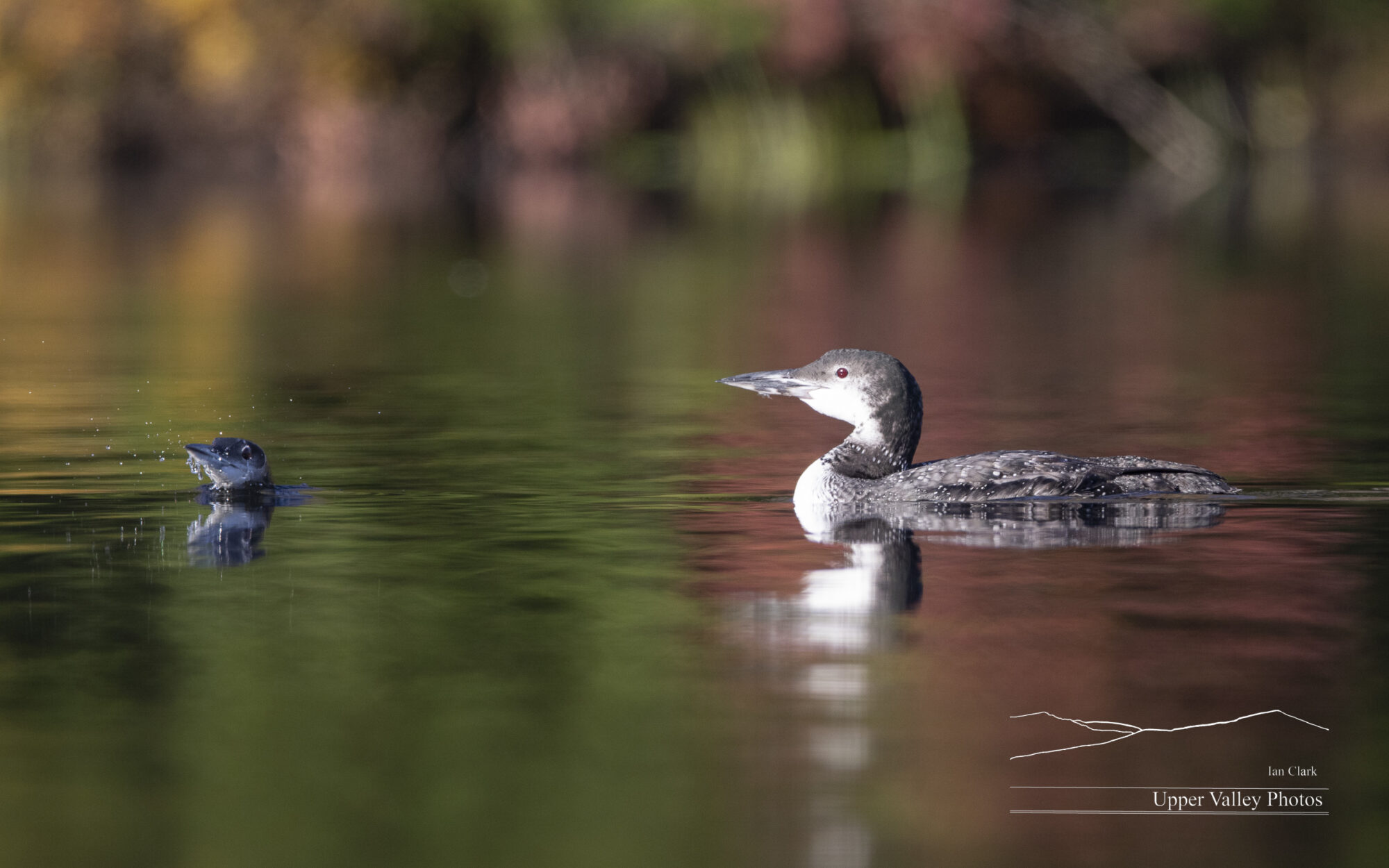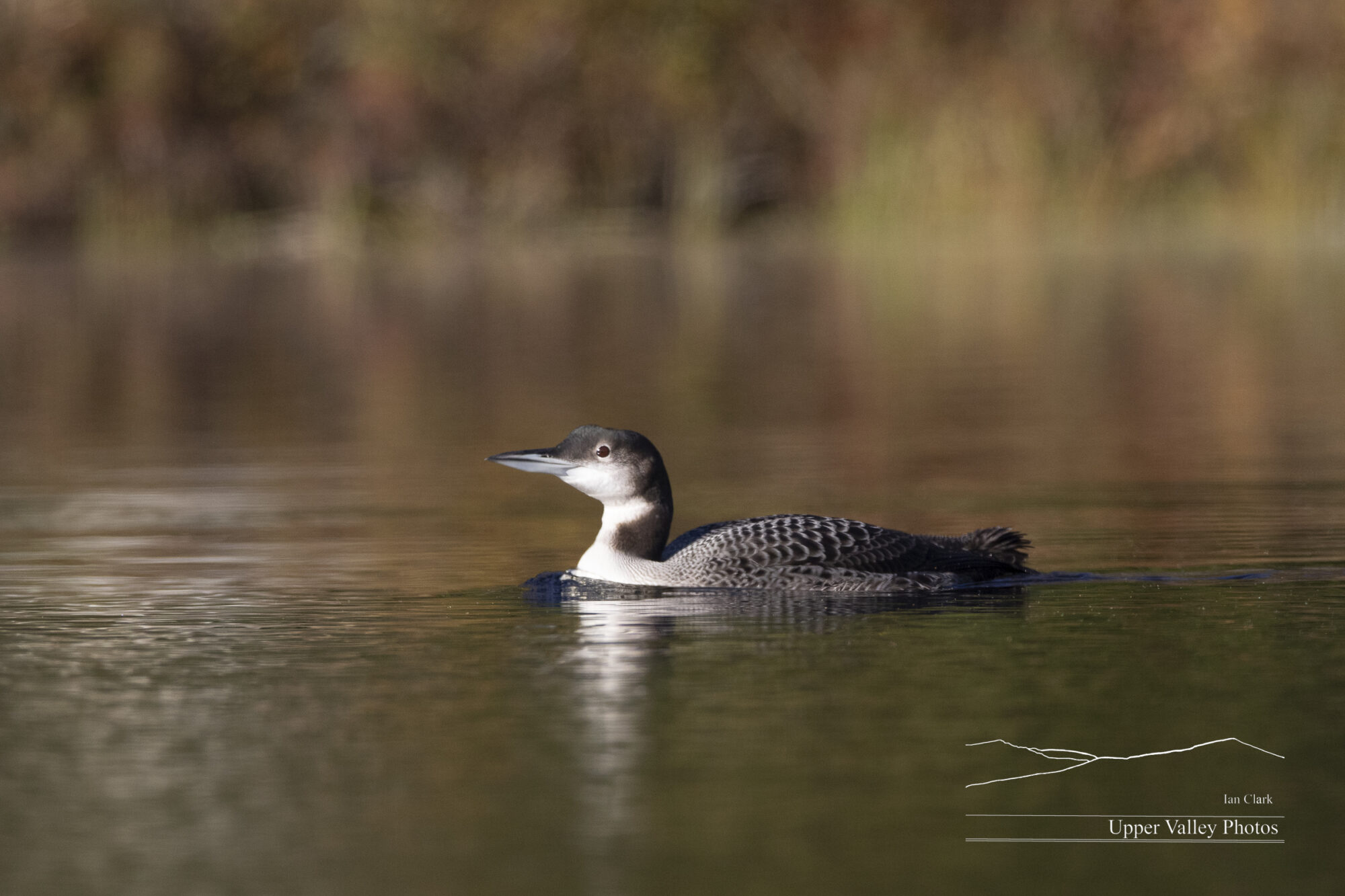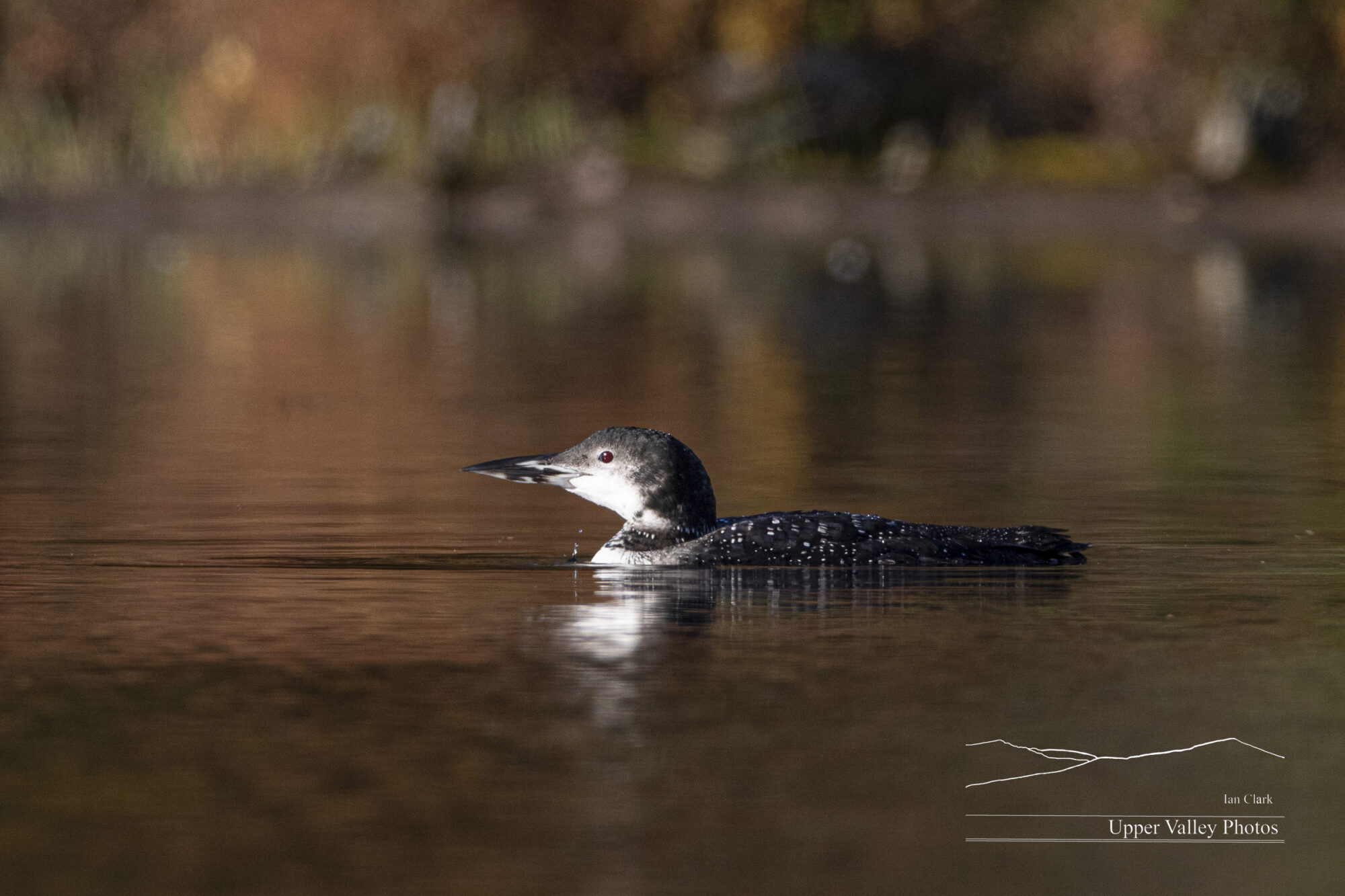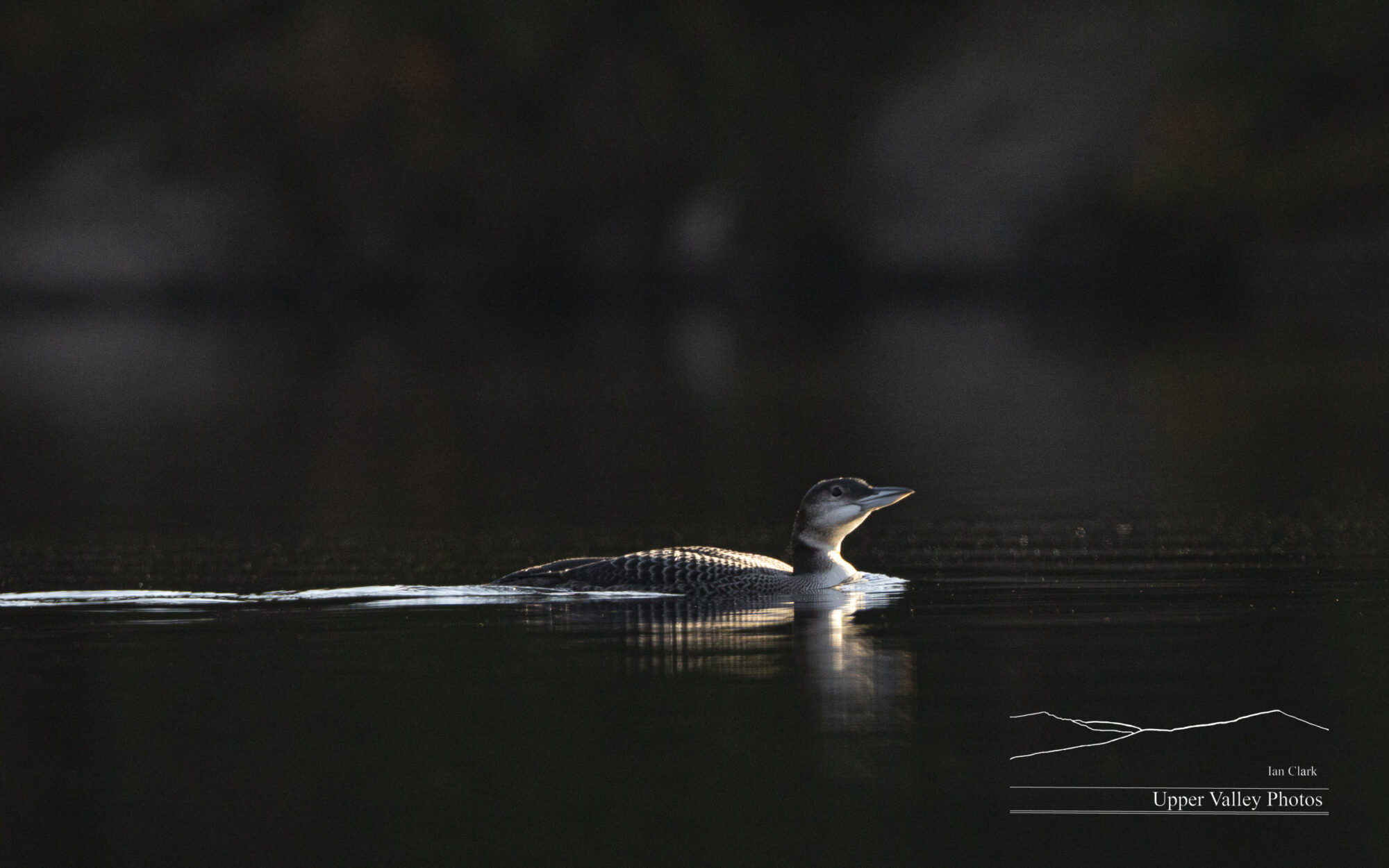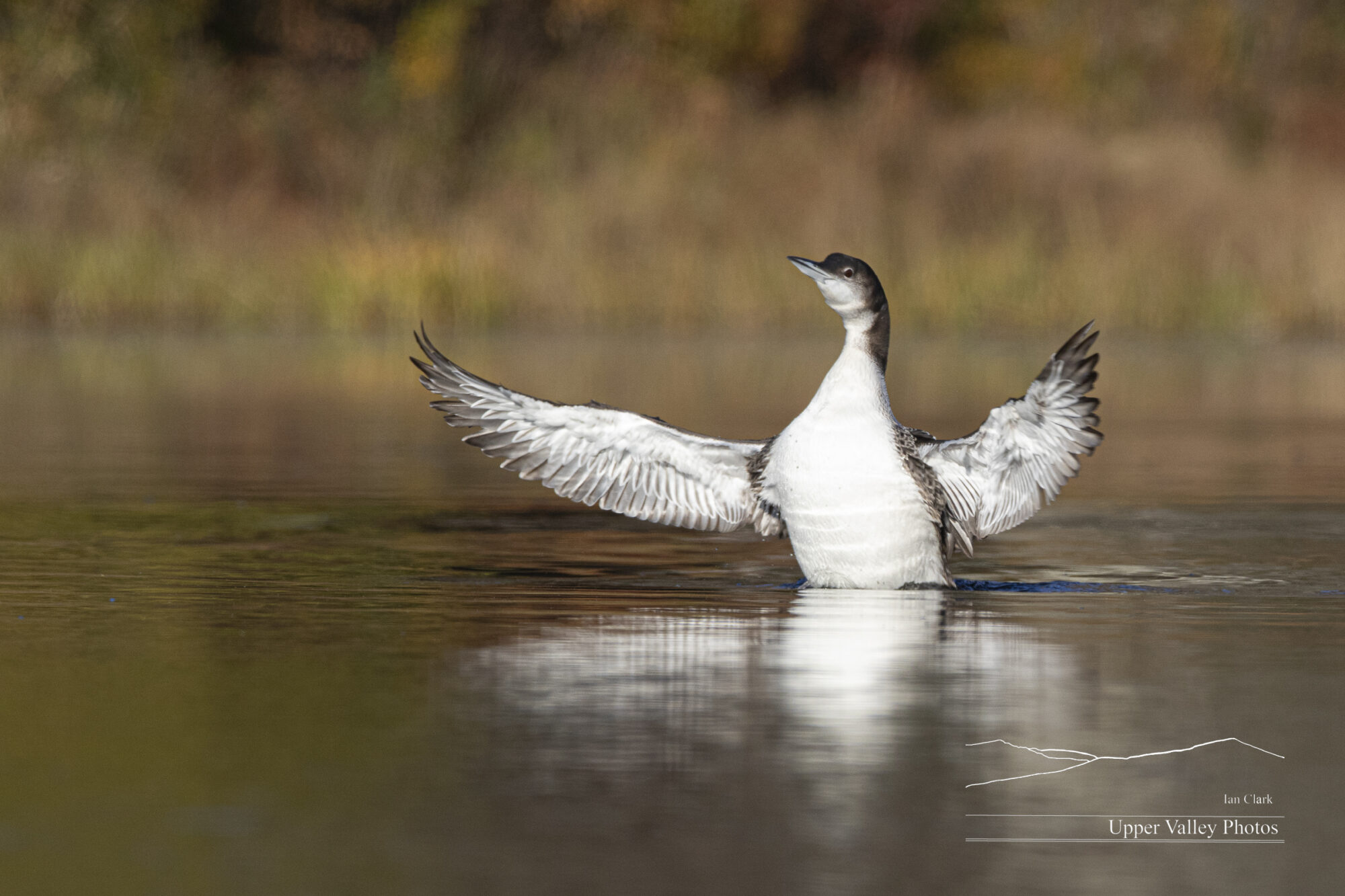Posts Tagged: loon chicks


Loon Update July 12, 2024
I’ve made it out to check on two of our three loon families, and have heard reports from the third.
The Loch Lyme Lodge in Lyme will host me to present An Uncommon Look at the Common Loon in the evening of July 23, part of their Tuesday Night Cookouts. We’re still figuring exactly when I’ll present, as soon as we know, the details will be on their site: www.LochLymeLodge.com.
And, I’m busy getting ready for the League of New Hampshire Craftsmen’s Fair, August 3-11 at Mount Sunapee Resort in Sunapee, NH. I’ll be in booth 718, come on by and say hello. All the Fair details are on the League’s Site.
While I haven’t had a chance to visit the Westons, a friend reports they’re doing well with the one chick. And, mom seems to be hanging around.
The Eastons lost their first clutch. All I know is the nest was empty when I visited. The water was up to the lip of the nest, I suspect the nest flooded. They’ve decided to try again and the chicks are due in the next few days.




The big news from the Middletons is that the Loon Preservation Committee biologists were able to band both adults over the July 4th Holiday. LPC tries to band something like 30-35 loons every year – almost 5% of New Hampshire’s loon population.
Banding lets them track individual loons over many years giving insights on behavior. Loons get four bands, one with a unique number from the United States Geological Survey (hey, it’s the government). Being unique, that number will forever definitively identify that bird. But the numbers on the USGS band are small and all but impossible to read unless you’re holding the bird. Loons aren’t big fans of being held, so they get three more bands with a mix of colors. If the bird is banded as a chick, the USGS band goes on the left leg, if they’re banded as adults, they wear it on the right leg. The color combination gives a nearly perfect way to identify the individual without having to catch it.
Along with banding the birds, they also take measurements to learn about size and weight along with blood to test for lead, hematocrit (concentration of red blood cells) and for infections including avian malaria.












I’m hoping to get out to check on the Eastons and Westons this weekend, weather permitting.
Update on Our Loon Families
There’s news – good and disappointing – from our three loon families.
I’ll be at the Blake Memorial Library’s Art, House and Garden Tour July 6 & 7. The Library is in Corinth, VT, the Tour takes you around Corinth and Topsham. I’ll be set up at the Topsham Town Hall. All the details here.
I made it up to visit the Eastons on the 25th. They were in the window where their eggs could hatch. Sadly, I found an empty nest. The water was up to the lip of the nest and had probably been higher the days before my visit. The good news is that it looks like they’re going to try again. They were defending an island where they used to nest. I hadn’t realized they’d claimed the island until I attempted to beach my boat to fiddle with my gear. Dad explained that I had to go. So I did.
Update: I visited the pond again Sunday afternoon, there was a loon sitting a new nest.



The LPC is a great resource for loon info. Over the years, John has been very generous answering my endless questions. Thanks John!
The Middletons were out and about when I visited on Friday. The chicks are growing rapidly and appear to be in good health. When I arrived, there was a thick fog on the pond. I had to make two circuits before finding the loons in deep shadows as the sun rose.








When I last posted, Mrs. Weston hadn’t been seen for five days and I feared the worst. Later in the summer, it is common for one of the parents to disappear for a couple days. Probably for R&R on a nearby pond. I was concerned as the chicks were very young and it seemed she was gone a long time.




Want to help the loon conservation effort? The loon census is coming up on Saturday, July 20. The idea is to get volunteers to check all the ponds at the same time to get an accurate count of all the loons and chicks. All you need to do is go for a paddle around your pond and count the loons. For more details or to volunteer in Vermont, see the Vermont Center for Ecostudies’ site, https://vtecostudies.org/projects/lakes-ponds/common-loon-conservation/loonwatch/participate/. In New Hampshire, check out the Loon Preservation Committee’s site at https://loon.org/census/.
Loon Chicks Have Arrived
Two of our loon families – the Westons and Middletons have hatched two chicks. I’ve been out to see how they, and their neighbors are doing.
The Tenney Memorial Library will host me this Sunday, June 23, at 2:00 p.m. for my slideshow, An Uncommon Look at the Common Loon. Free and everyone welcome.
I left a game camera looking out my blind by one of the fox dens. Here’s a minute of foxes big and small coming and going.
A neighbor told me he has a whippoorwill stopping by late every evening and early every morning. I sat out by his garden and got a good listen to the whippoorwill. Unfortunately, it was too dark to see him. So far, he’s eluded my game cameras. My consolation prize was a pair of bobolinks:


A friend on the Weston’s pond messaged me on the 13th, telling me they’d seen a chick. I headed up to visit that evening.






By the 16th, the Middletons were in the window for the chicks to hatch. I headed over early, in heavy fog. It was a fine 36° when I put in. Heavy fog made it hard to find the loons.





A quick reminder about photographing chicks – give them their space. I’m using a long lens – something like a 20x scope and these images are heavily cropped.








Early on the 18th, I headed up to check on the Westons. It was 74° when I put in, almost 40° difference in two days.
There was sad news when I got out on the pond.






I went back up to the pond on the 19th, on a very hot and hazy morning.




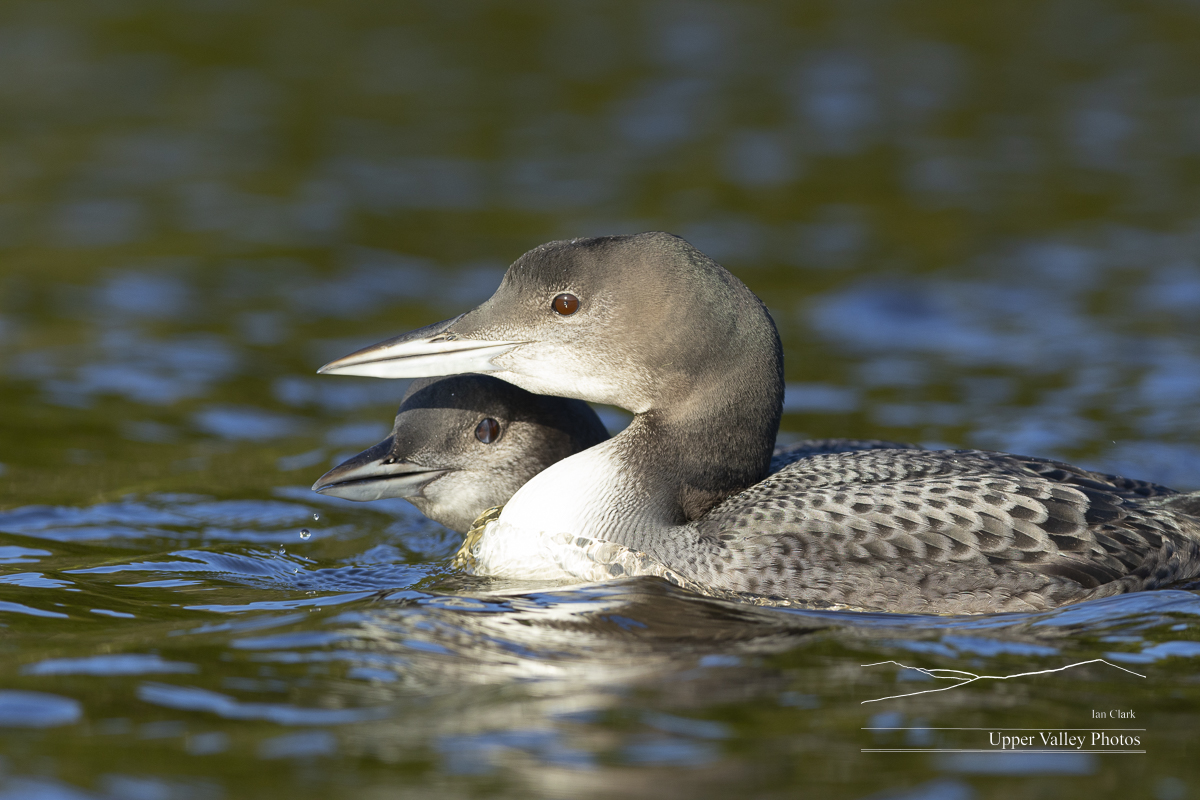

Loon Chicks at 10 Weeks
Monday morning there were stars above and a thick fog over the river in the valley below. I decided to risk a trip to visit the Eastons. Most of the trip to the pond was slow going through the fog. As I started to climb towards the pond, I rose back above the fog to find a beautiful morning.
Dad was foraging by himself near the boat launch, he paddled in close to hoot softly to me before returning to feasting on crayfish. Mom called a couple times while I was getting the boat in the water. This is the pond where Dad is banded, letting me tell who is who if I can see a leg.

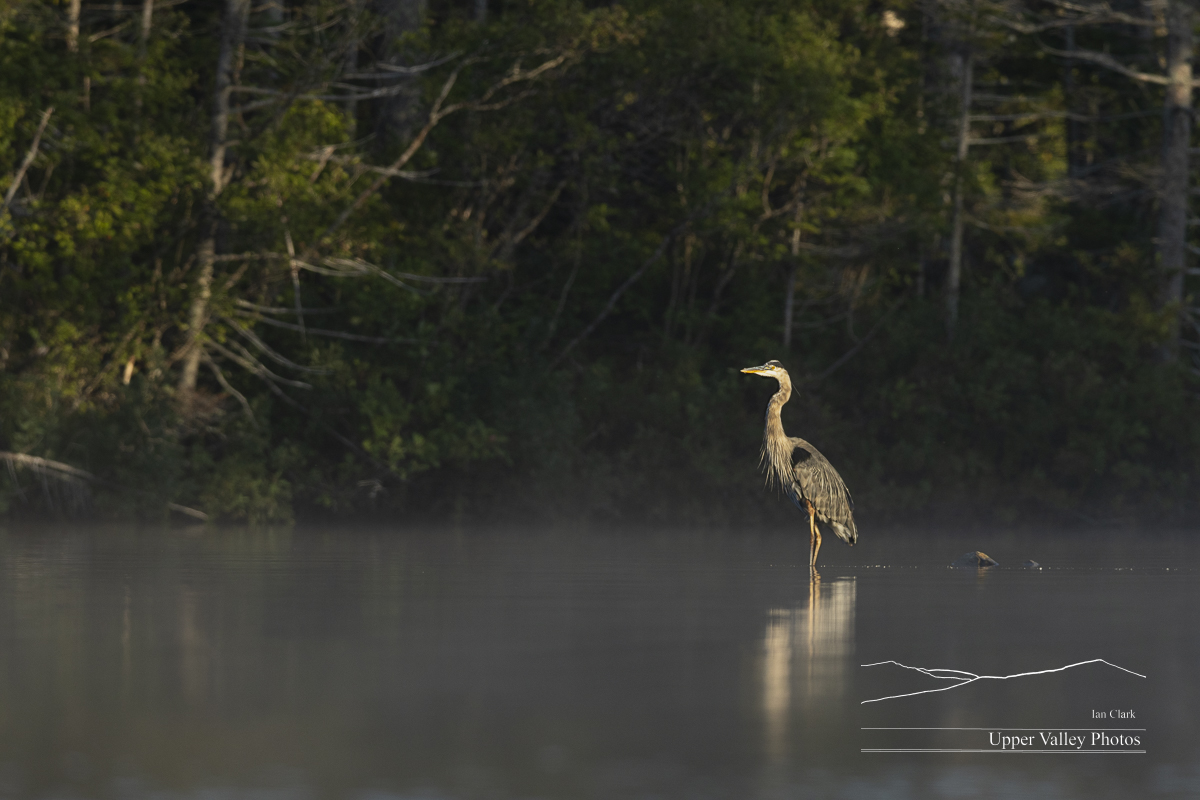
The chicks were keeping mom busy. They’re very demanding, poking and pulling feathers whenever she got near. She didn’t spend much time on the surface, she’d dive quickly when a chick got near. I’m convinced this is why the parents leave the pond before the chicks – they just want some peace.
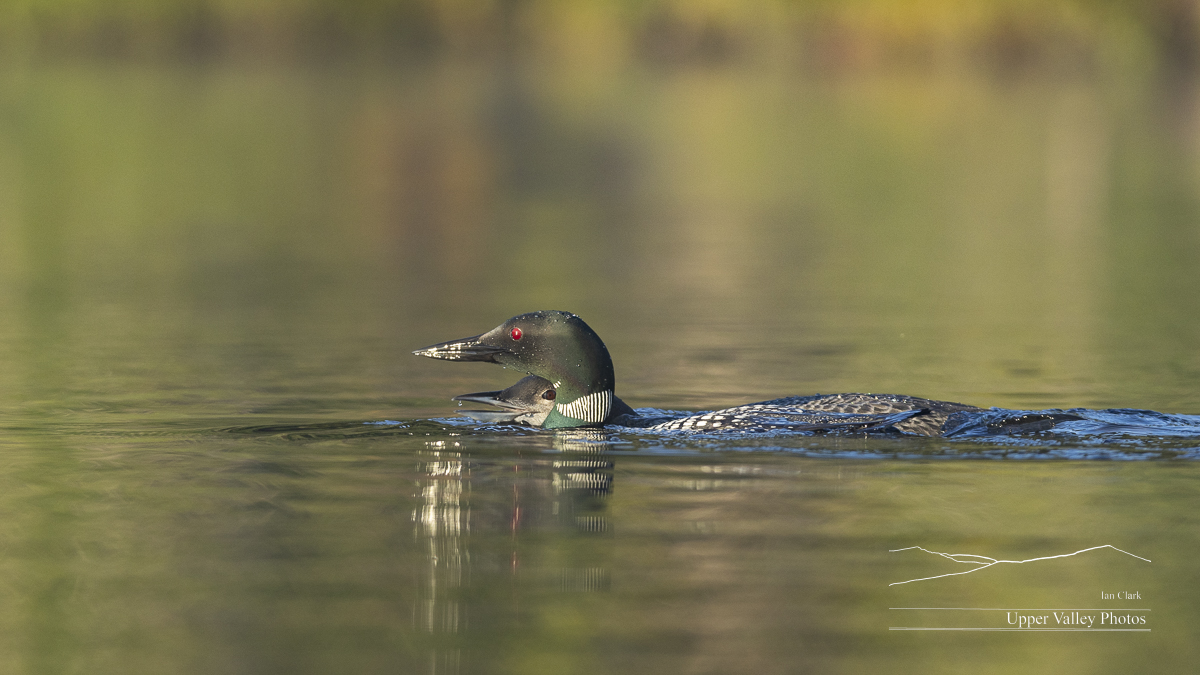
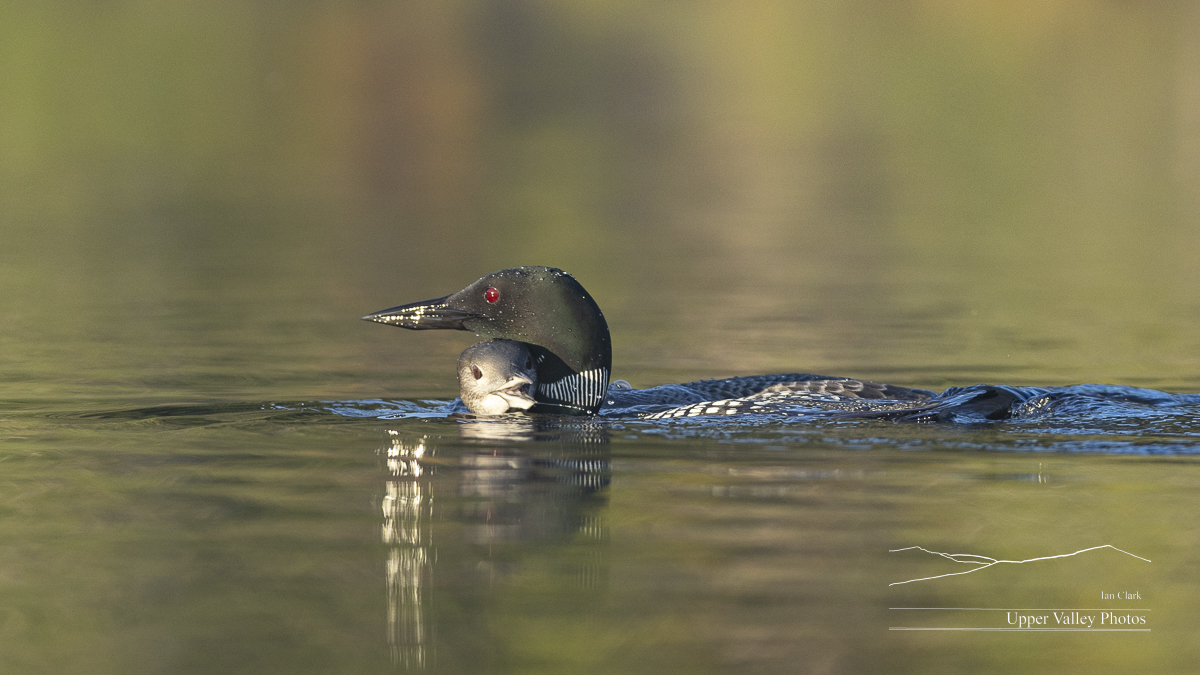

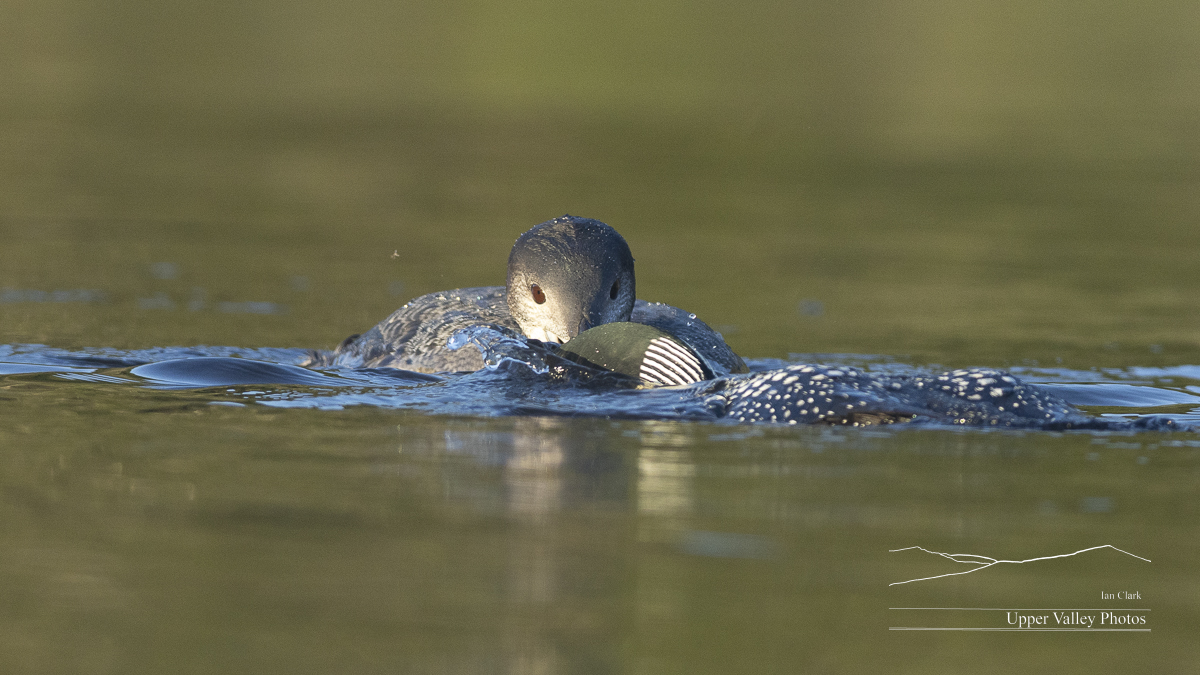

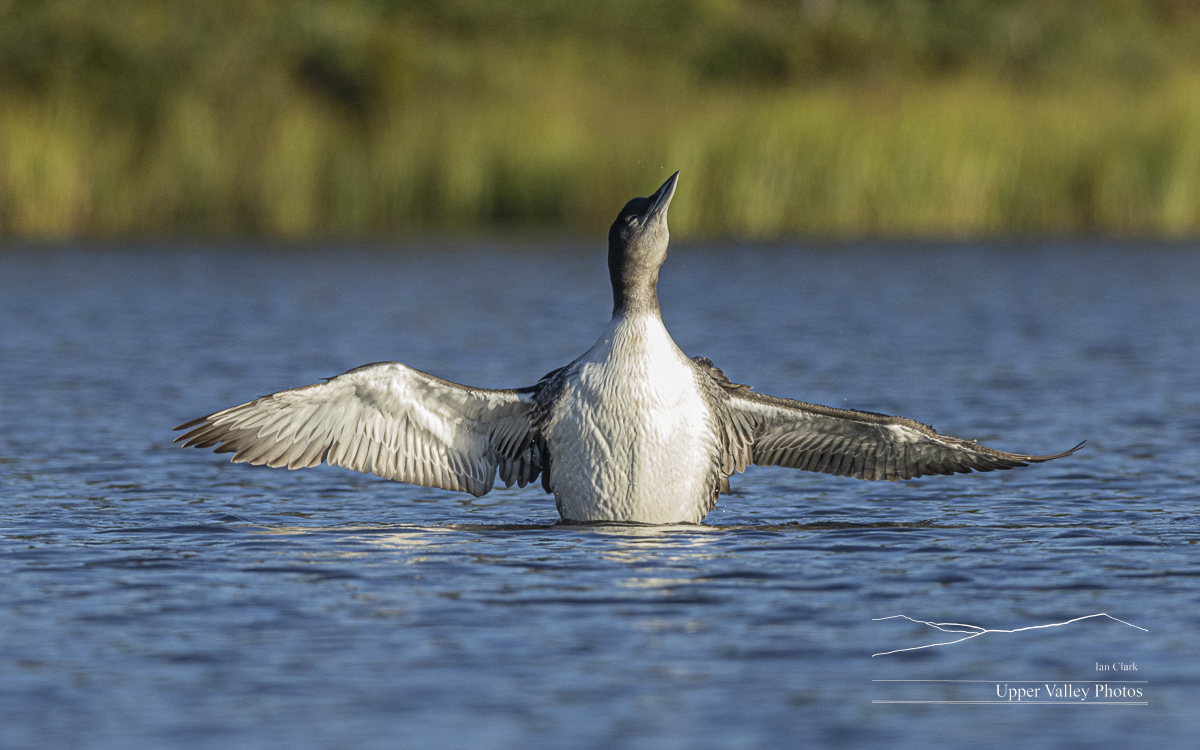
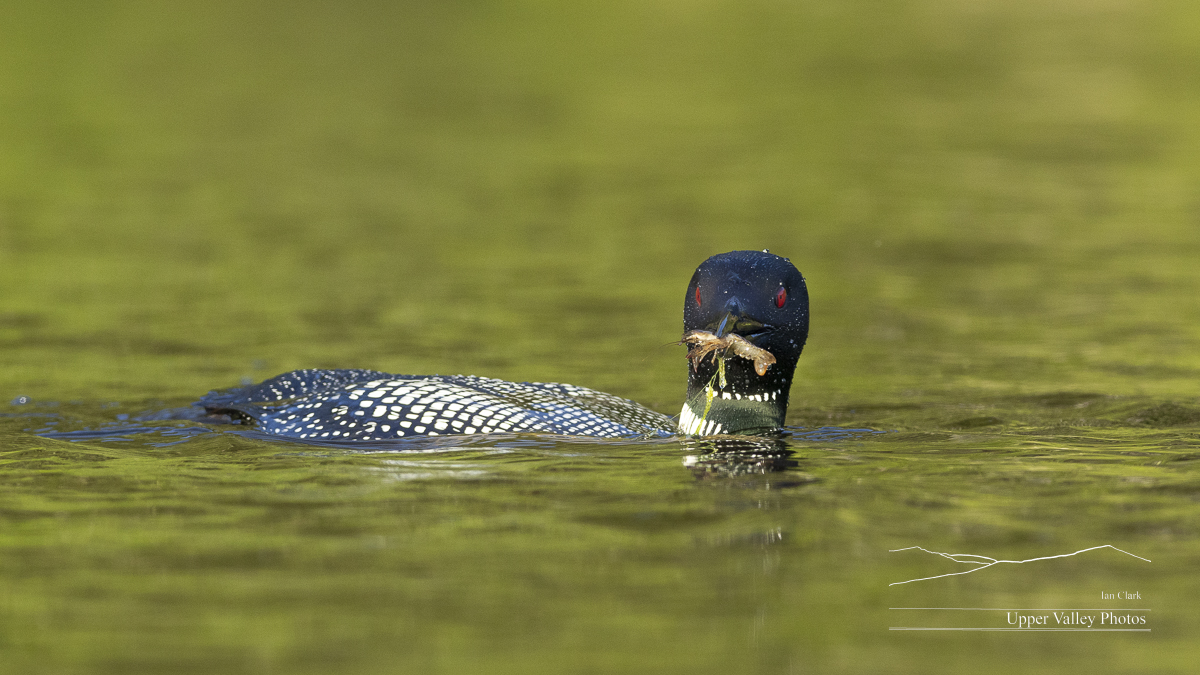


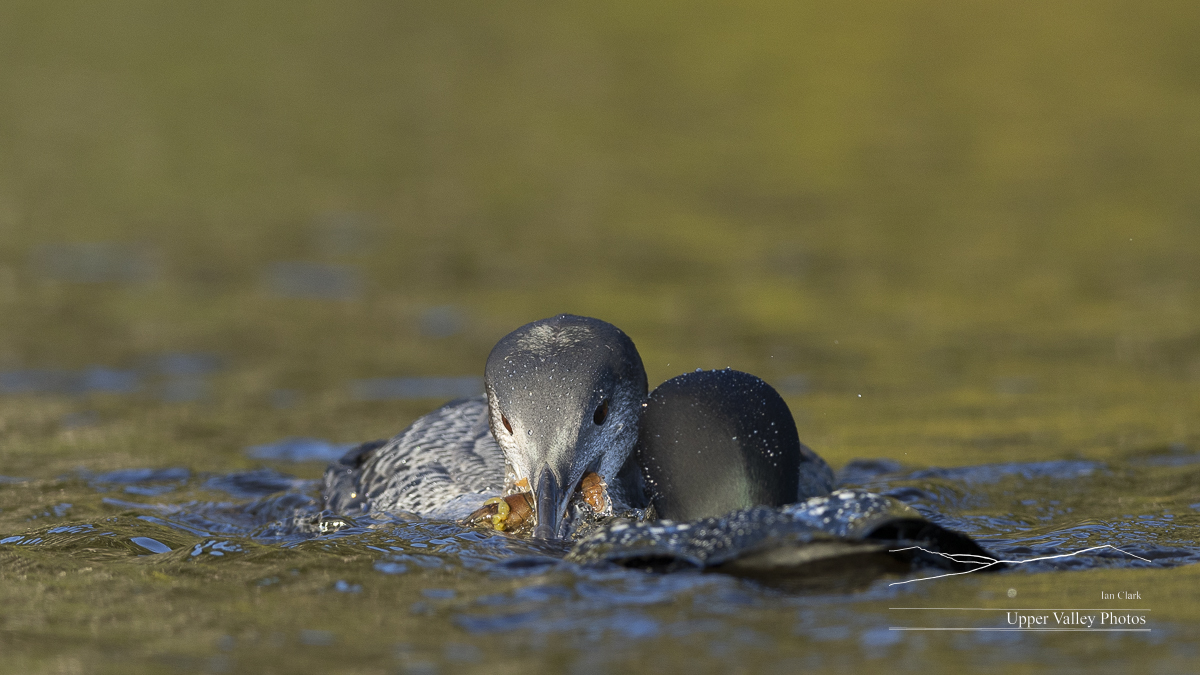
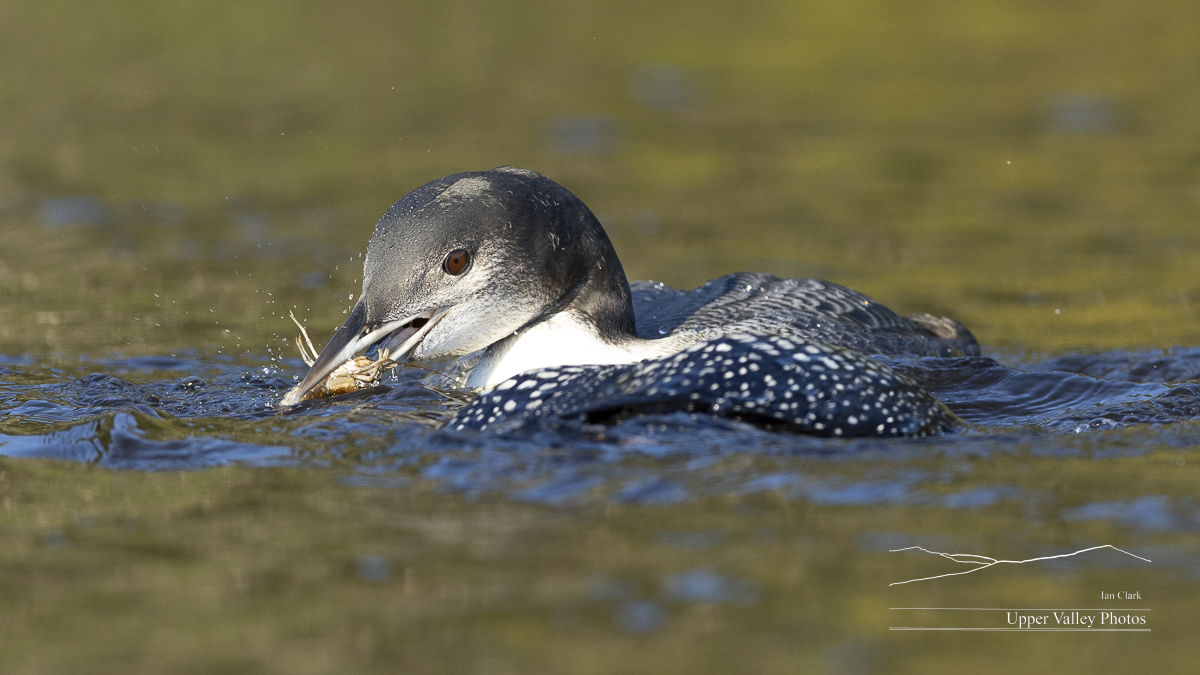

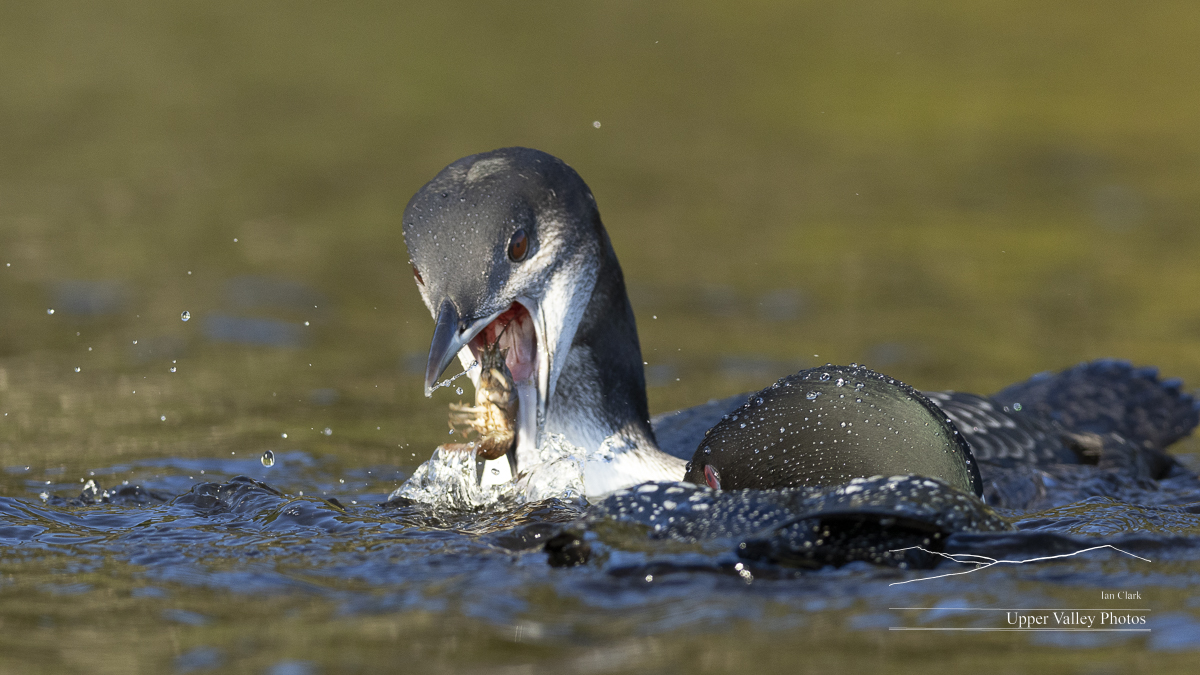

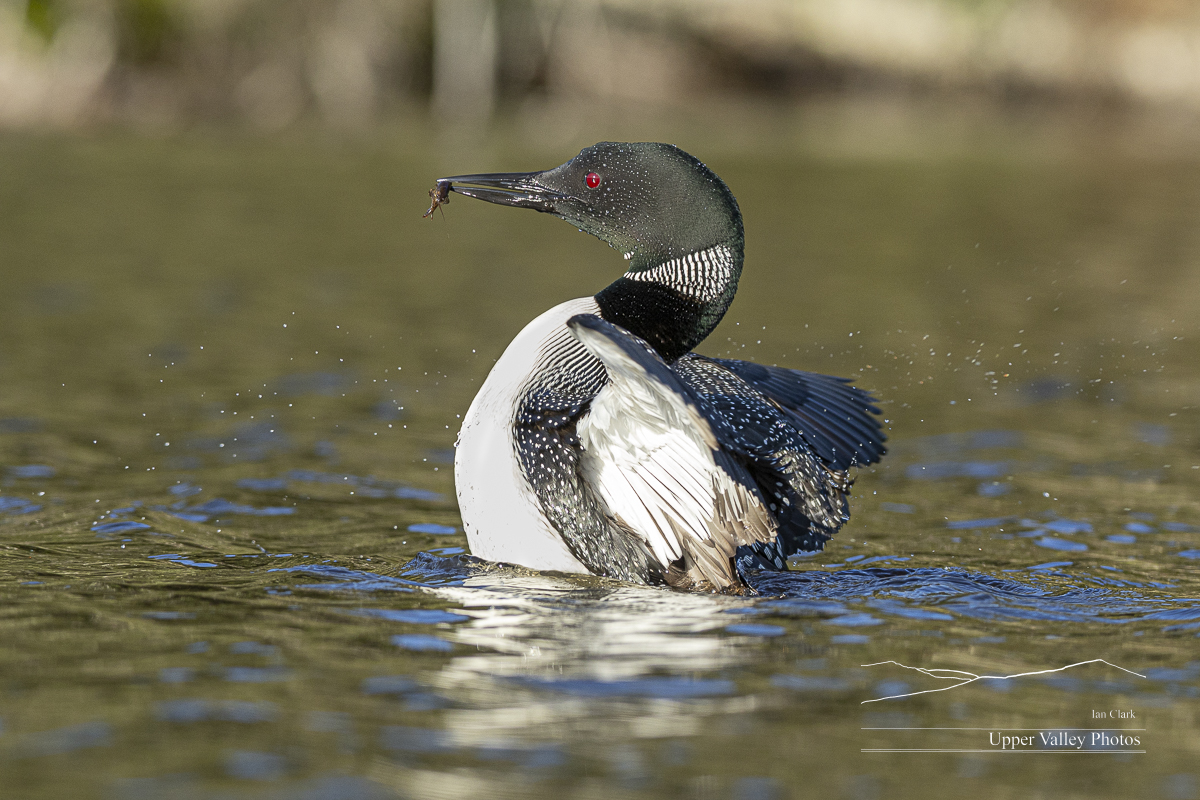


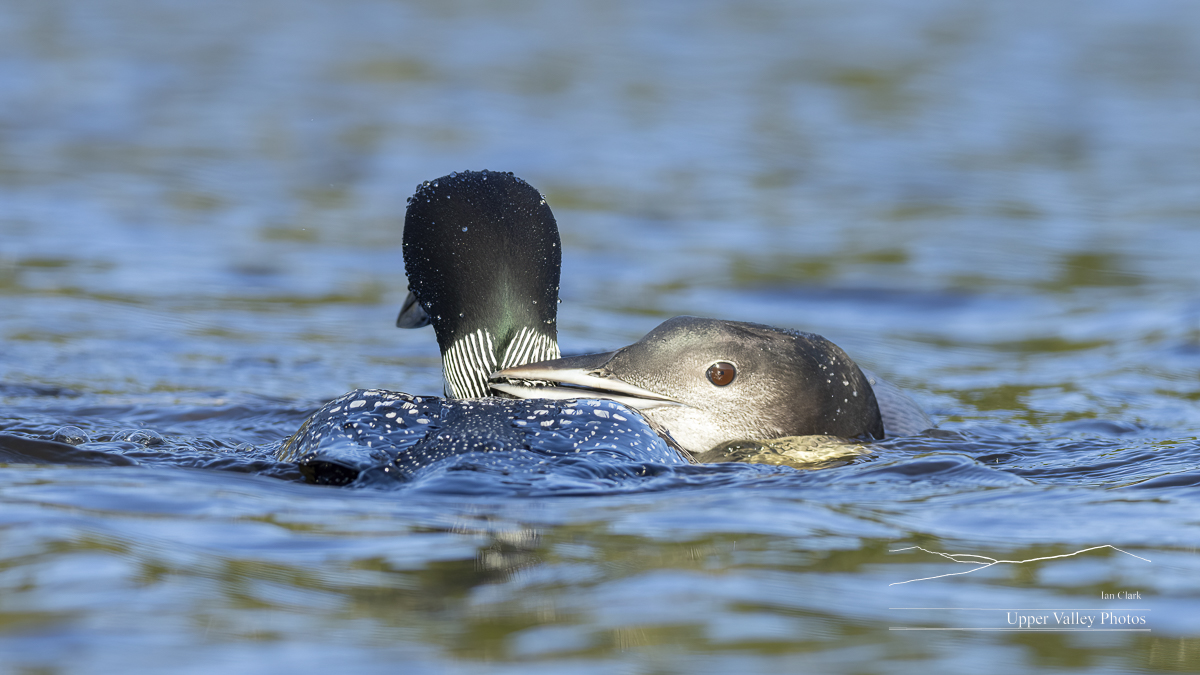
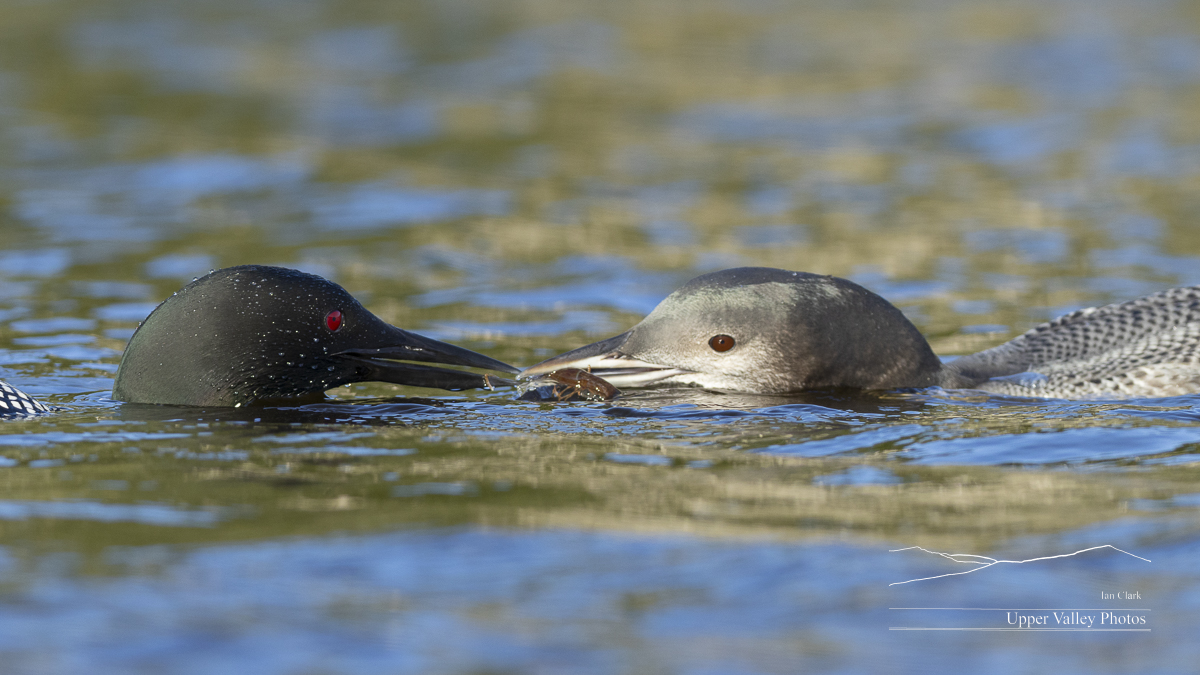
Heading back to the boat launch, I pass dad who is lazily paddling along, seemingly enjoying the peace and quiet on this end of the pond.
I was surprised the fog hadn’t shown up on the pond, there’s usually a period where the pond gets foggy as the fog lifts from the valley. Driving back towards home, I discovered why – the fog was still sitting heavy on the river.
Back at the house, the goldfinches have discovered the thistle I left for them.
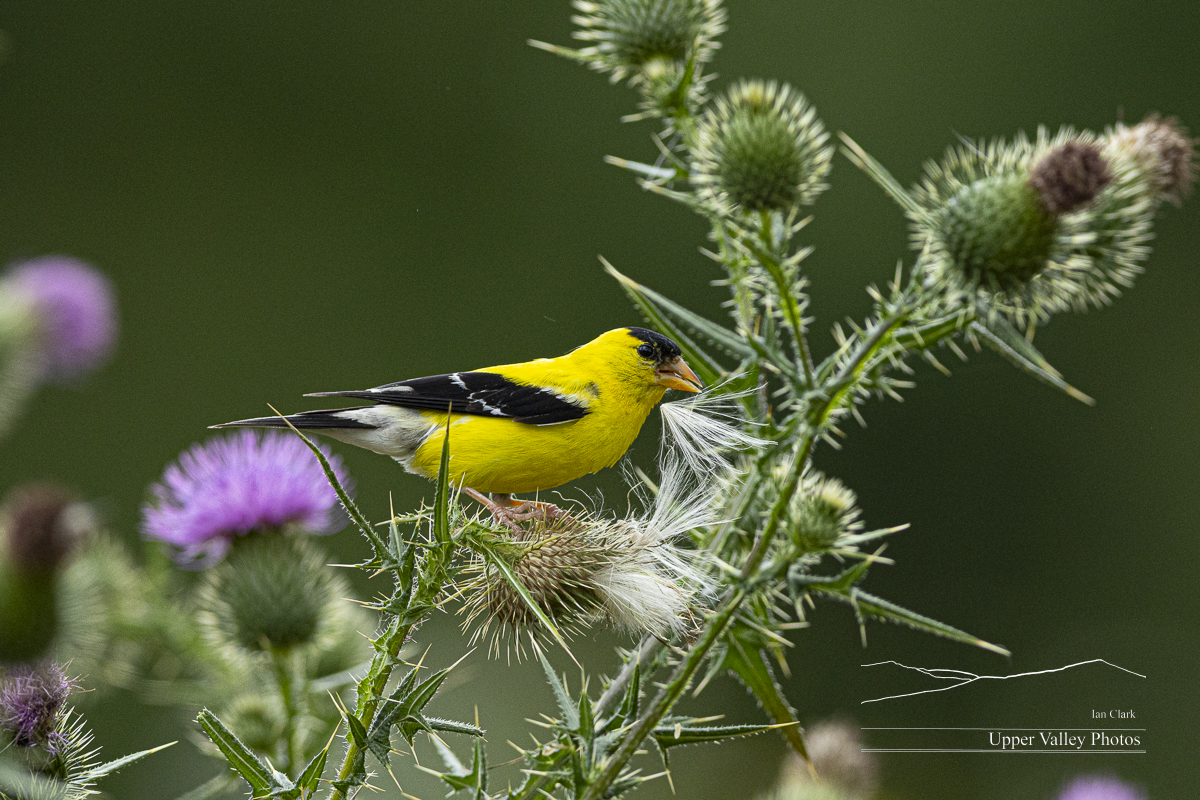
Loon Chicks at Five Weeks
The rain let up enough for me to get out to check on all three loon families this week. And, I only got caught in a shower once.
The League of New Hampshire Craftsmen’s Fair is coming right up, August 5th through the 12th. I’ll be down there with lots of wildlife and other photos. Stop by booth 726 and say hello. All the details for the fair are here.
I visited the Middletons last night. They’re the ones that lost their chick. On the last visit, they showed signs they might be courting again. That was before the heavy rains and flooding. We were spared the worst of the flooding, but did get significant rain. A friend on the pond has kept me updated. She says the loons have had one or two intruders on the pond regularly. When I visited, the hummock where they’ve nested the last several years has been washed away, with no sign of another nesting spot. There was an intruder on the pond, with some circling and posturing but no outright fights.
This morning, the forecast was for rain and thundershowers. When I got up, there were stars visible. I headed out to check on the Westons. One of the adults and two chicks were foraging not far from the boat launch. The other adult soon came down the pond to join them. They were in shadows, I headed up the pond to see who else might be about. The rain held off until I got to the other end of the pond. I had a soggy retreat.
On Wednesday morning, the forecast was mixed and there were a couple stars between clouds when I got up. I took a chance and headed east to visit the Eastons.
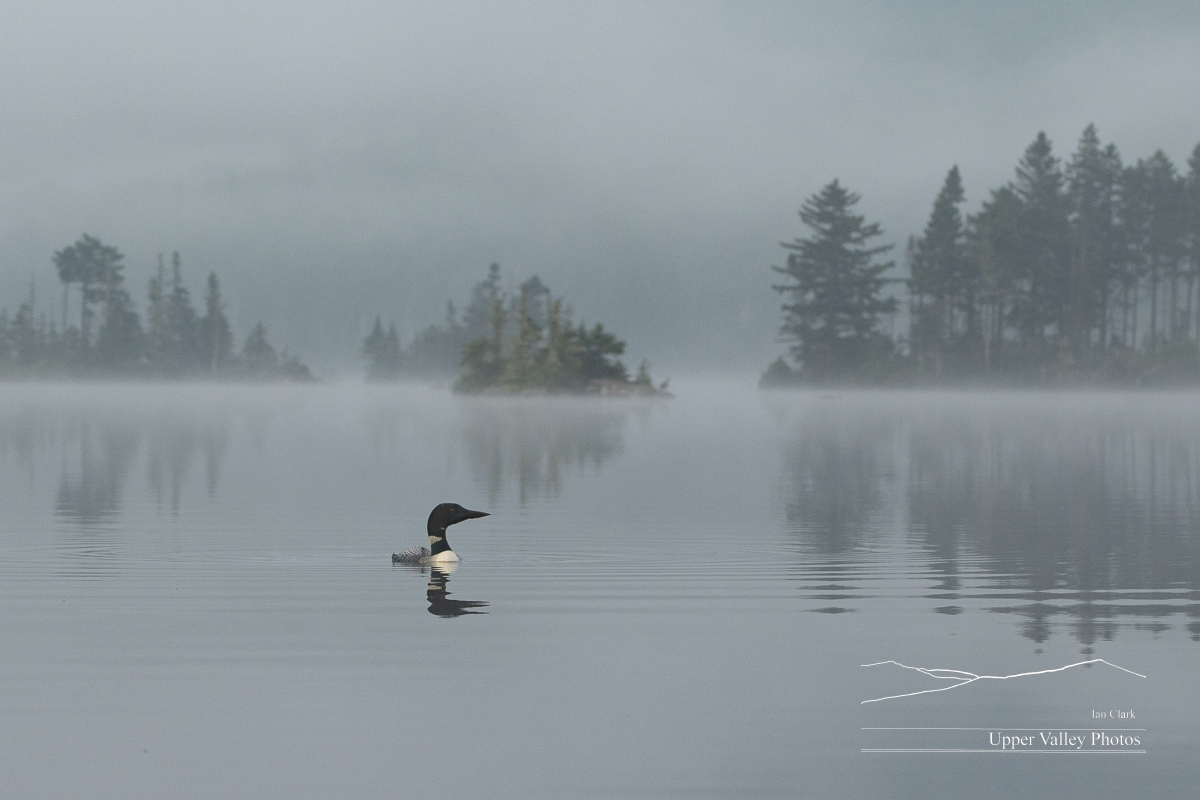

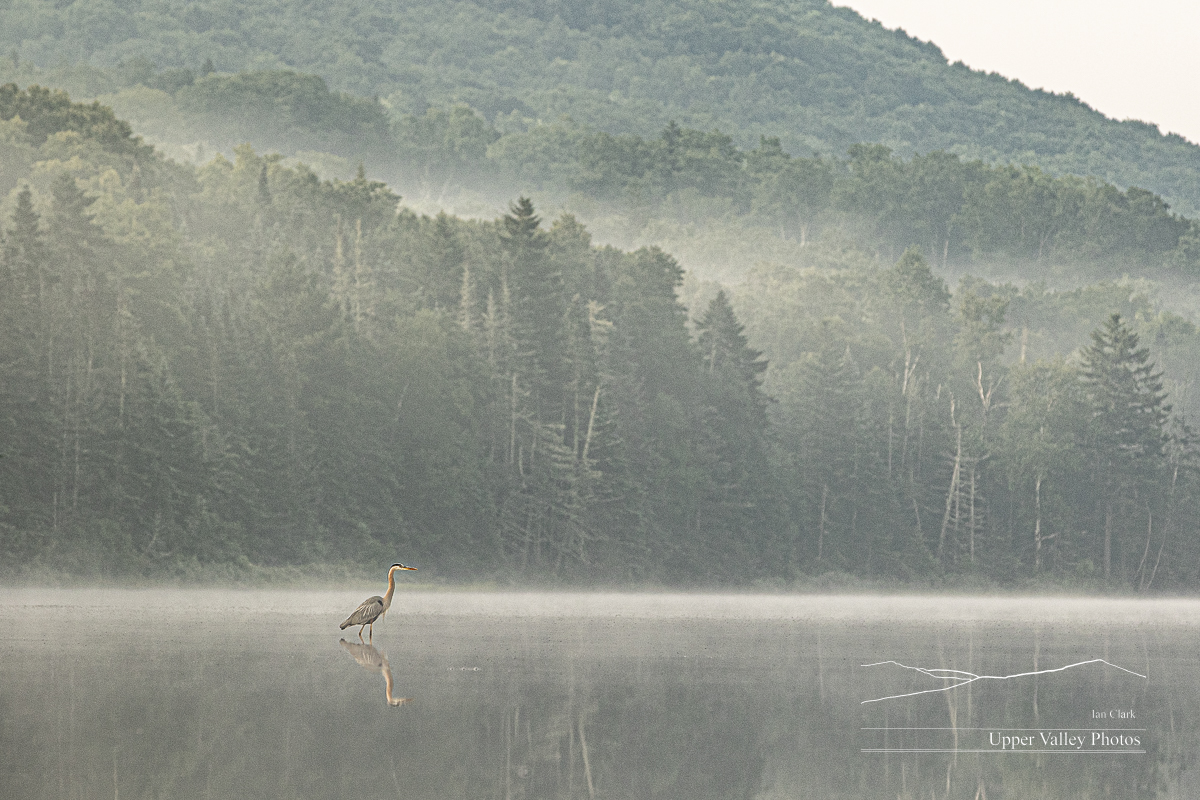
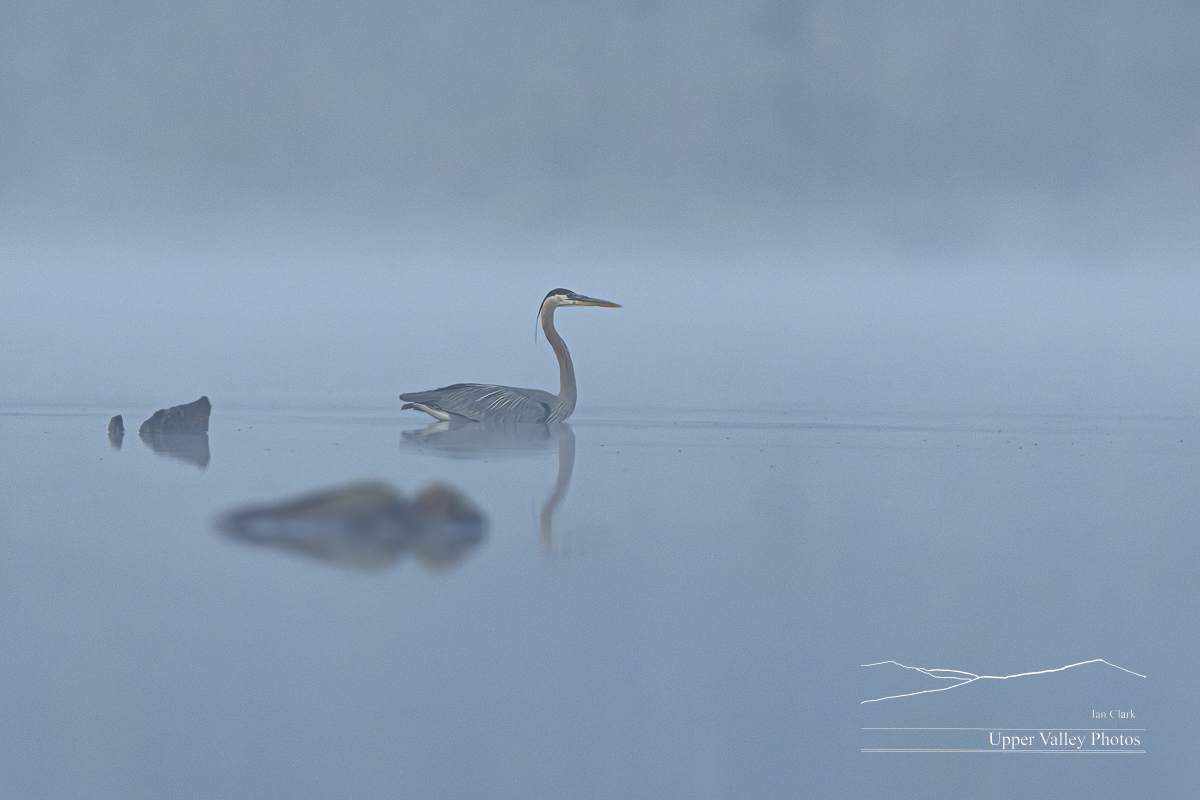
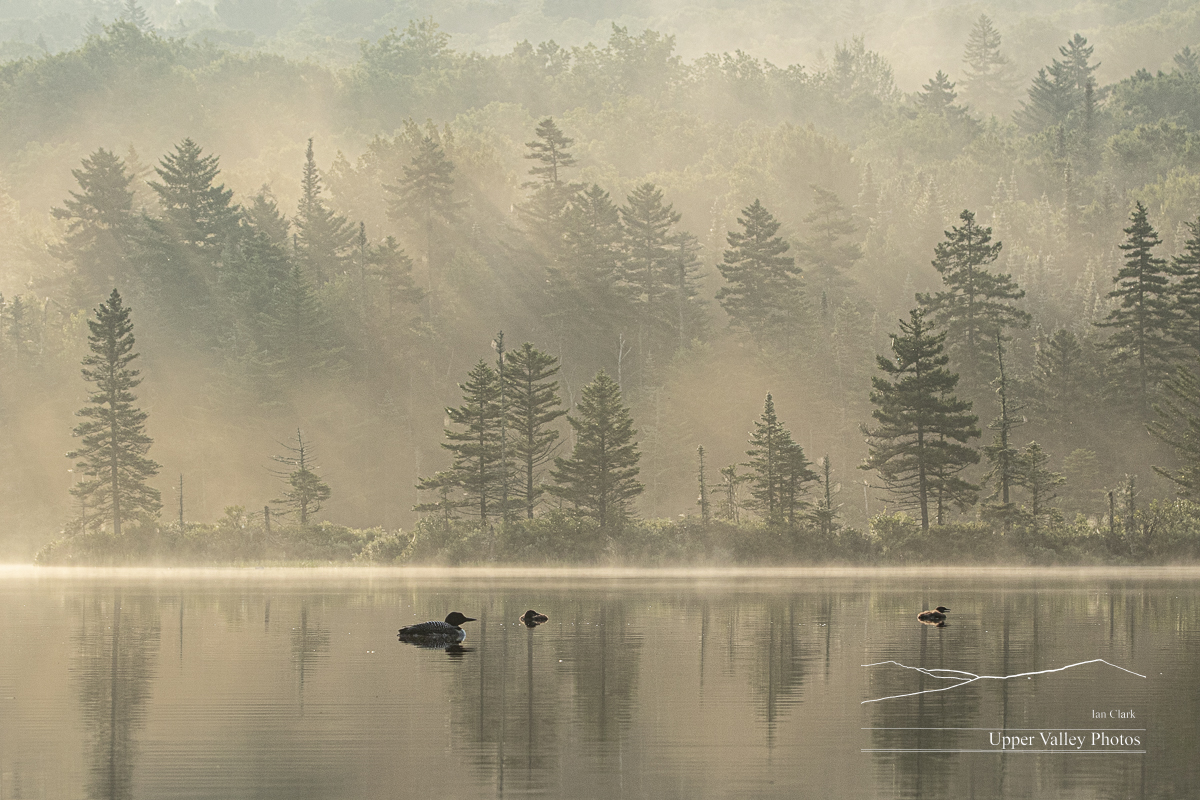
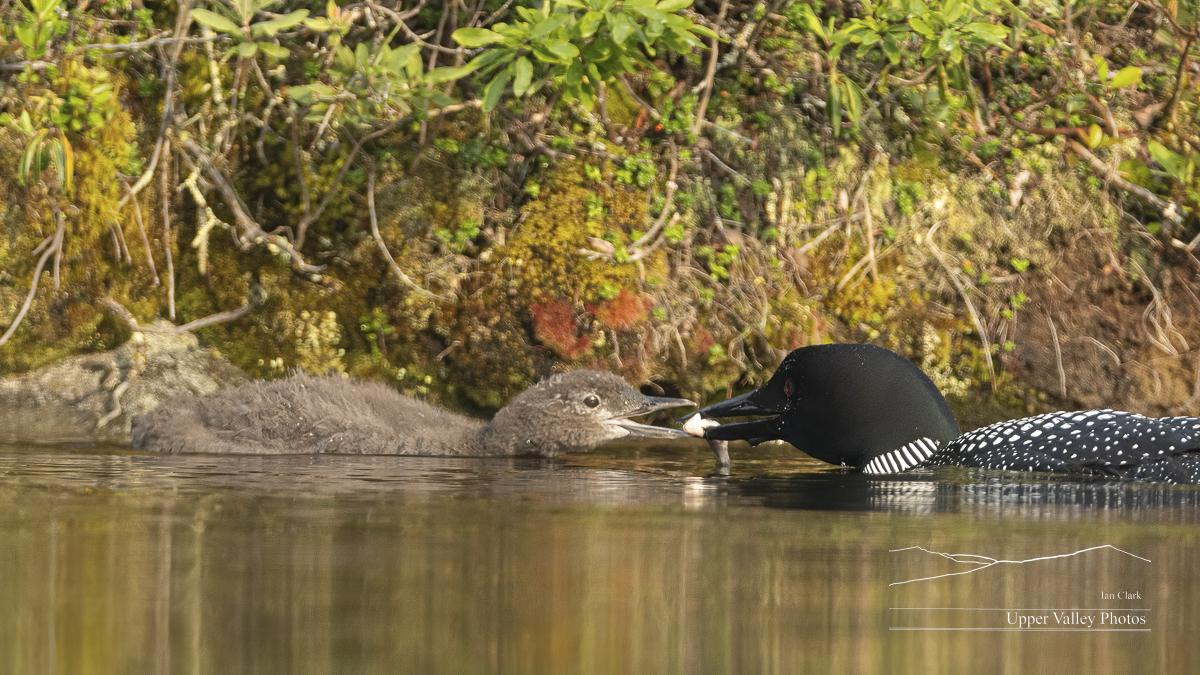
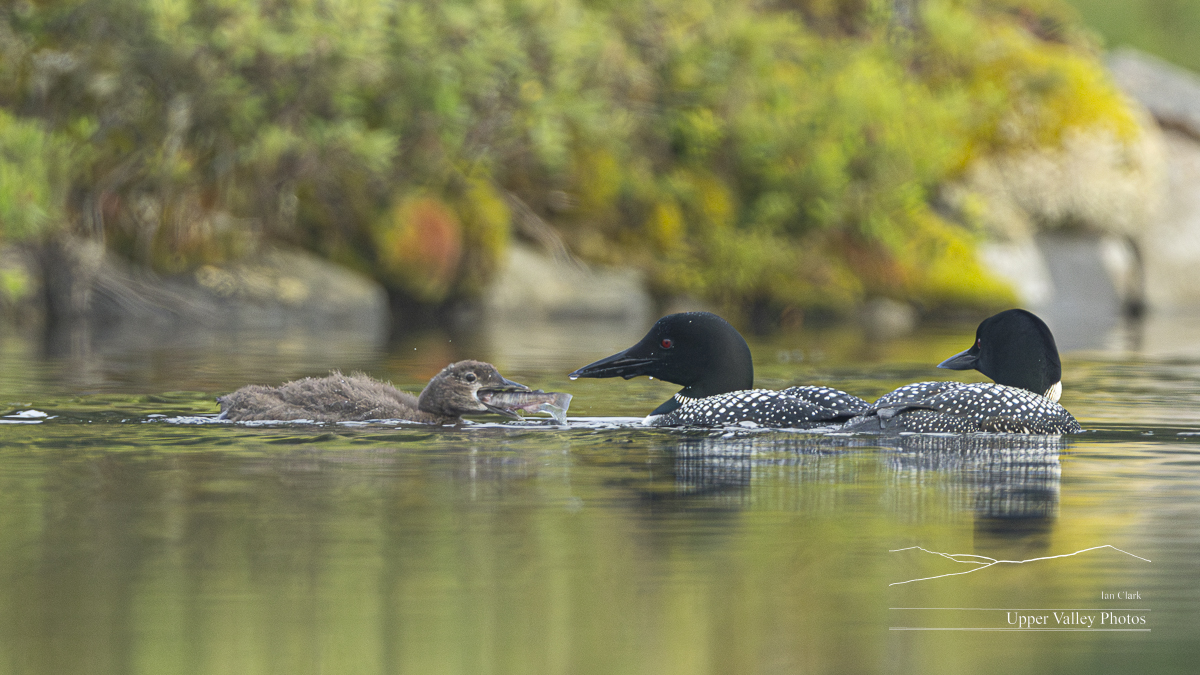
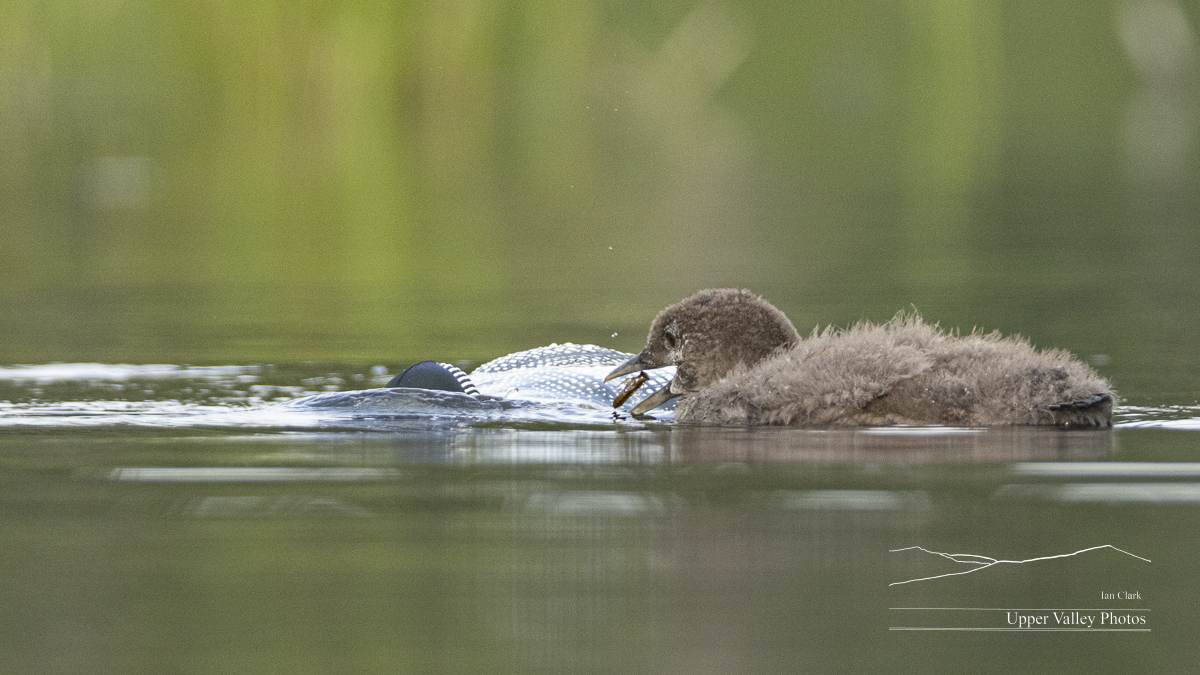

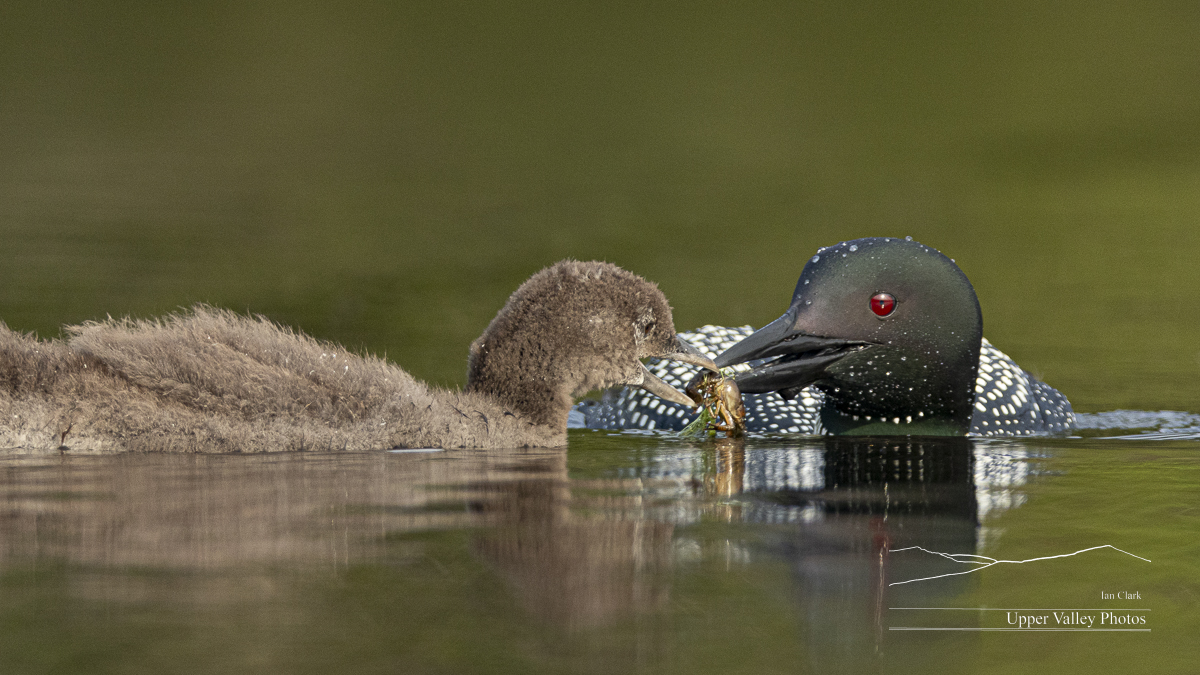
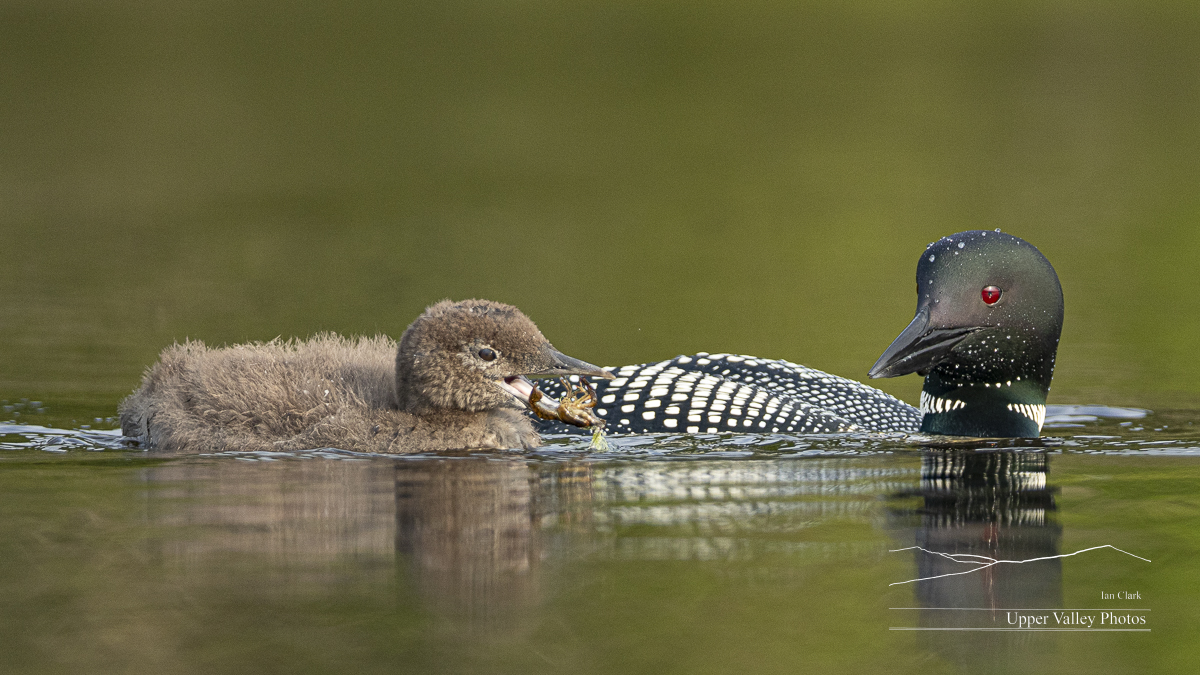
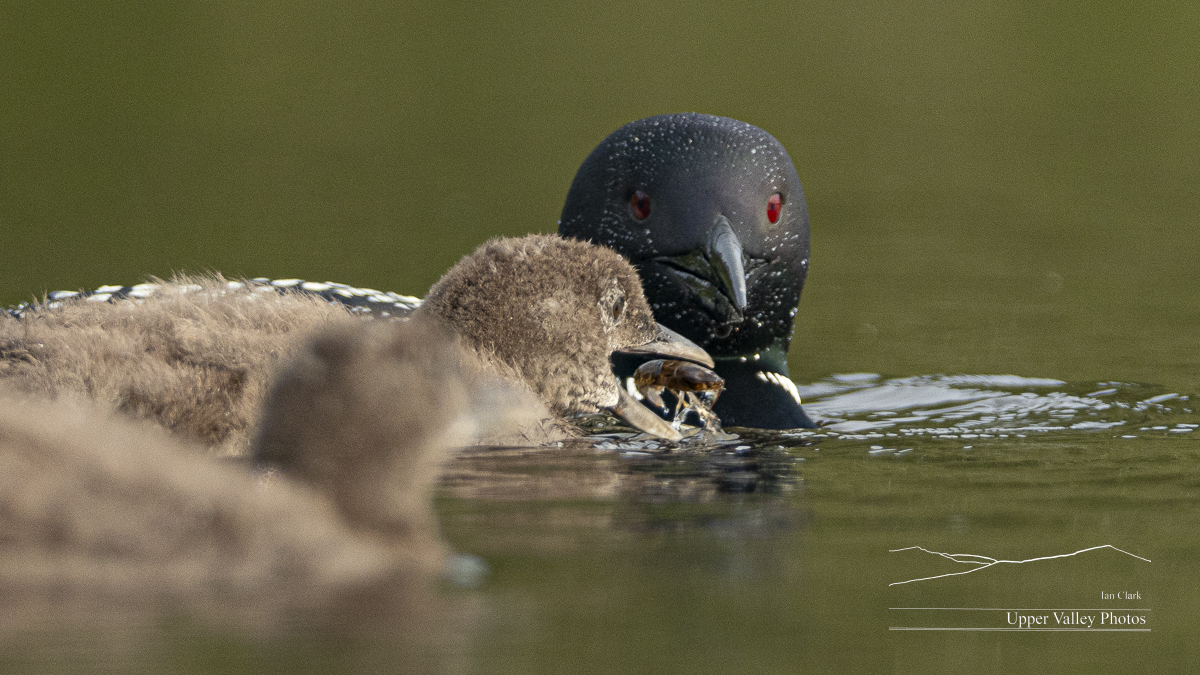
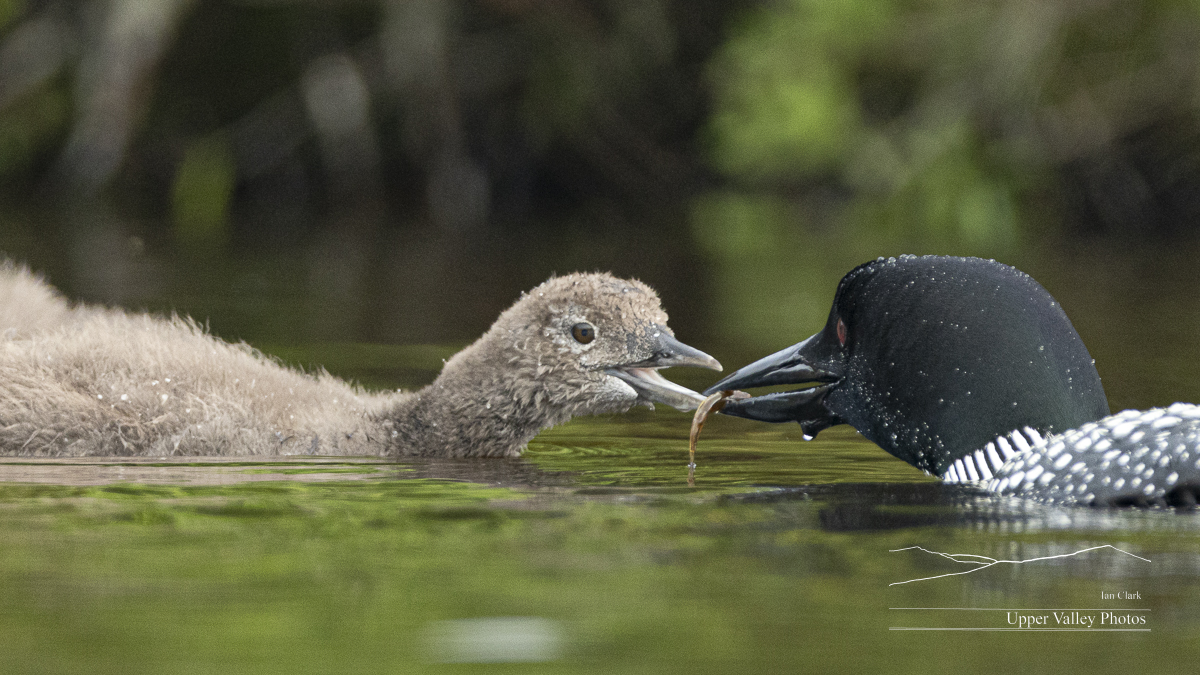

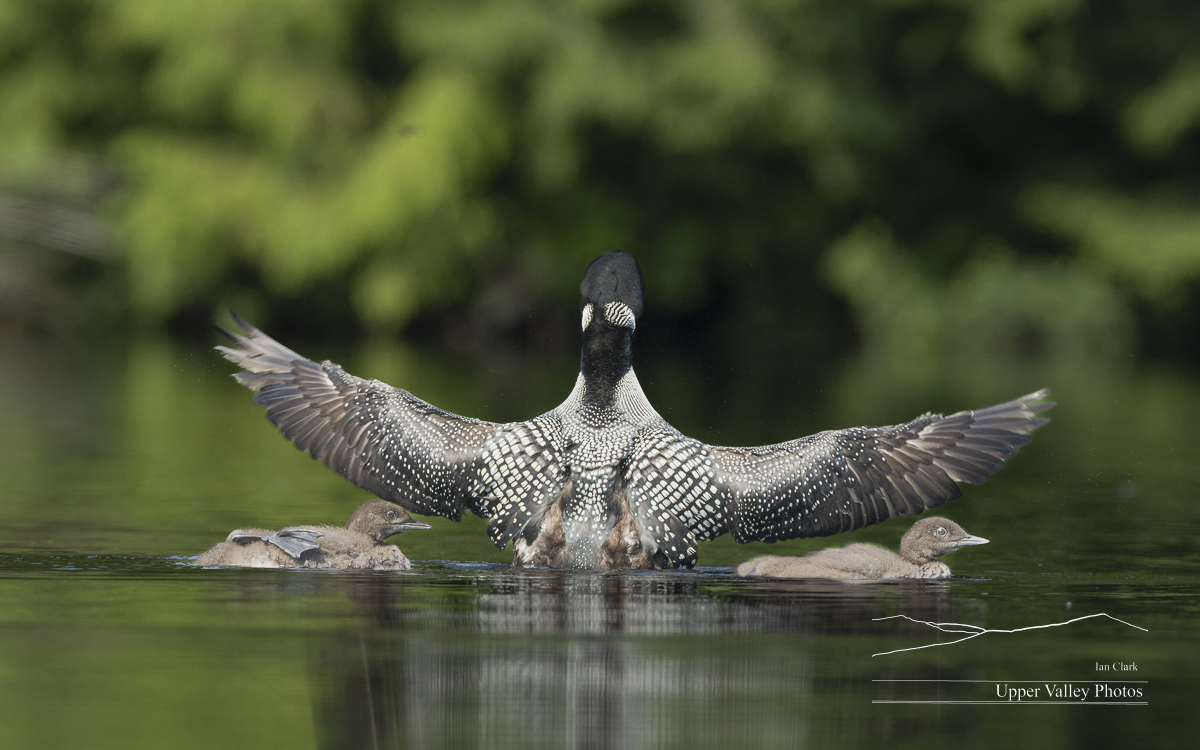
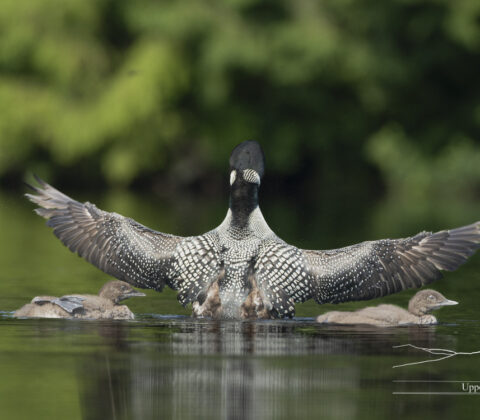
Checking in on the Loon Families
Bad weather and too many chores kept me from checking on the loons for a time. When the weather cleared this week, I was quick to hit the water.
I’ll be down at the League of New Hampshire Craftsmen’s 90th annual Fair in Sunapee, NH, August 5th to the 13th. Stop by to have a look. All the Fair details here.
Let’s start with a few pix of the Eastons from the day after my last post. The chicks are two and three days old. This is the pair where dad is banded, allowing me to tell them apart – sometimes.

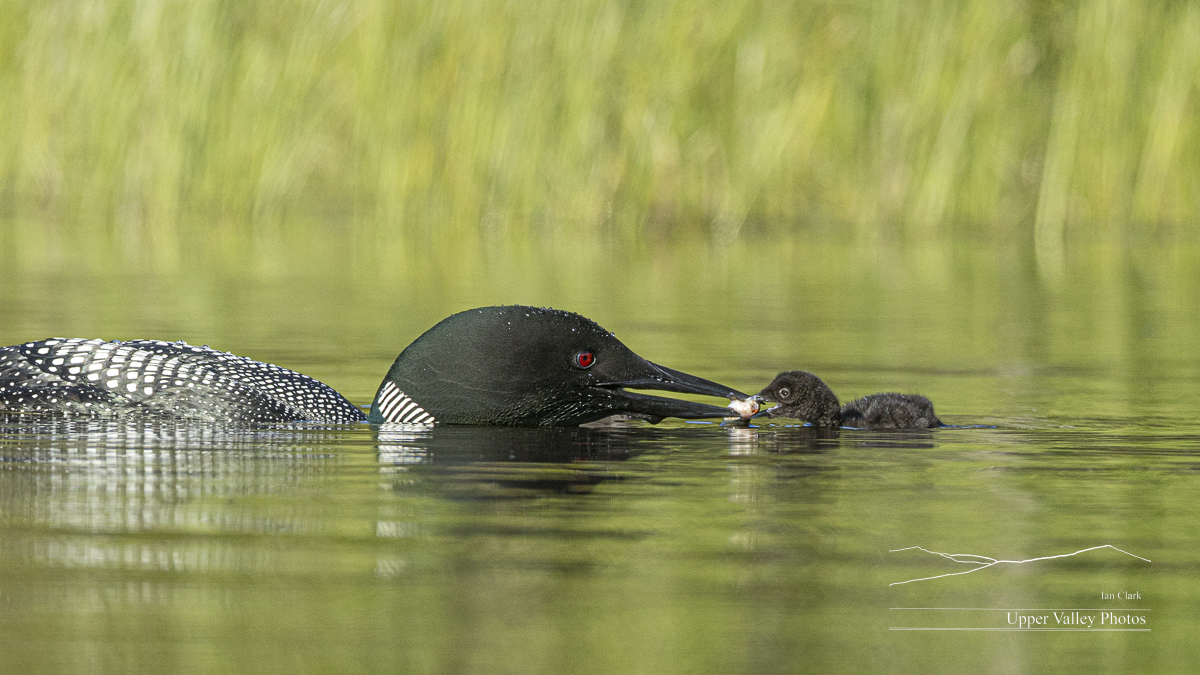

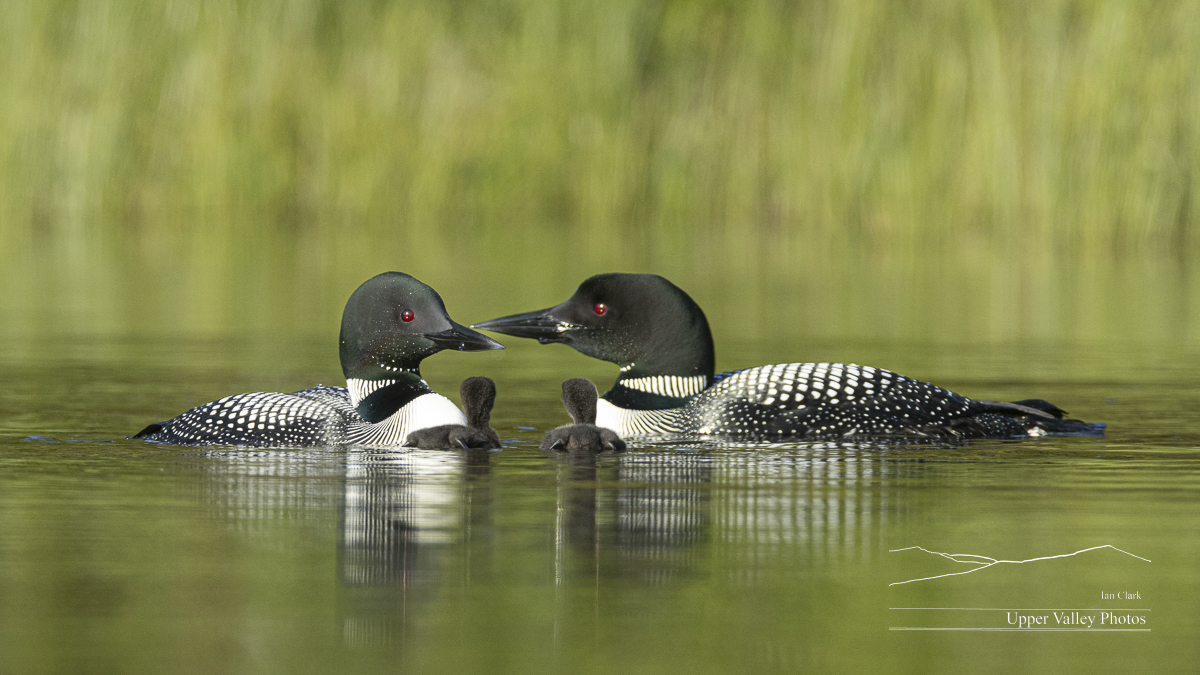
That evening, I made it over to check on the Middletons.
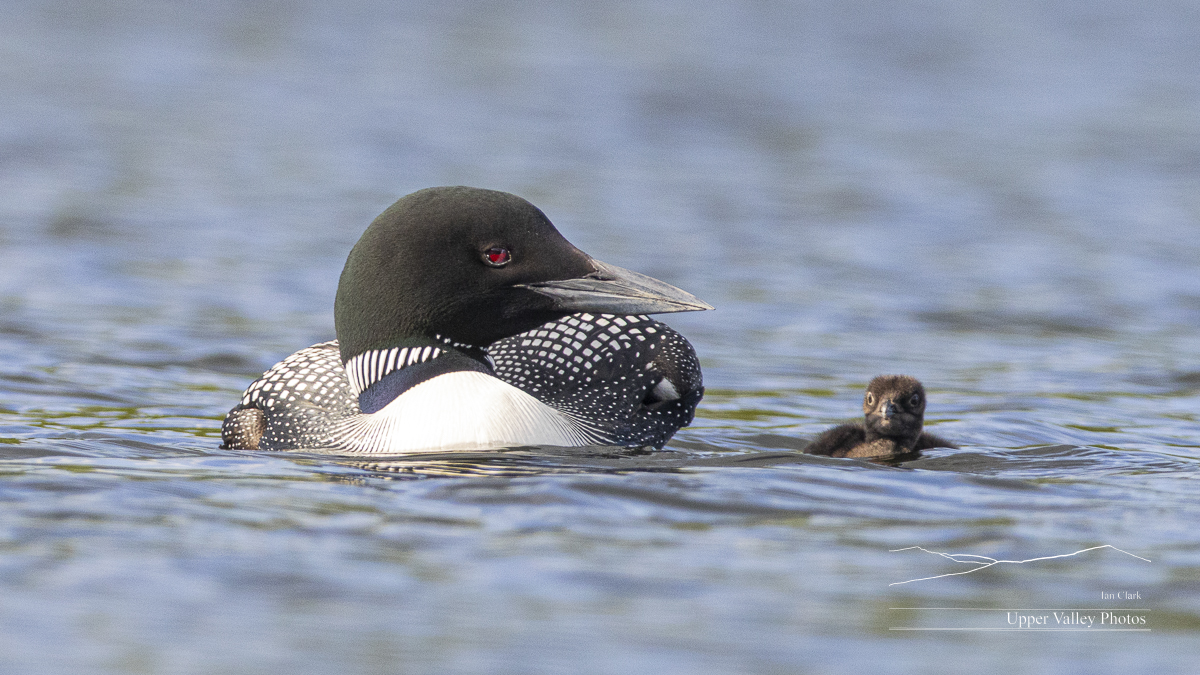
The next morning, I returned to visit the Eastons. They spent most of their morning feeding the chicks.
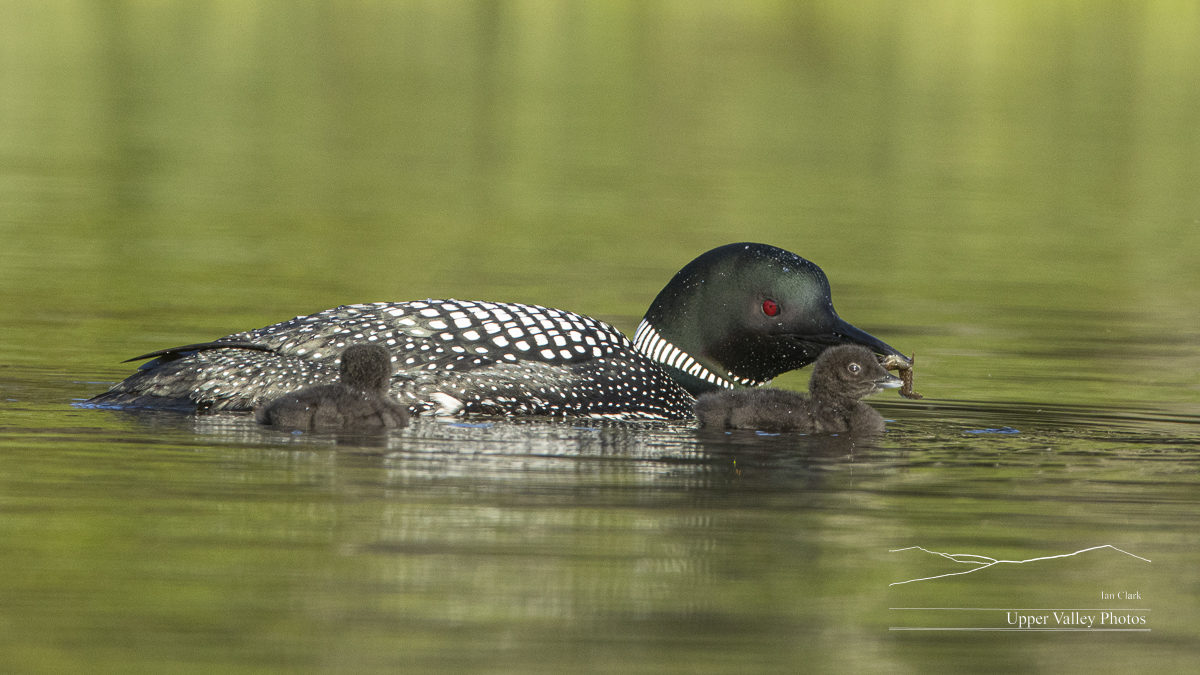
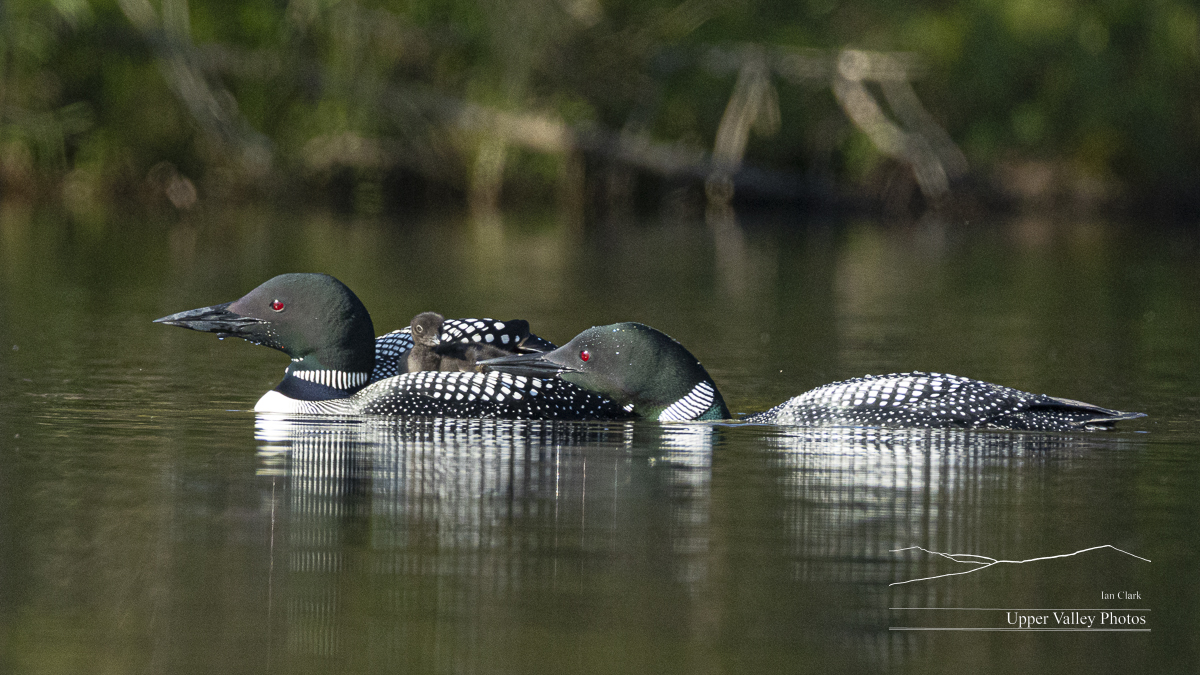
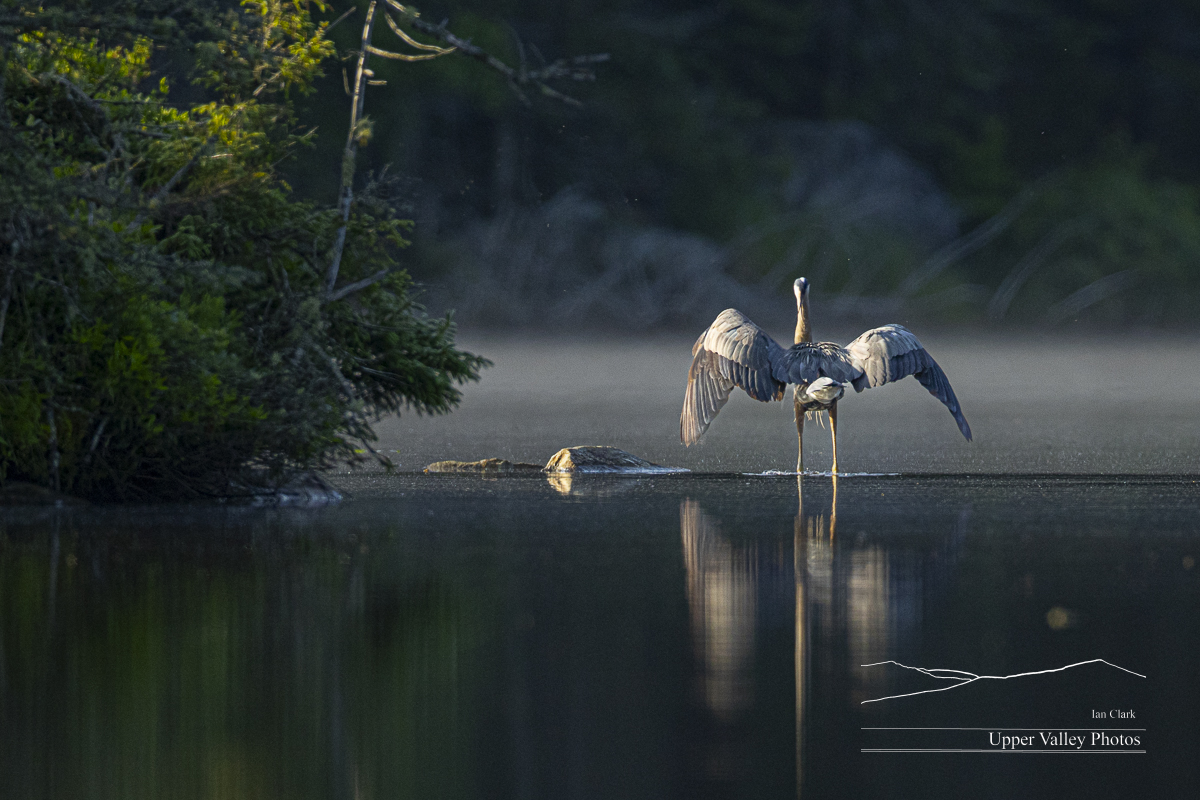
I didn’t make it back out until July 5th, when I again visited the Eastons.
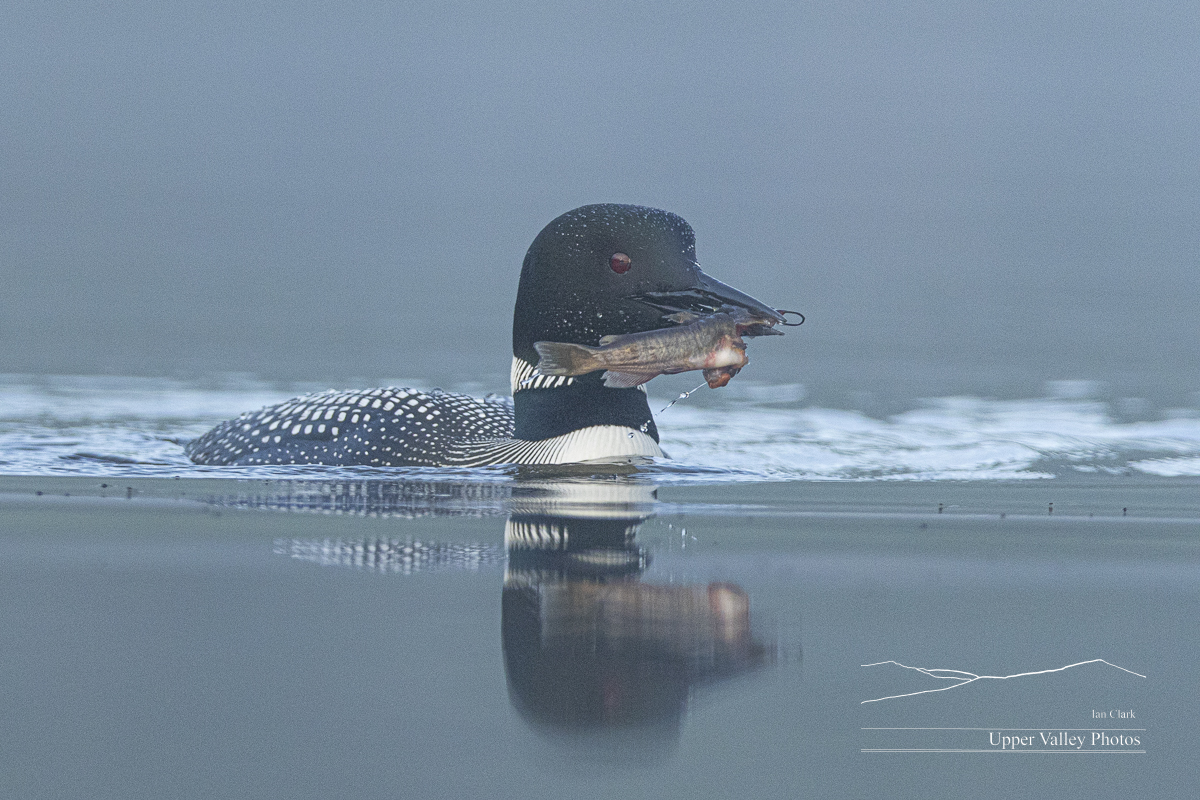
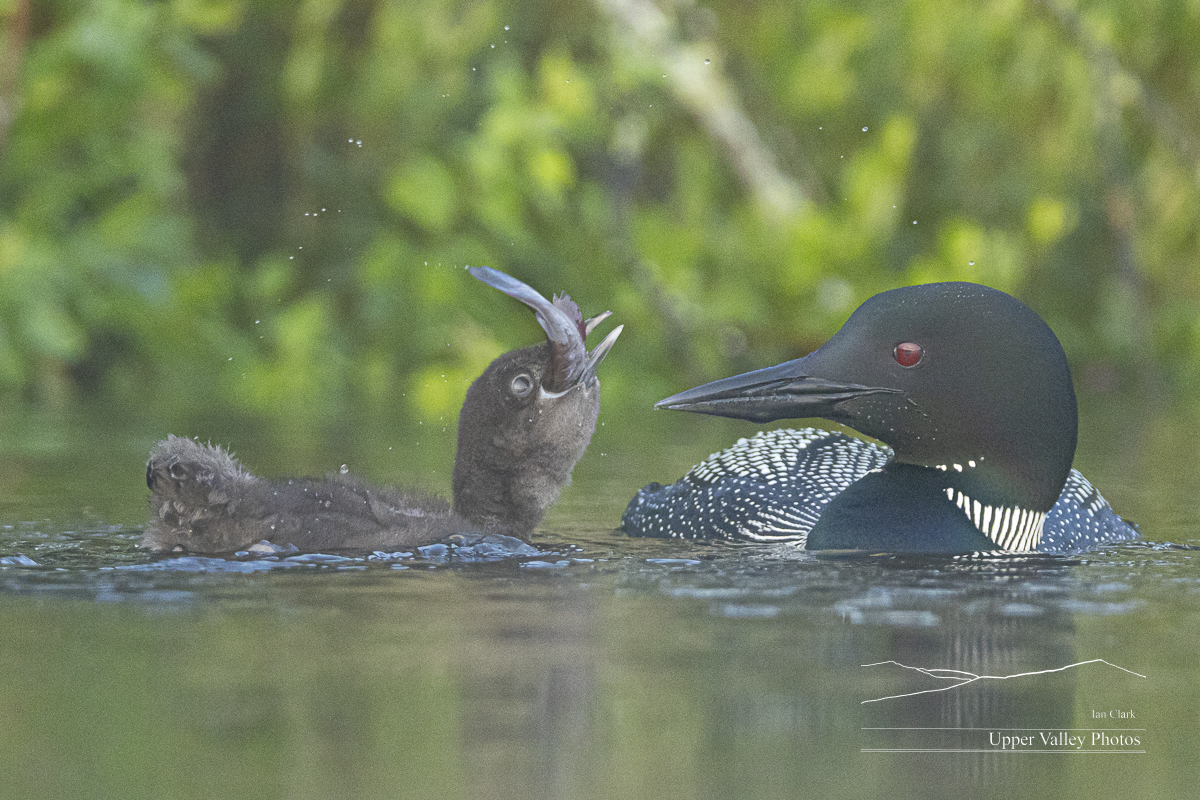


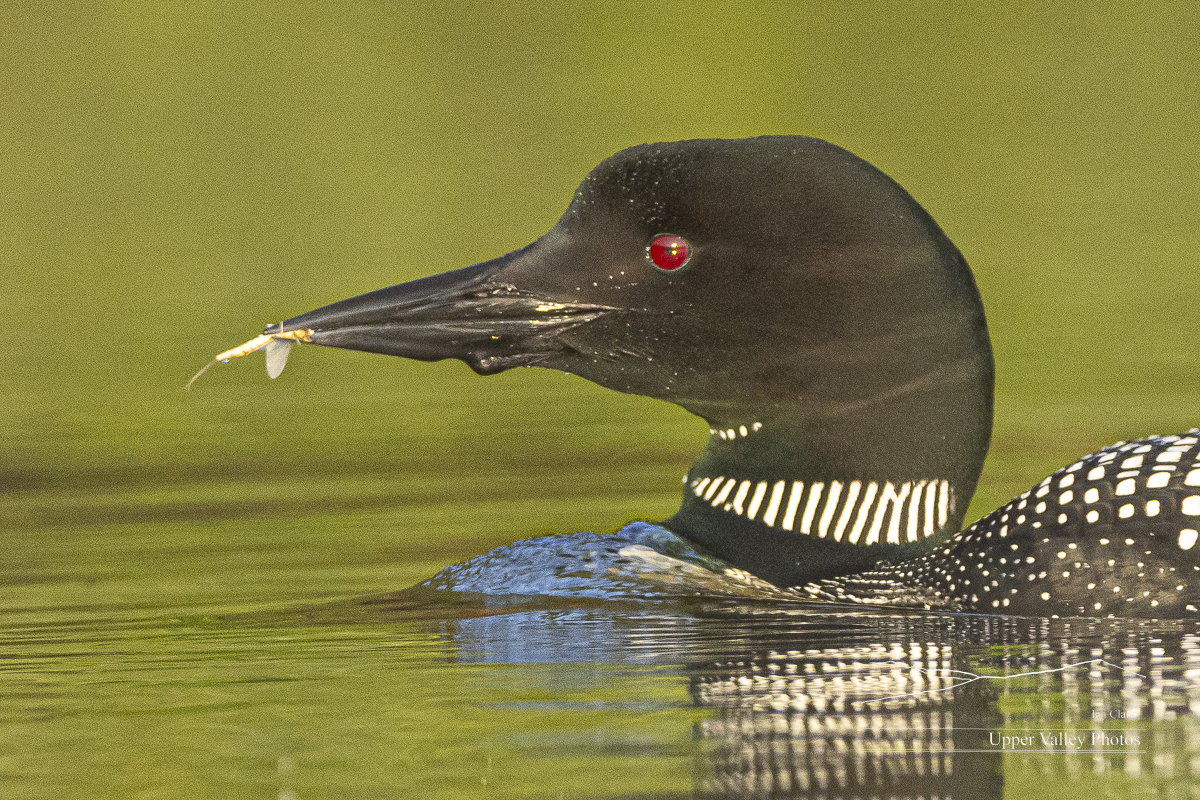
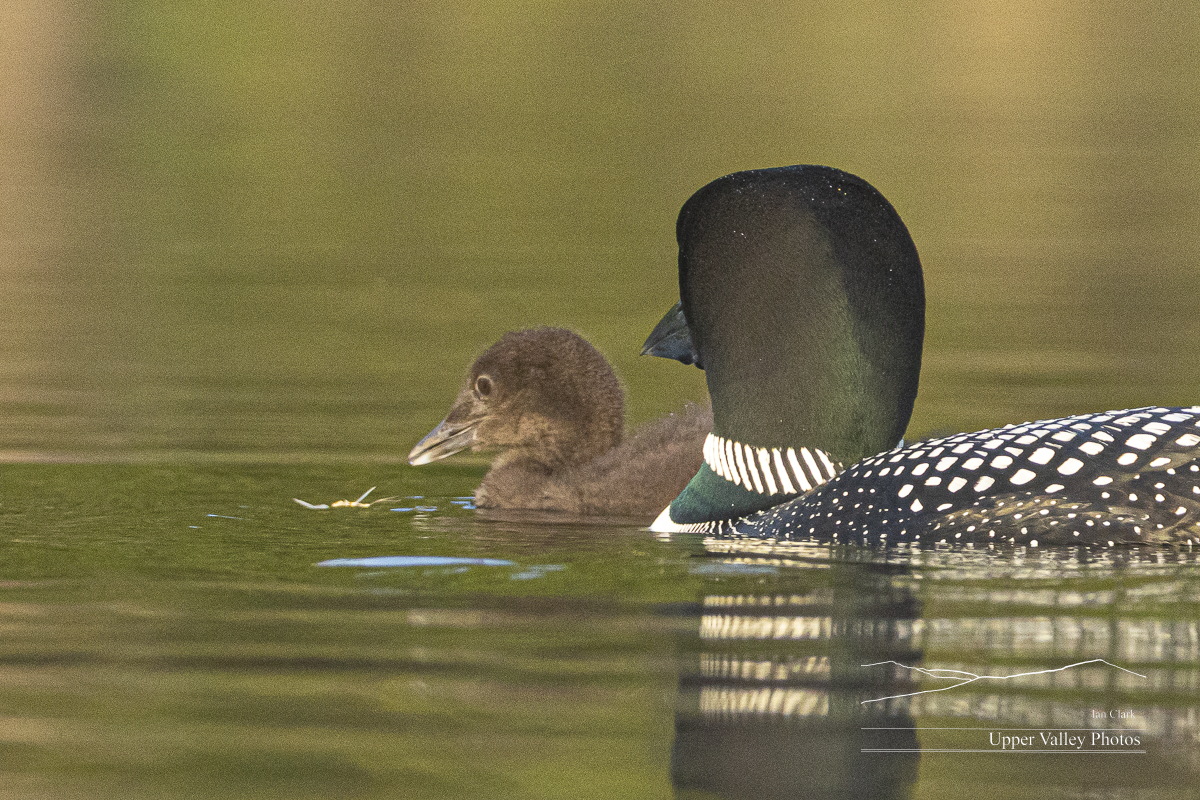
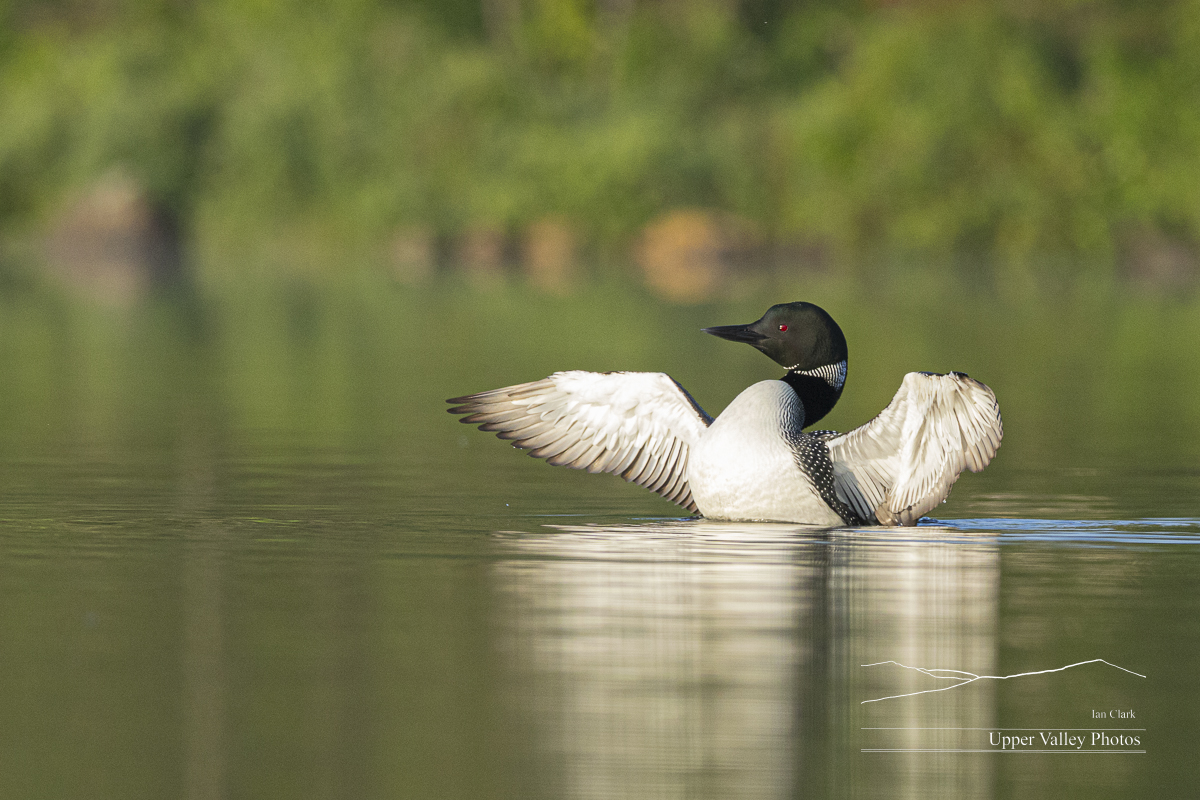
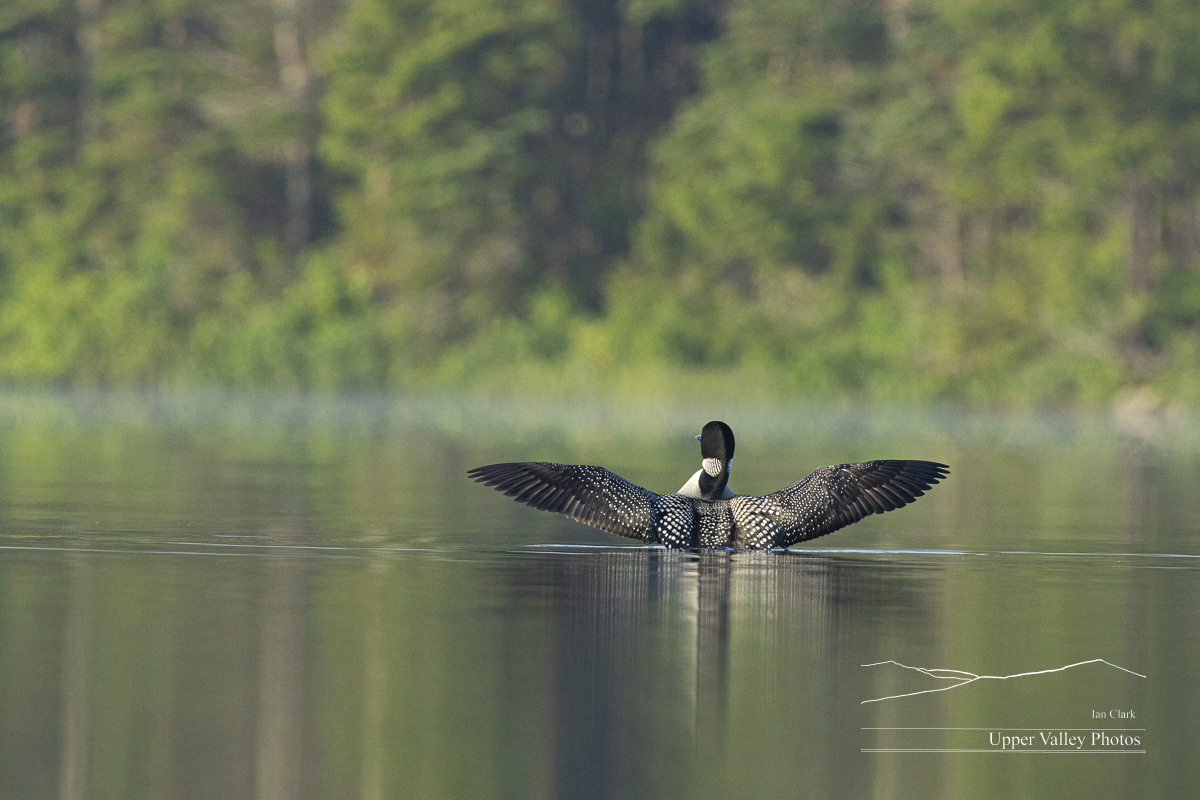
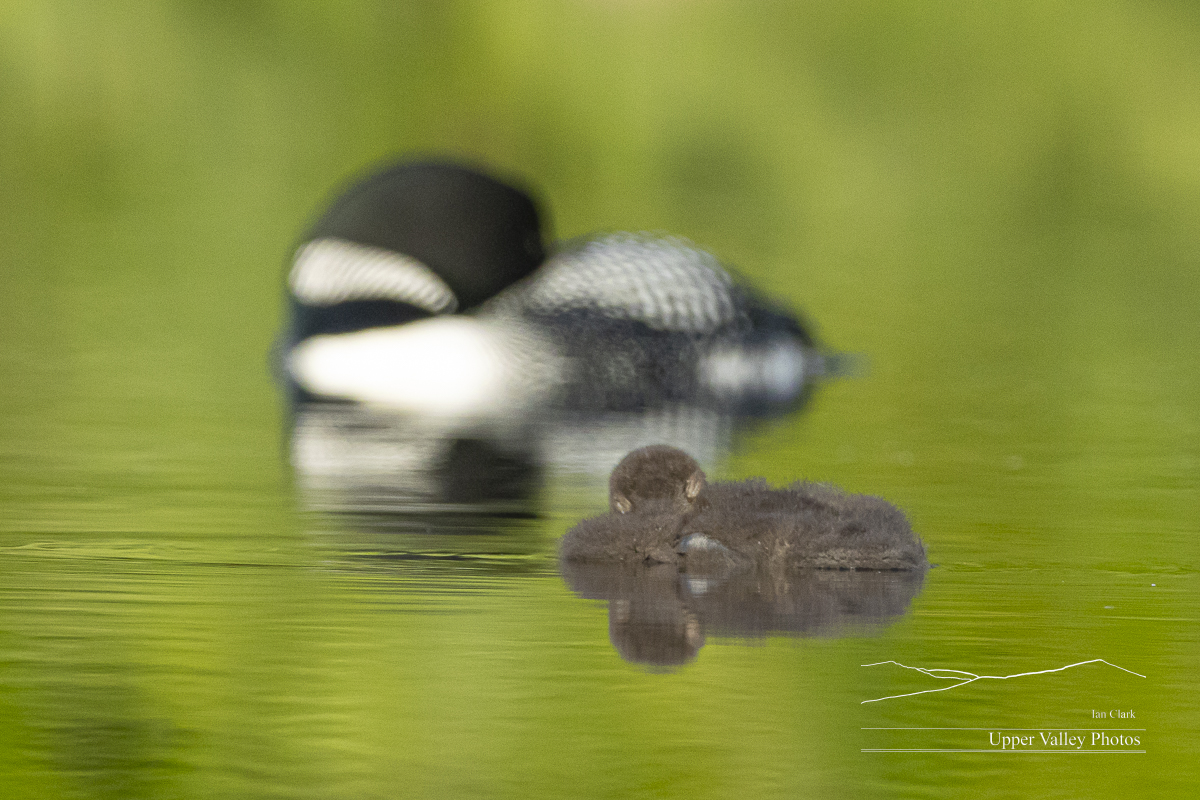
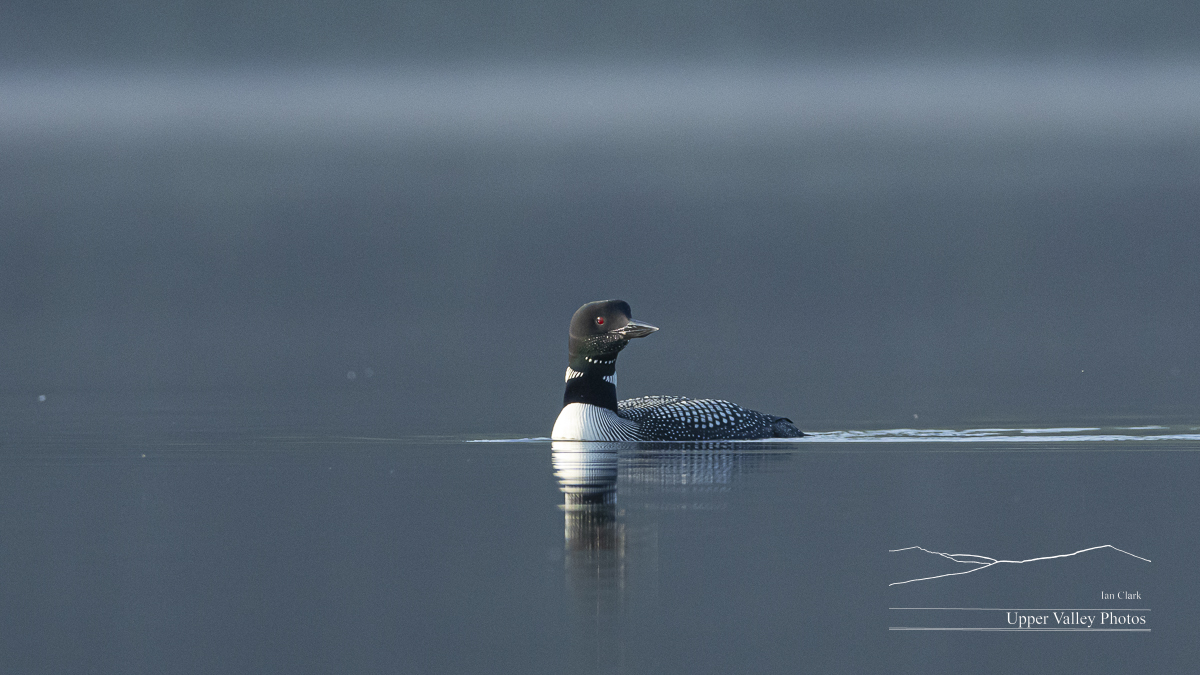

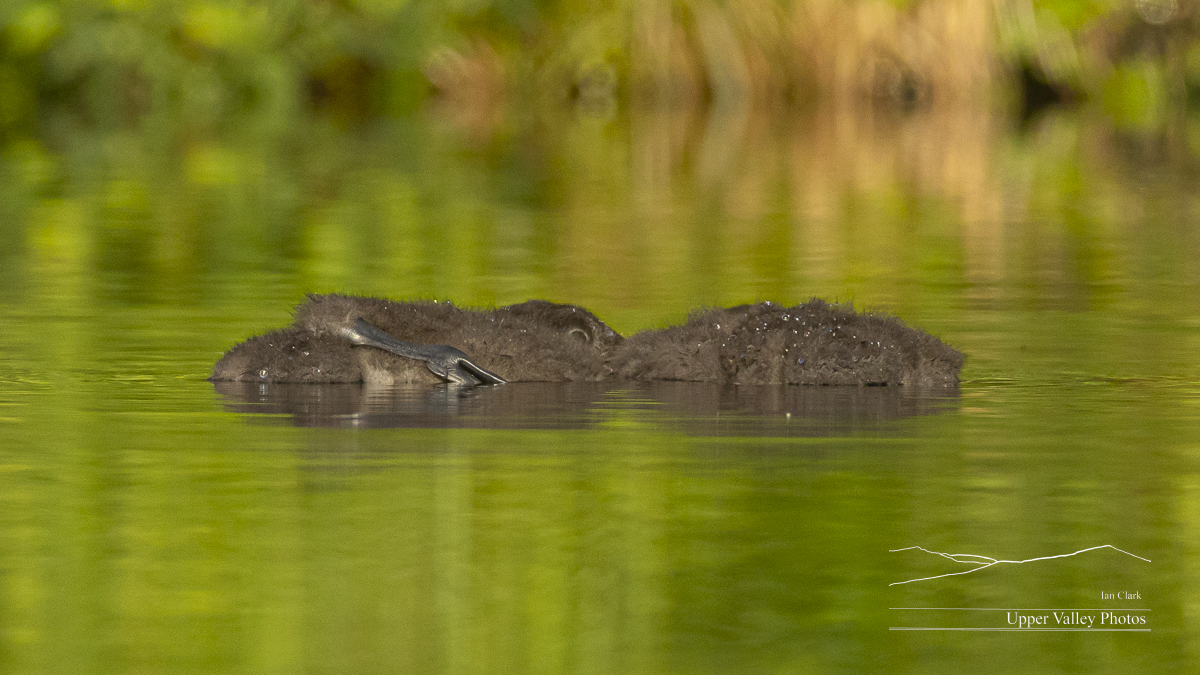
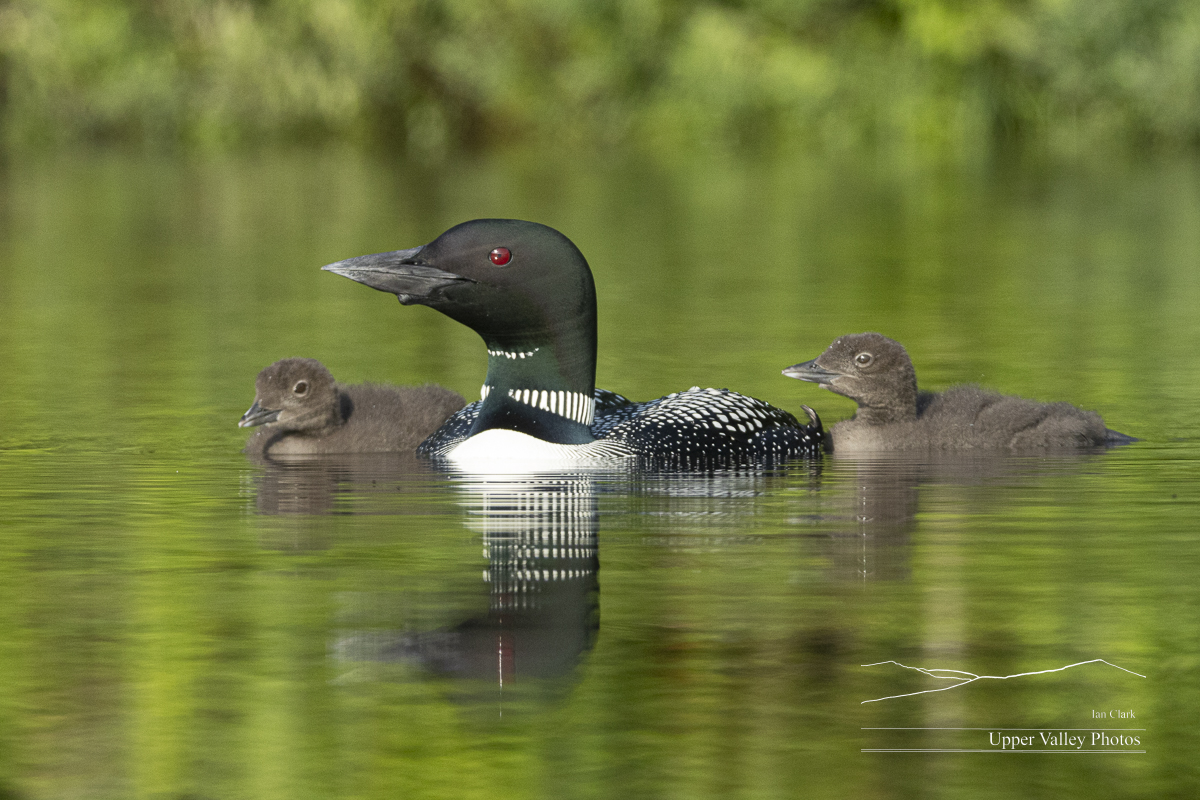
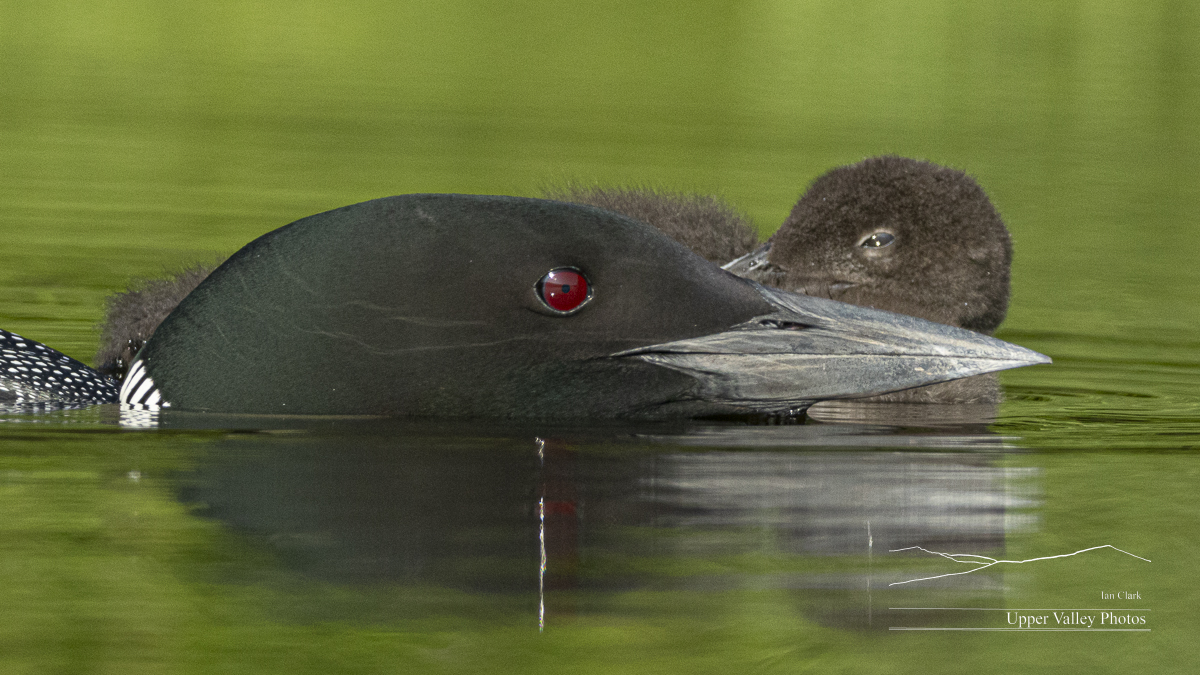

The morning of the sixth, I headed west to check on the Westons. Their pond has steep hills on both sides of the southern end of the pond. The family spent most of the morning foraging in deep shadows along the side of the pond. I headed out to see who else was about.
The usual suspects were out and about, kingbirds, red-winged blackbirds, lots of warblers seen not heard. But the best find was a trio of tree swallow fledglings and their parents feeding them.
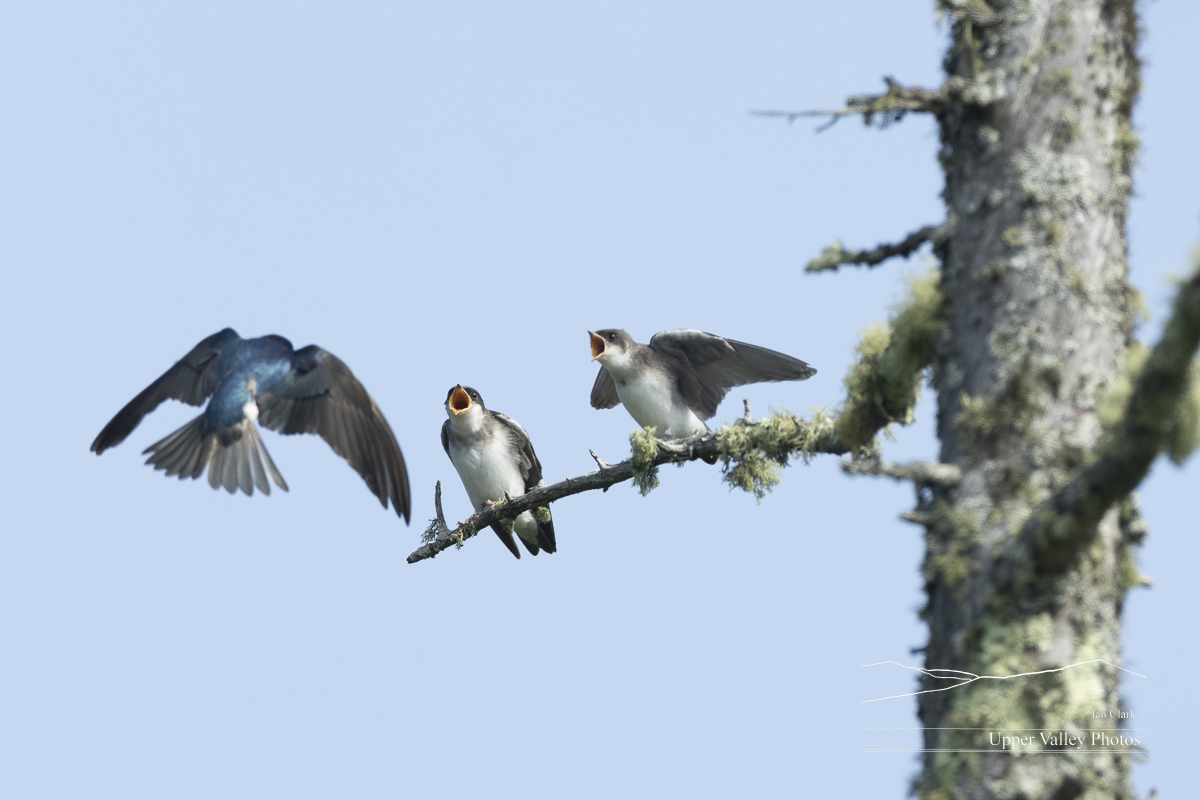
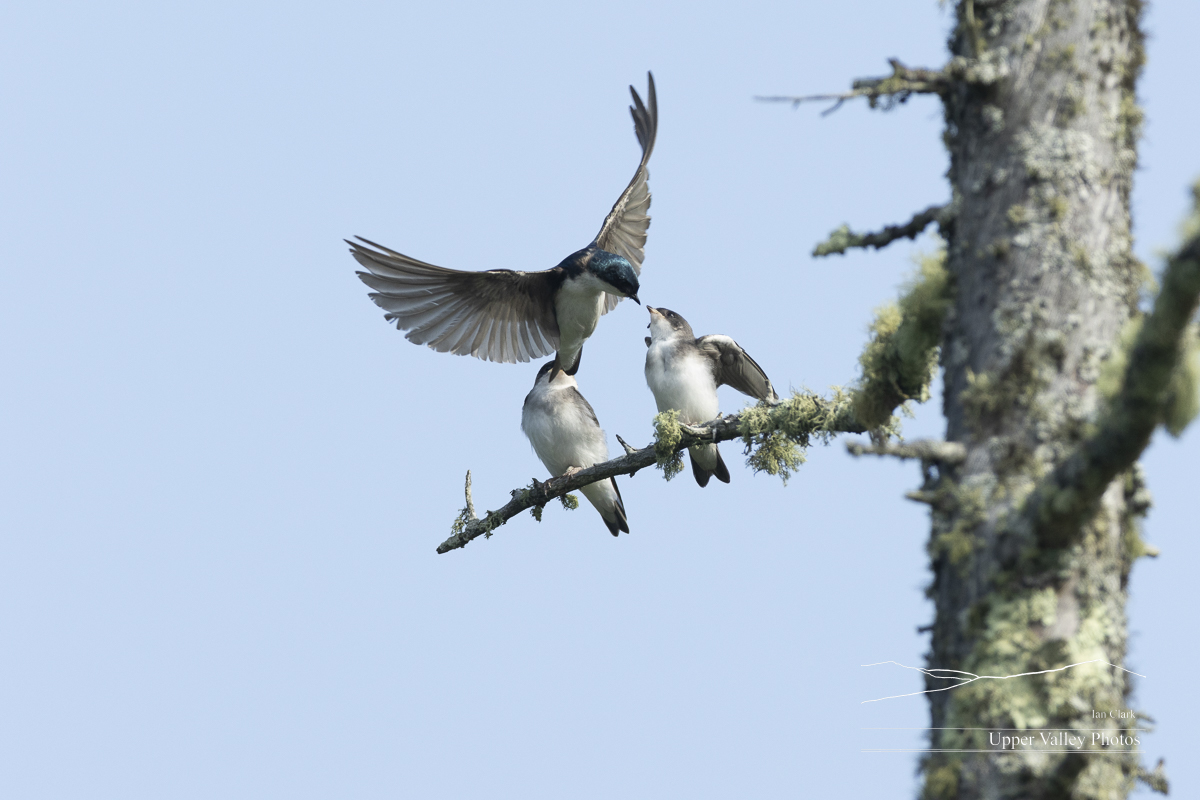
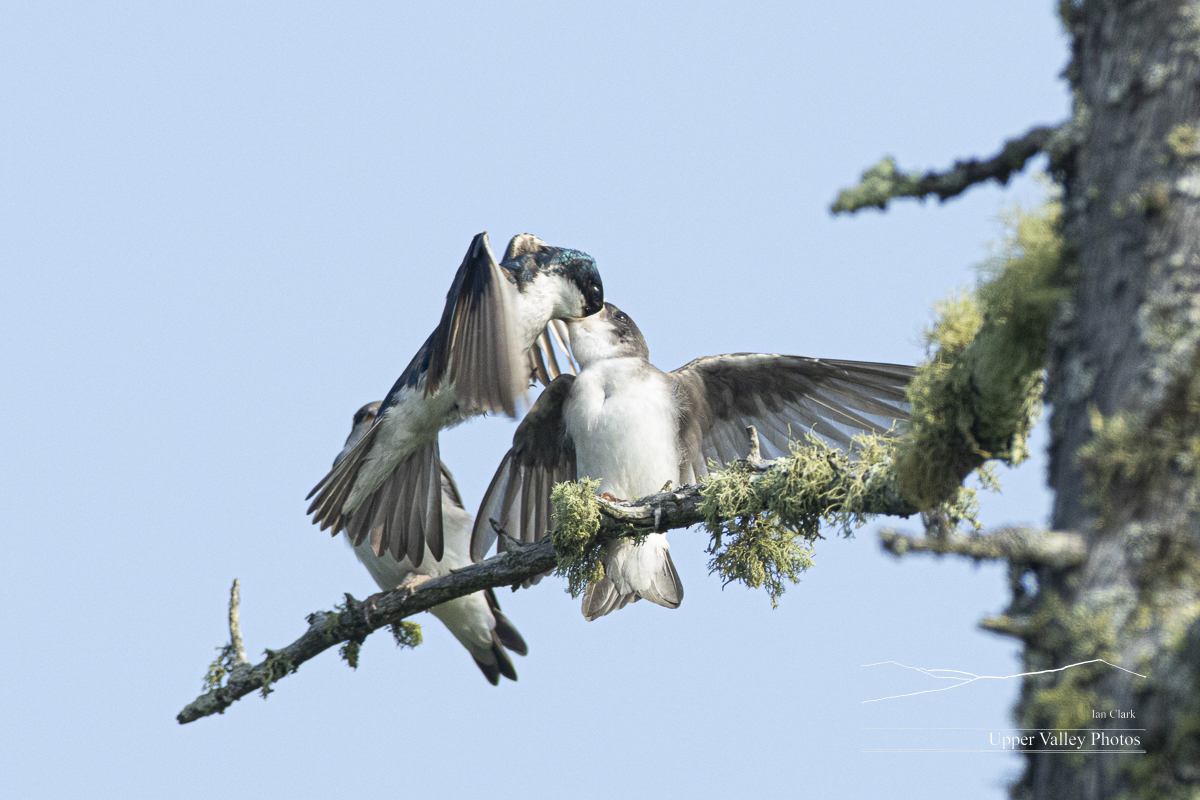
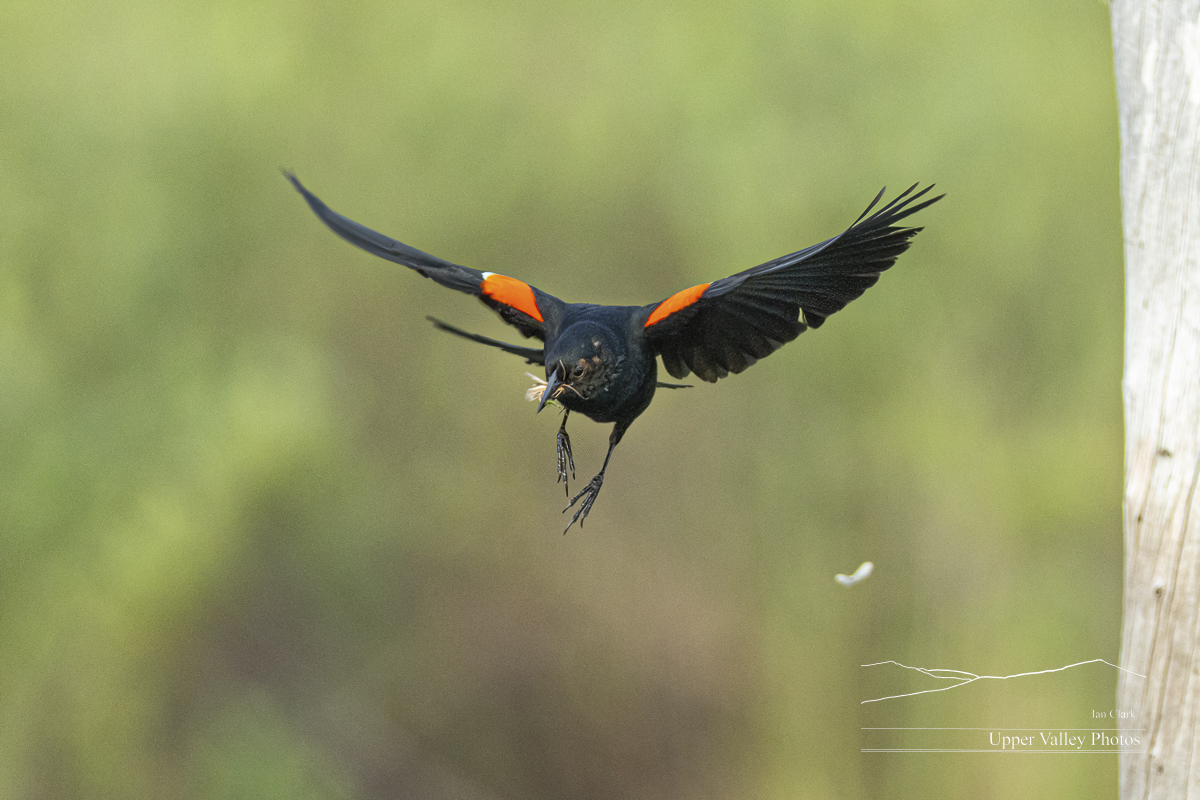

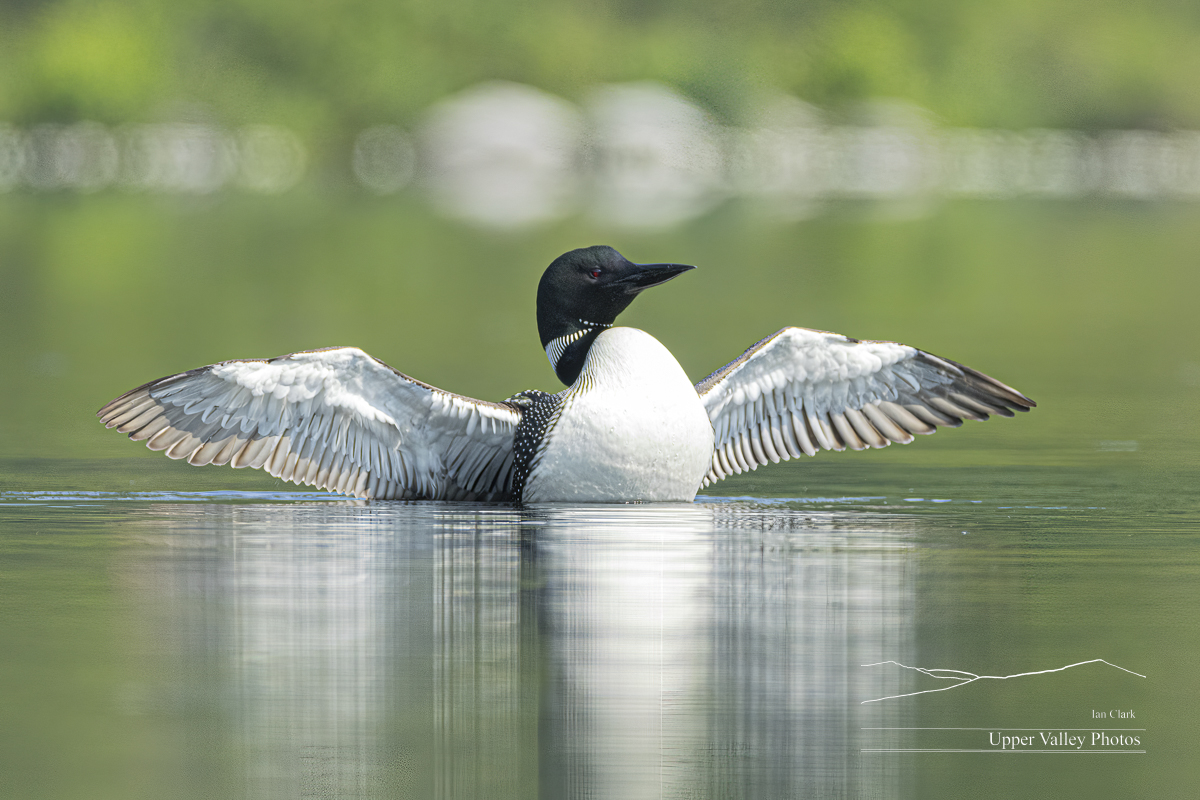
Yesterday, I visited the Middletons. There’s sad news, they’ve been fighting with an intruder or two most days. Their chick has disappeared. We don’t know what happened to it, but the intruders are suspects. As well as a host of other dangers from fish and snapping turtles to otters and eagles.
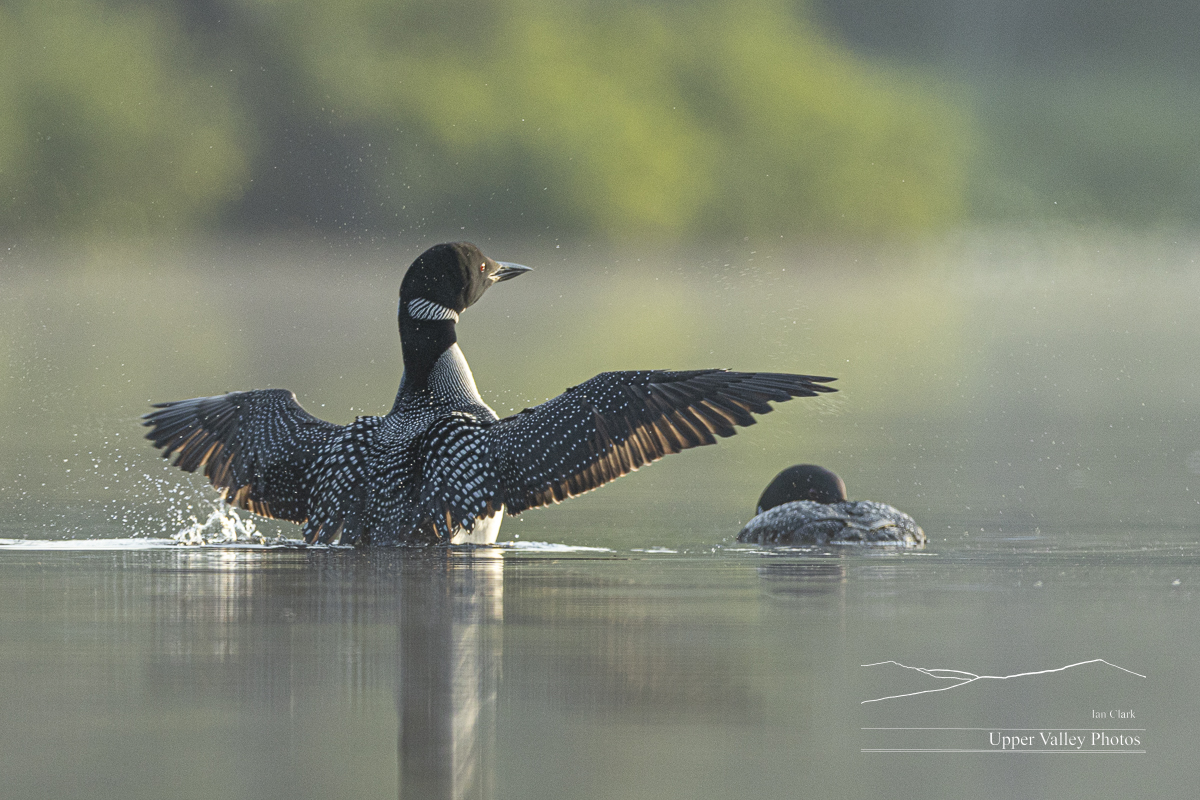



After their nap, the loons swam down to the cove where I’ve found them mating several times in the past. They might have been courting. They explored the beaches were they mate, hooting softly to each other. Then they did a brief courtship display, swimming swiftly side by side and diving together. They didn’t mate, but I’m hopeful they’ll try again.
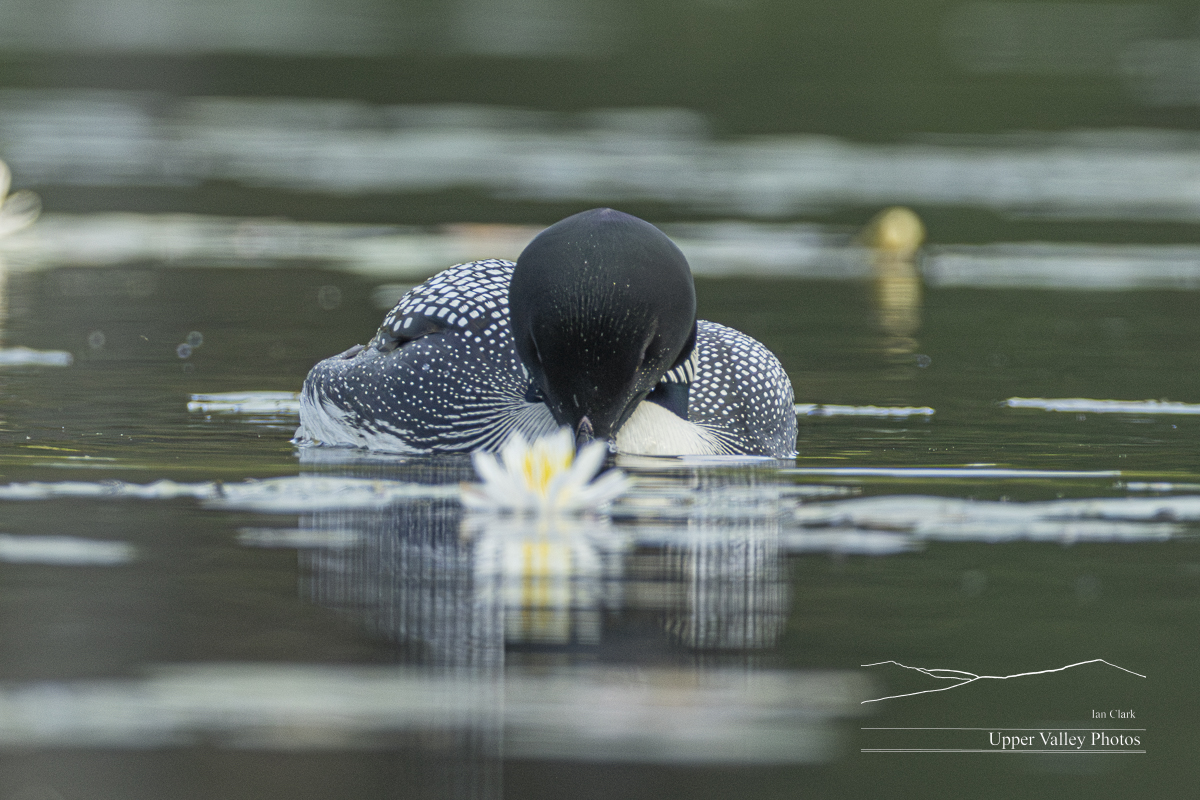
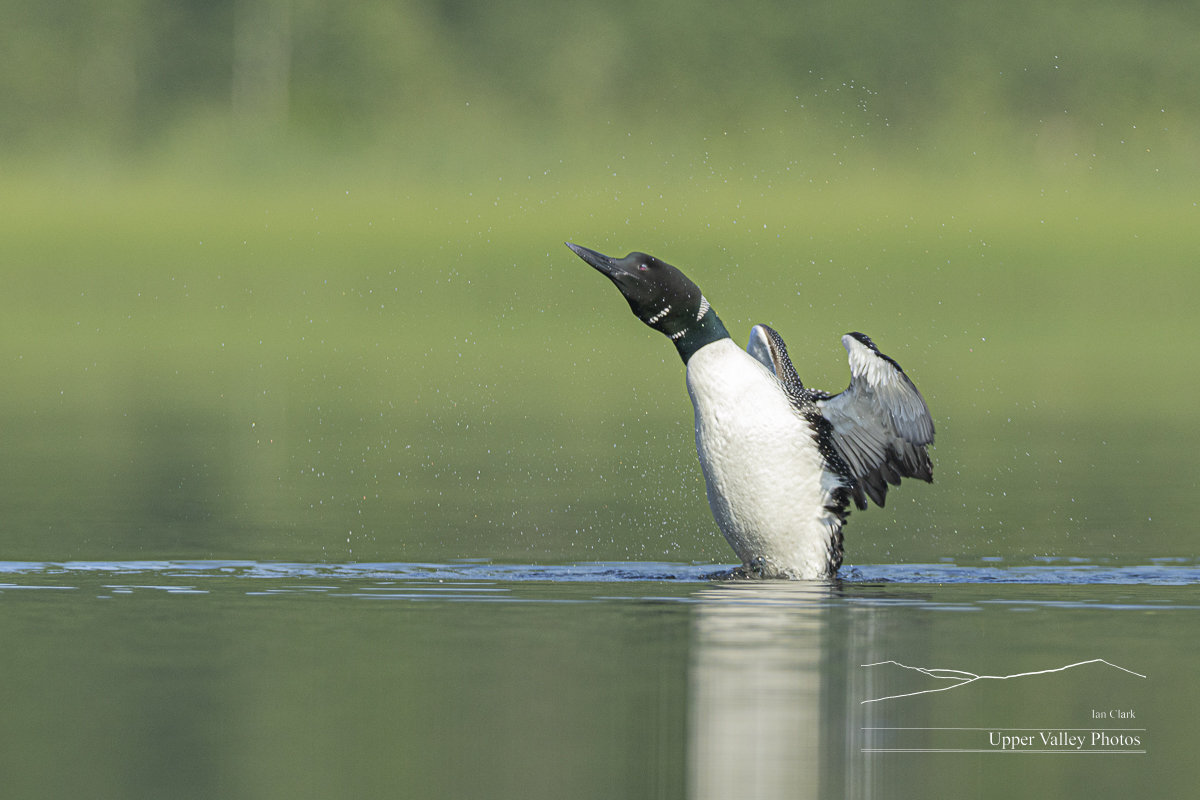
The weather kept me in this morning, I’ll be back out soon. Our second brood of bluebirds will fledge in the next couple days. They’re up flapping their wings and looking out the window.
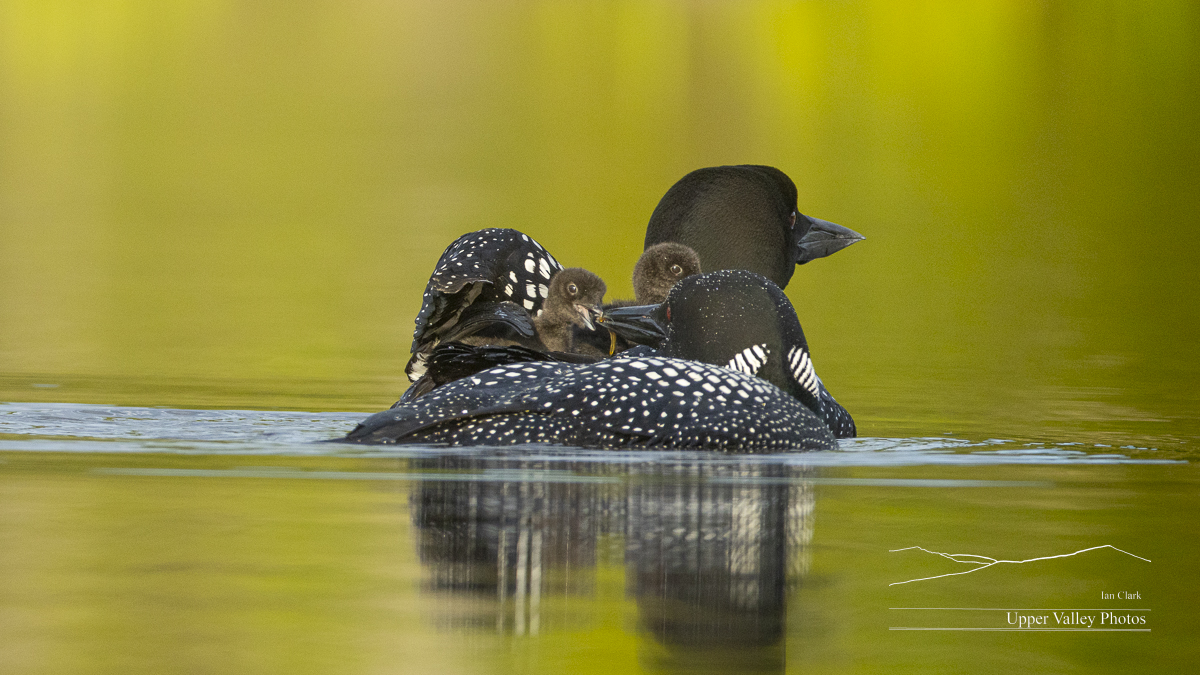
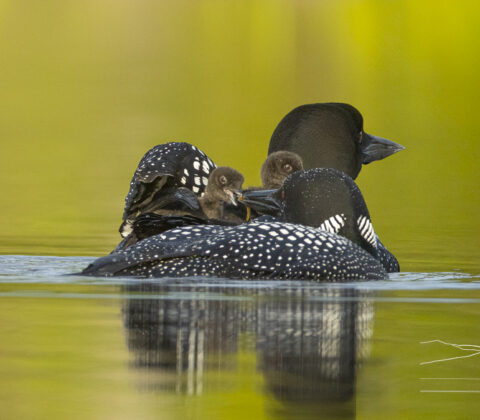
The Eastons Have Two Chicks
The last three years, the Eastons have hatched their chicks the third Friday and Saturday of June. I’d visited last Friday without any sign of chicks. Monday’s forecast suggested a chance I’d not get rained on. I headed out to visit the Eastons in a thick fog.
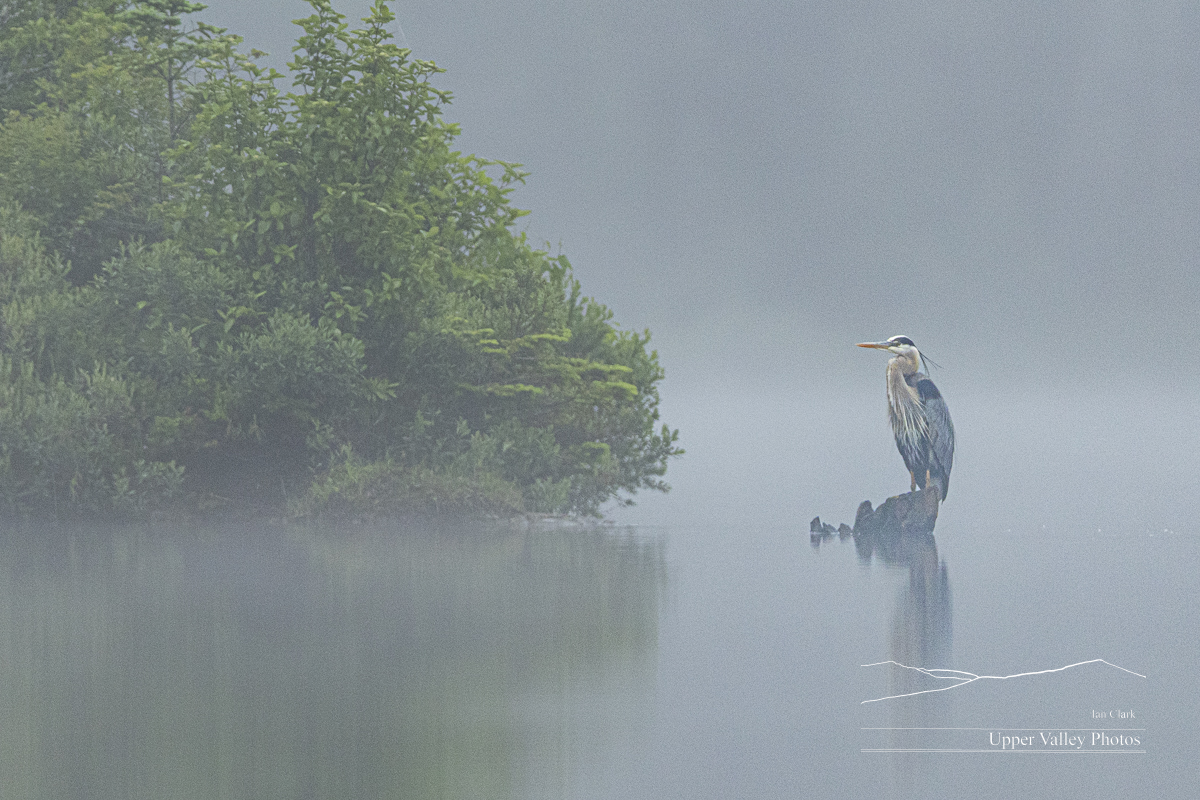
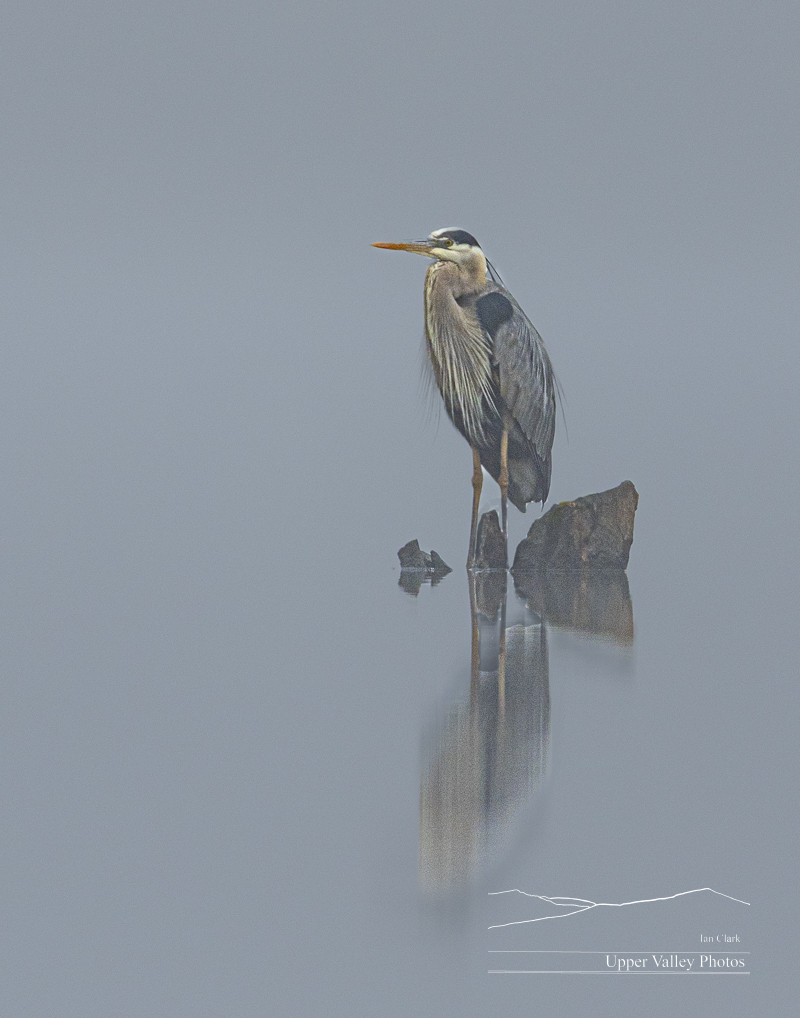

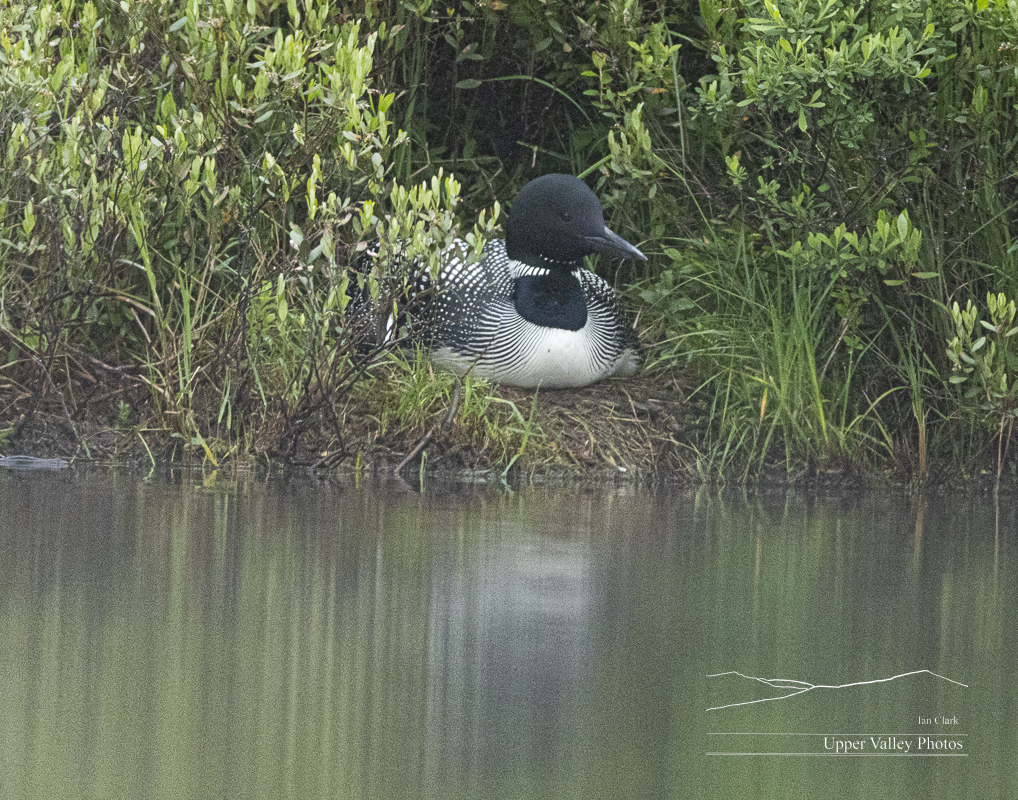
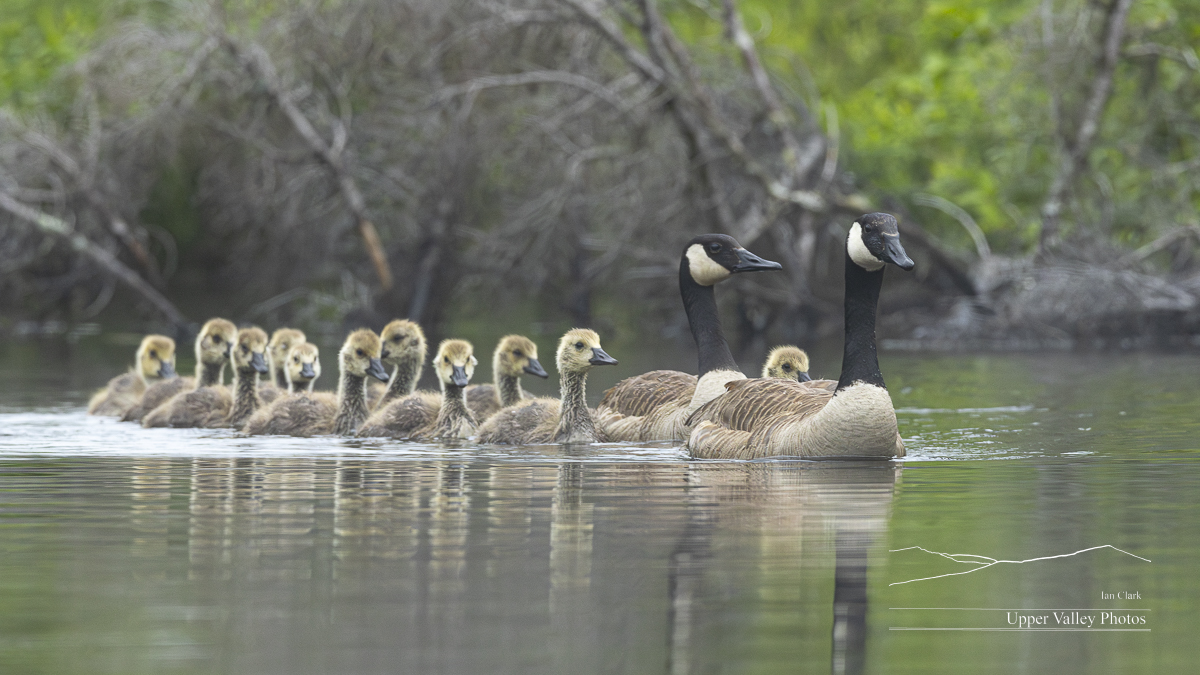
The weather improved throughout the day, I went to visit the Middletons in the evening. Our off duty parent was preening for some time before giving a series of four stretches.
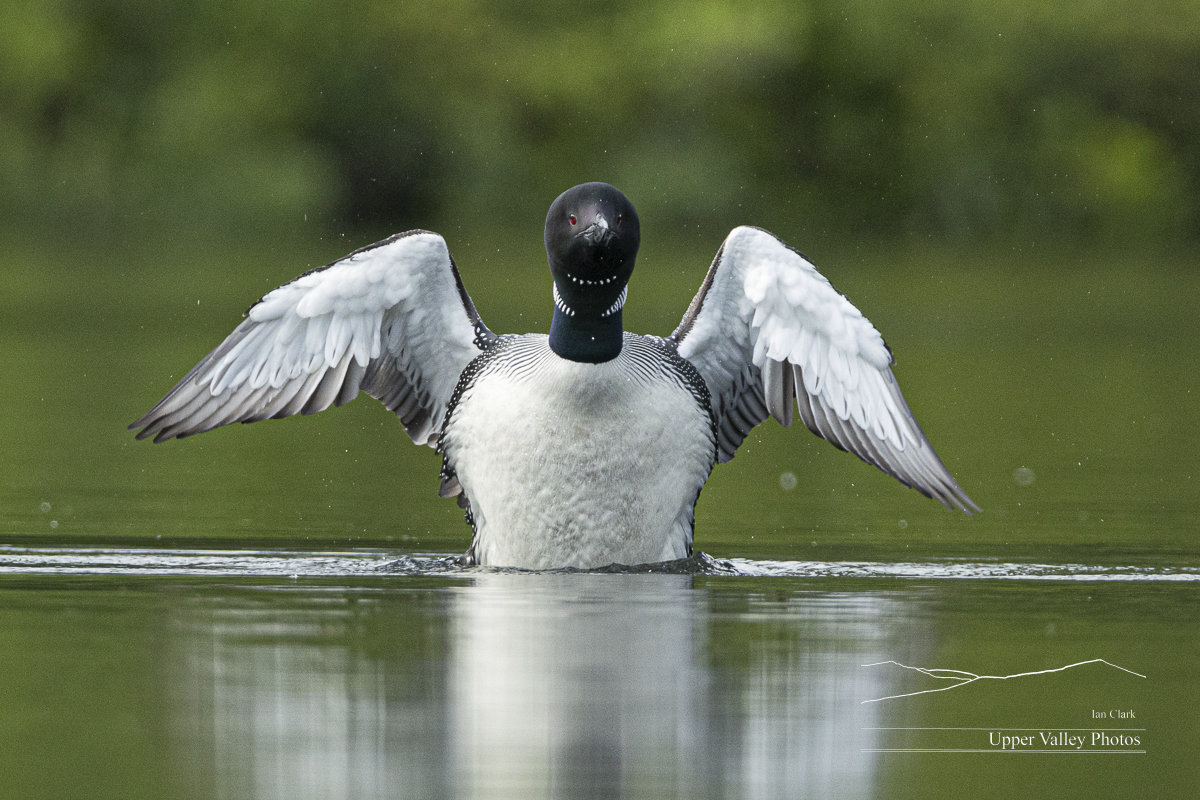
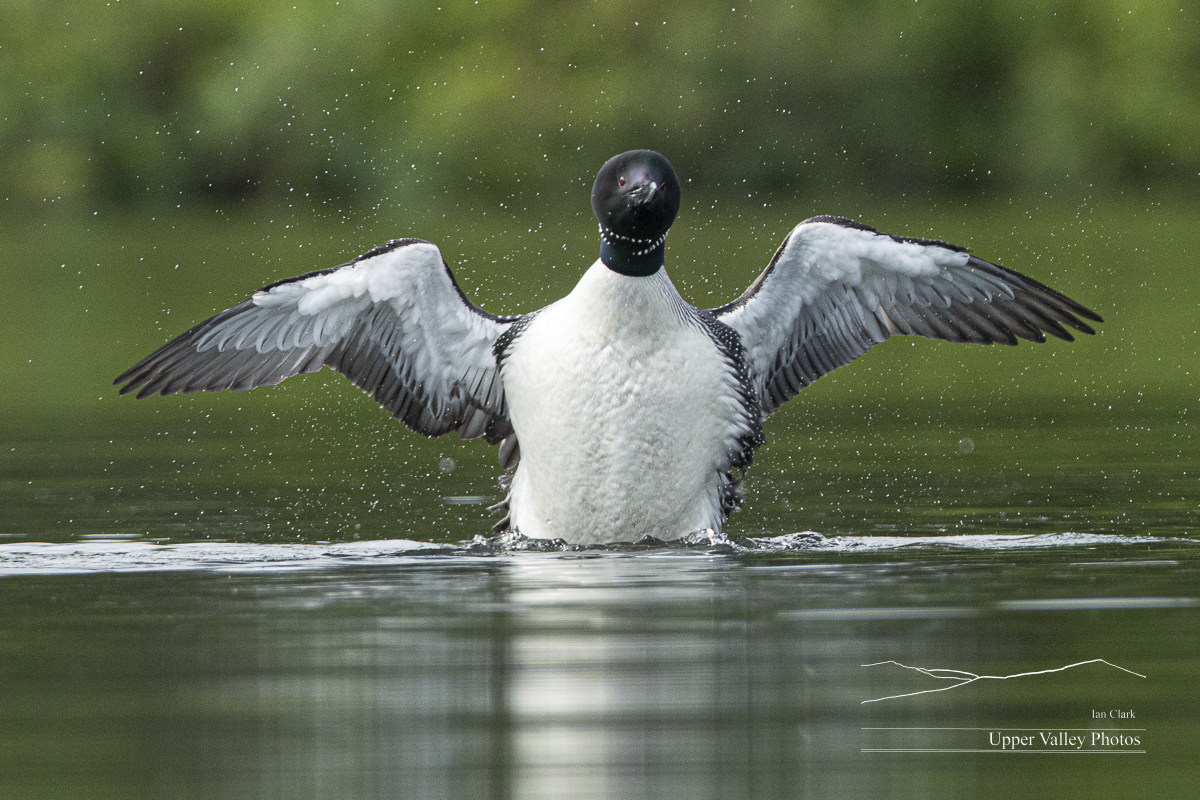
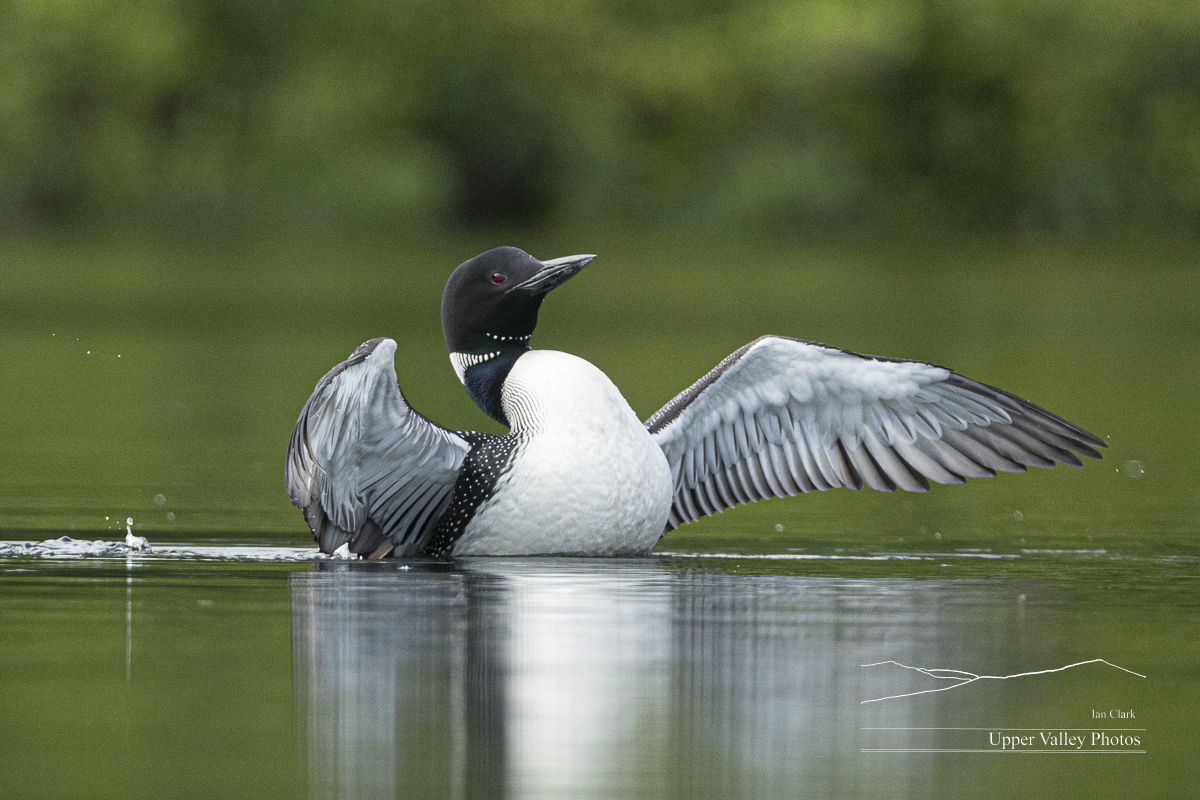
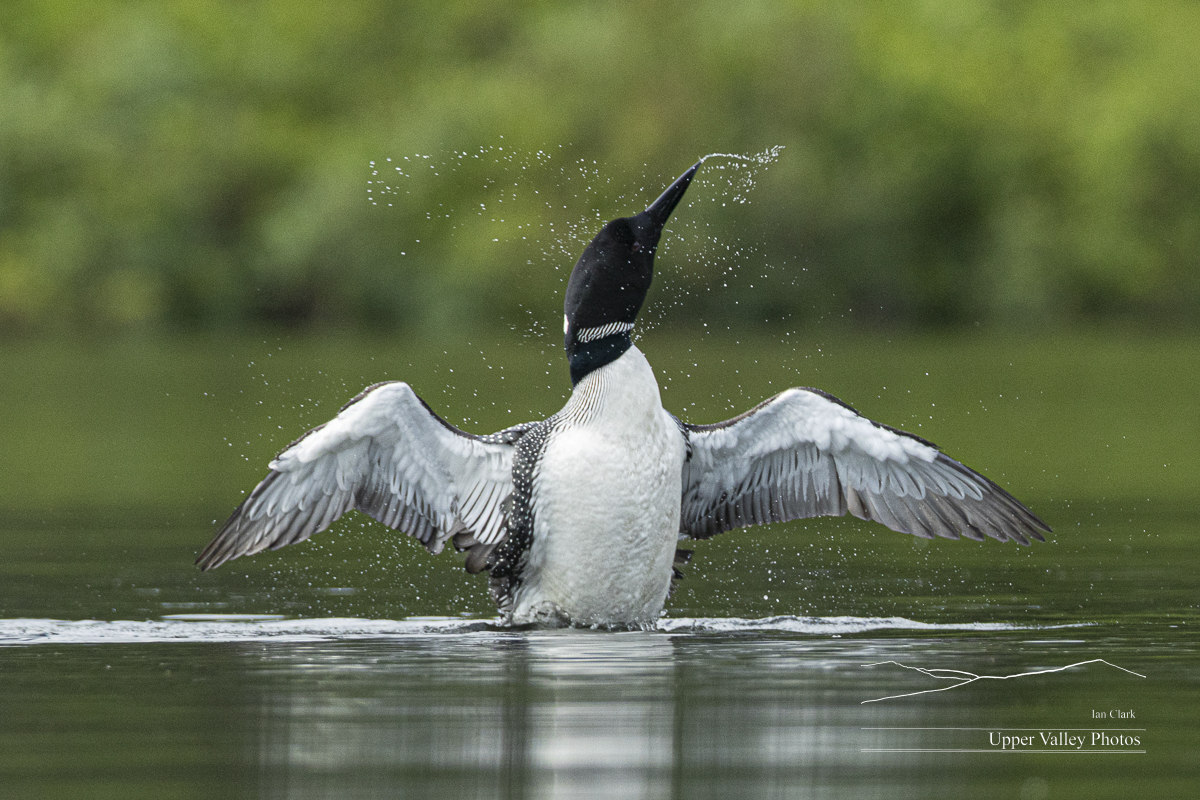
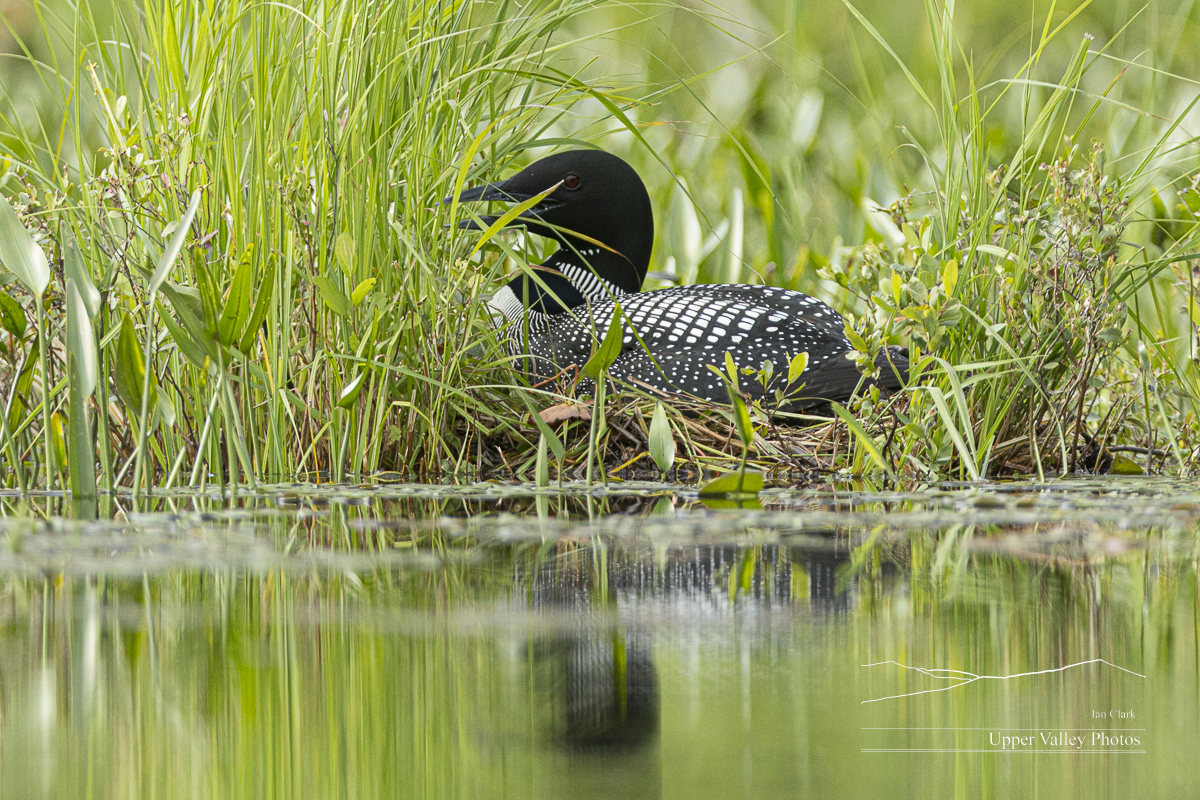
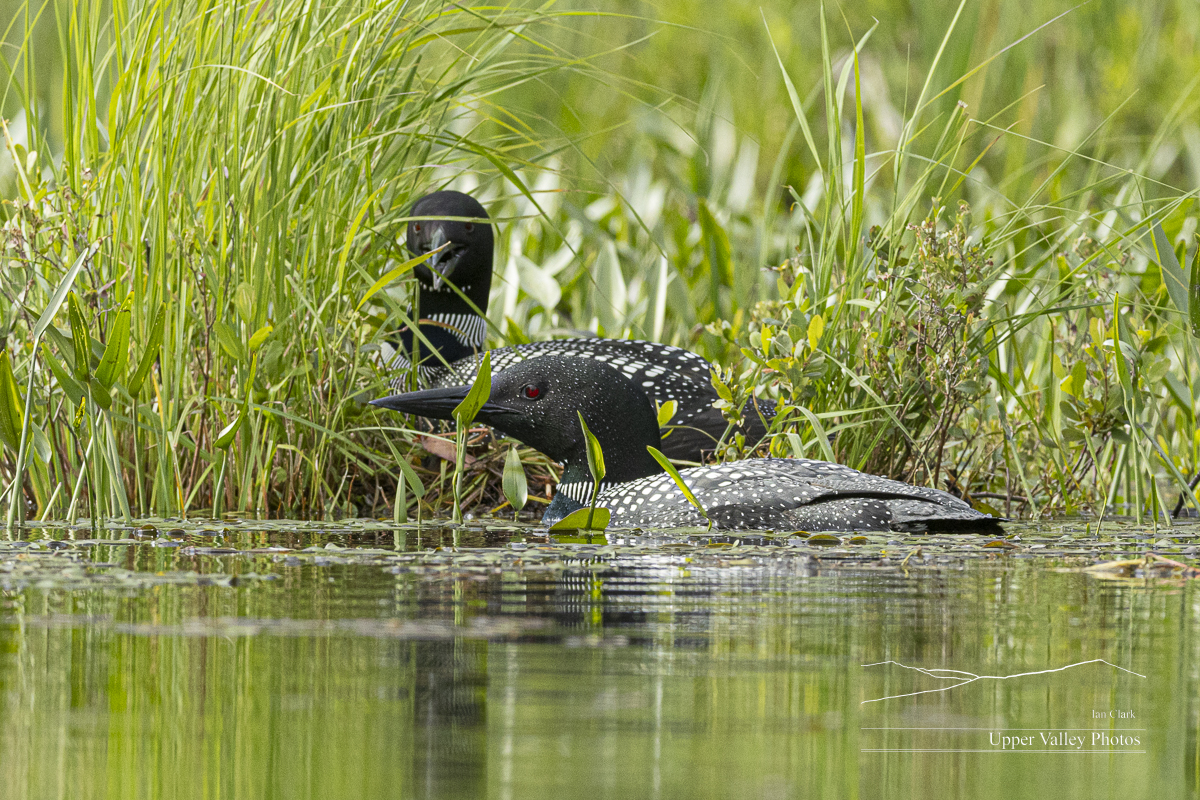

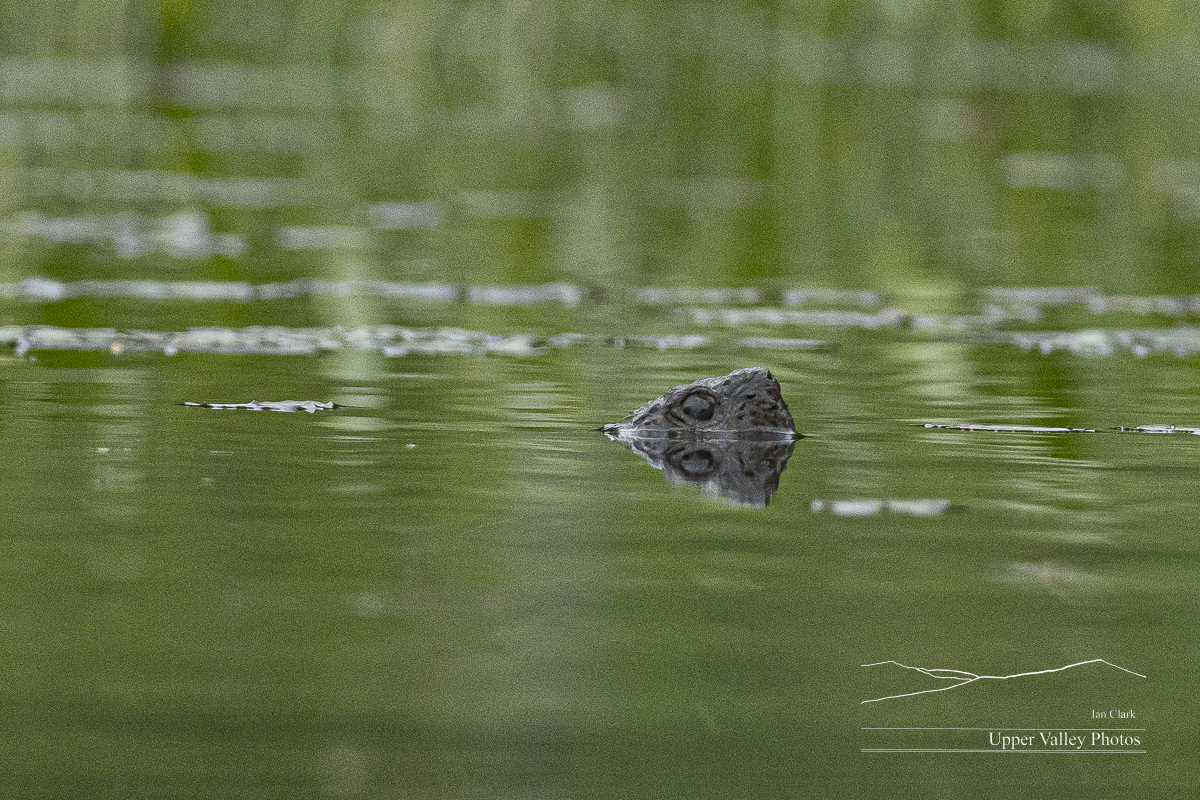
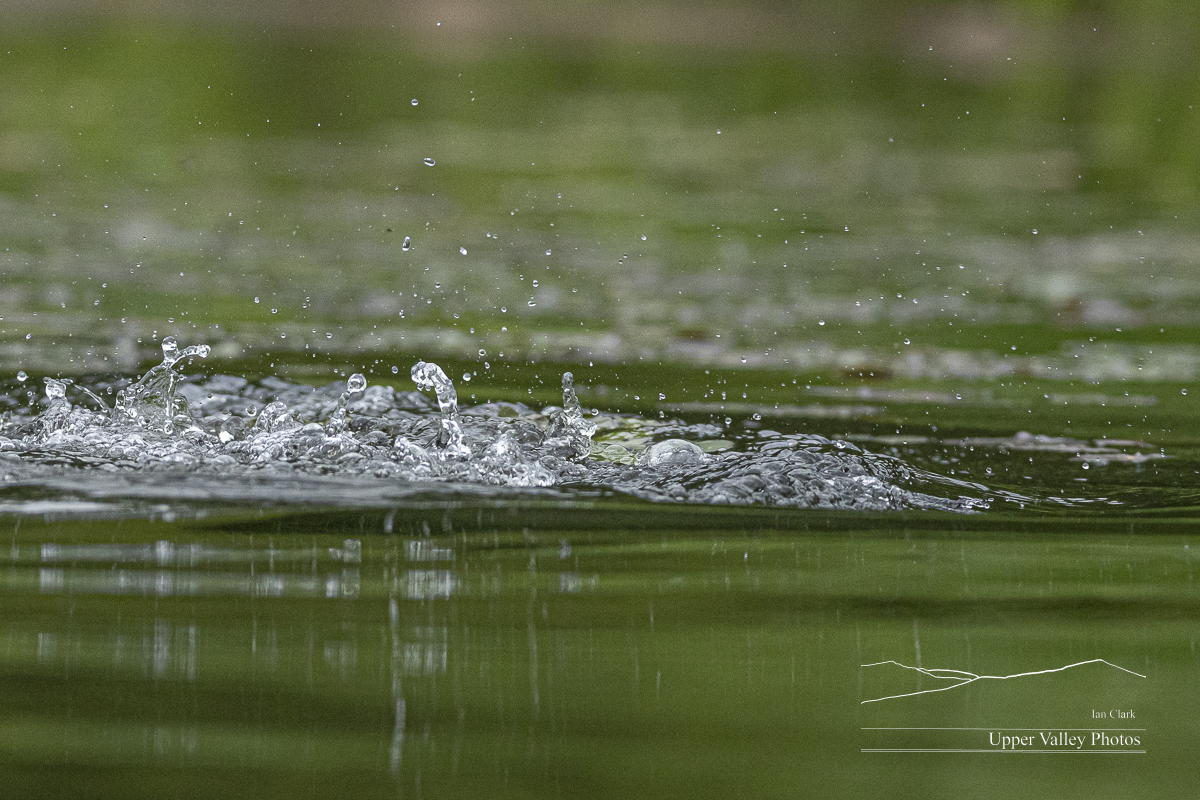
Once again, I headed home not knowing if the first chick had hatched.
The forecast for this morning was for the fog to burn off and the morning to be partly cloudy. Low, heavy clouds greeted me when I got up, with some breaks to the north. I decided to risk it and headed back to see the Eastons.
There’s an island blocking the view of the nest from the boat launch. As I put in, the loons raised a ruckus, but I couldn’t see what was going on. As I rounded the island, I could see one loon in the water near the nest, and the second on just climbing off the nest. I couldn’t see the chicks, but one adult had a wing up inviting a chick aboard.
Dad is a much more attentive parent than mom, assuming we have the same female from the past few years. Dad is also banded, letting me tell them apart when I can see a leg. Dad rounded up
both chicks and got them aboard. Mom decided it would be a good time for her to go out and get her own breakfast. After about 15 minutes, dad started calling, it sure looked like he was reminding her that she needed to get to work.

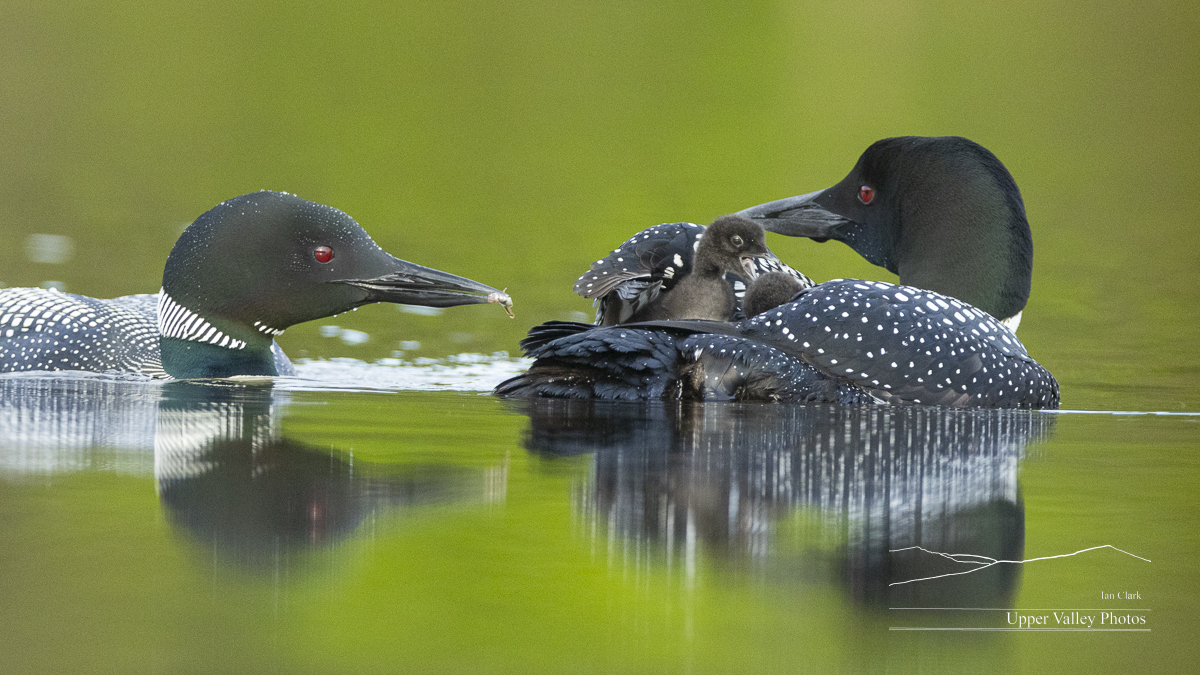
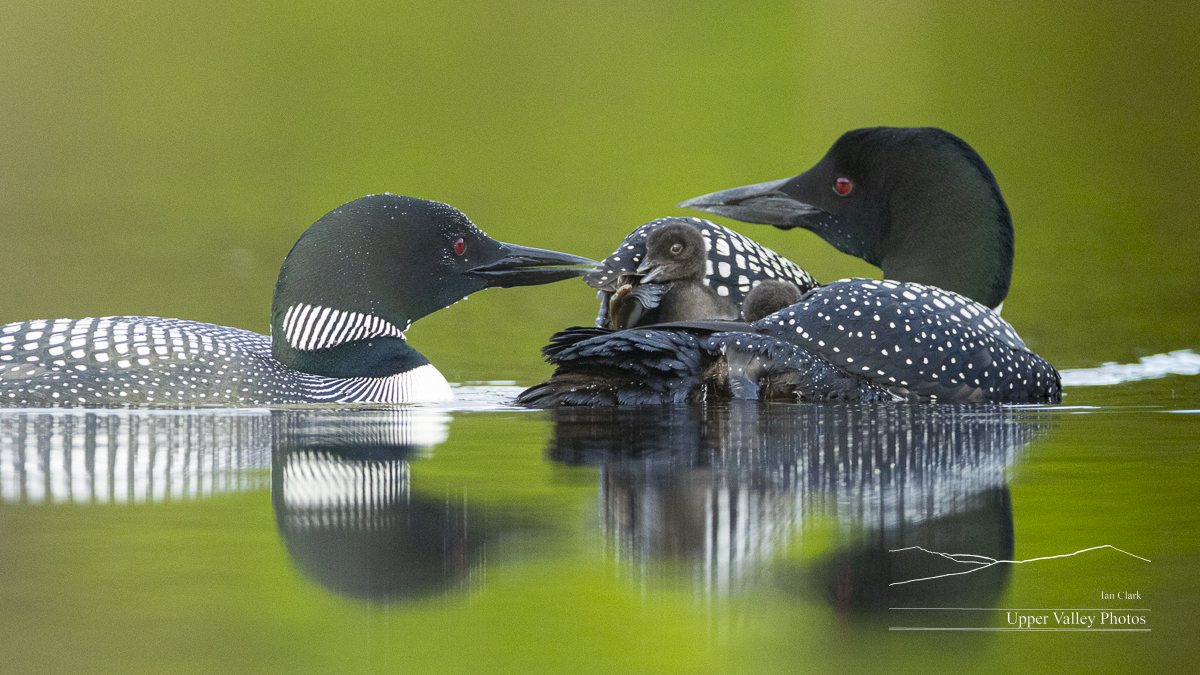

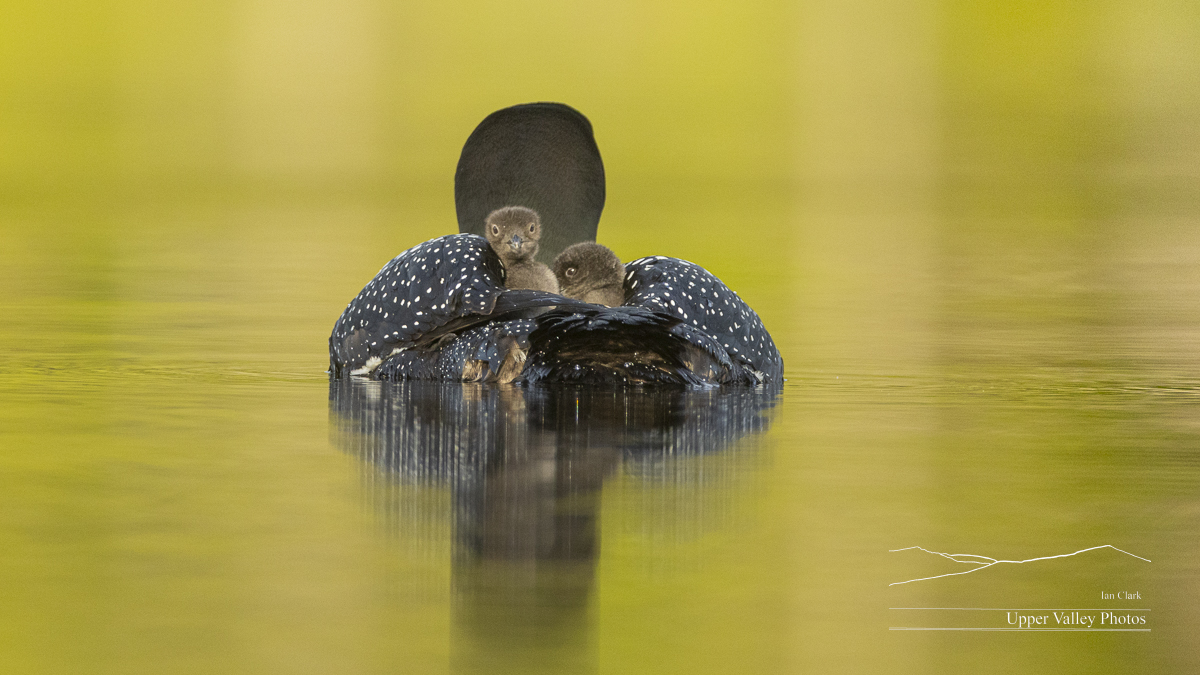
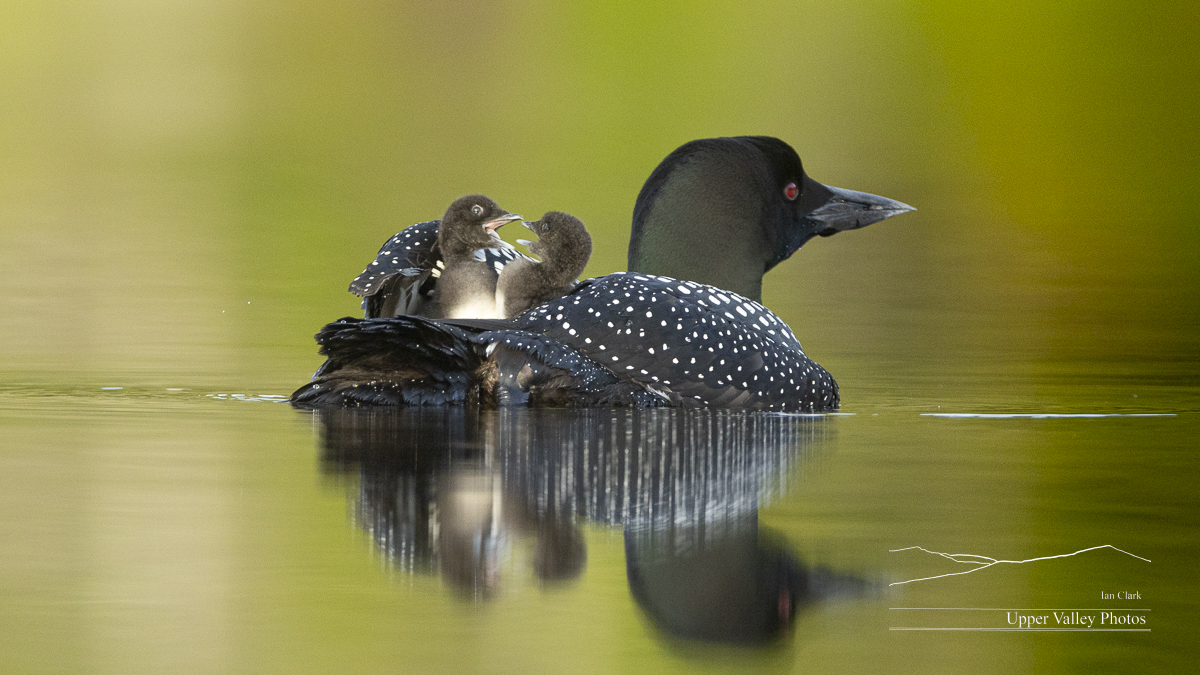
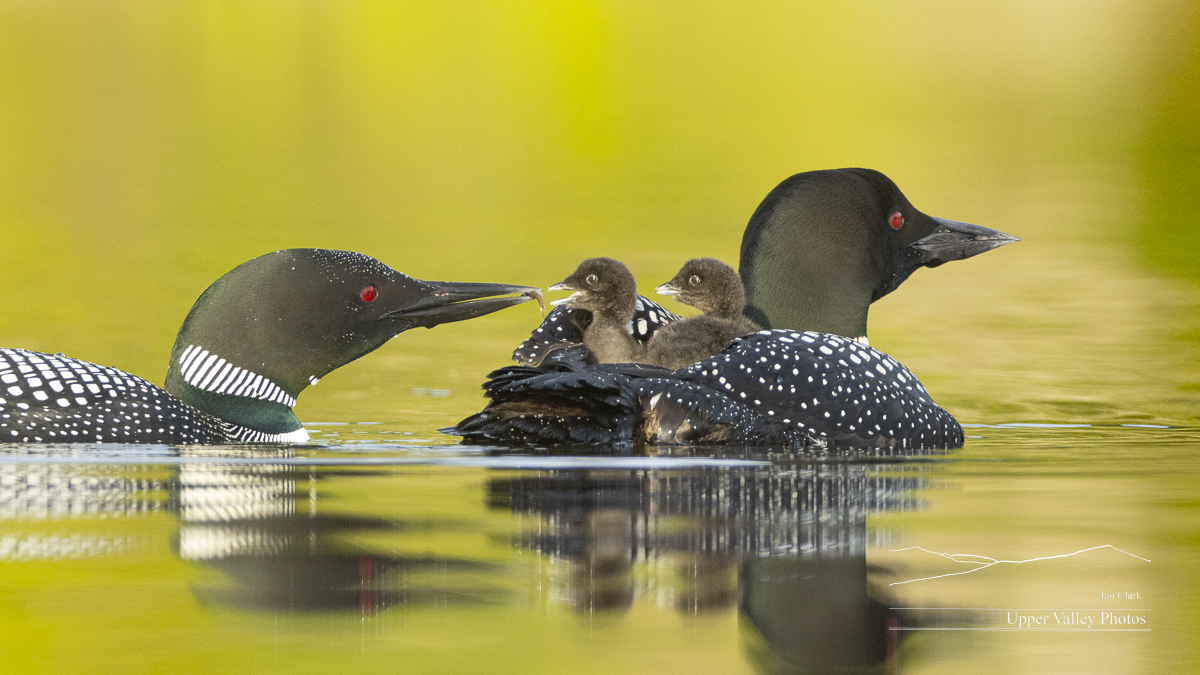

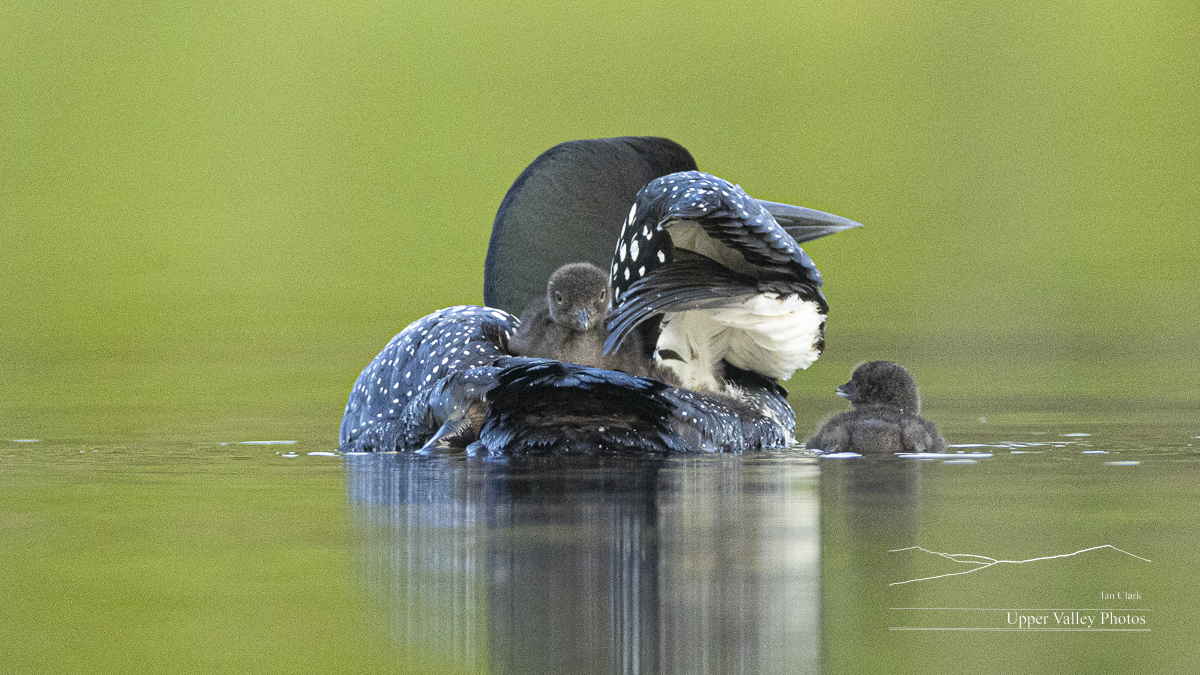
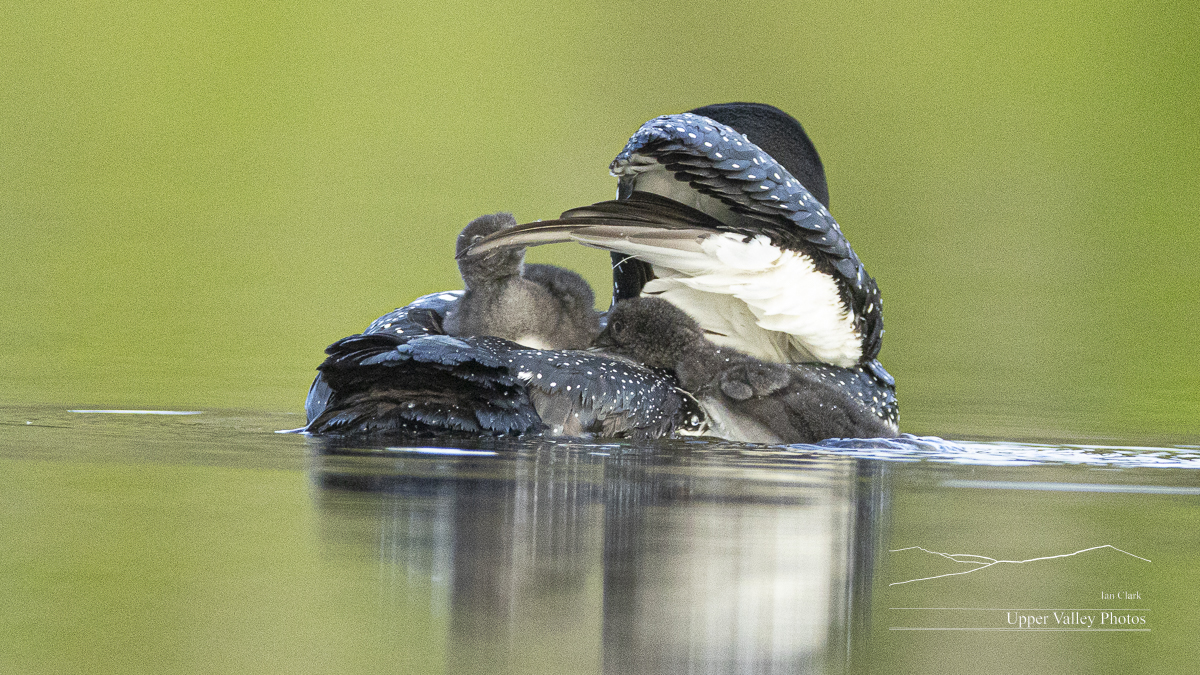
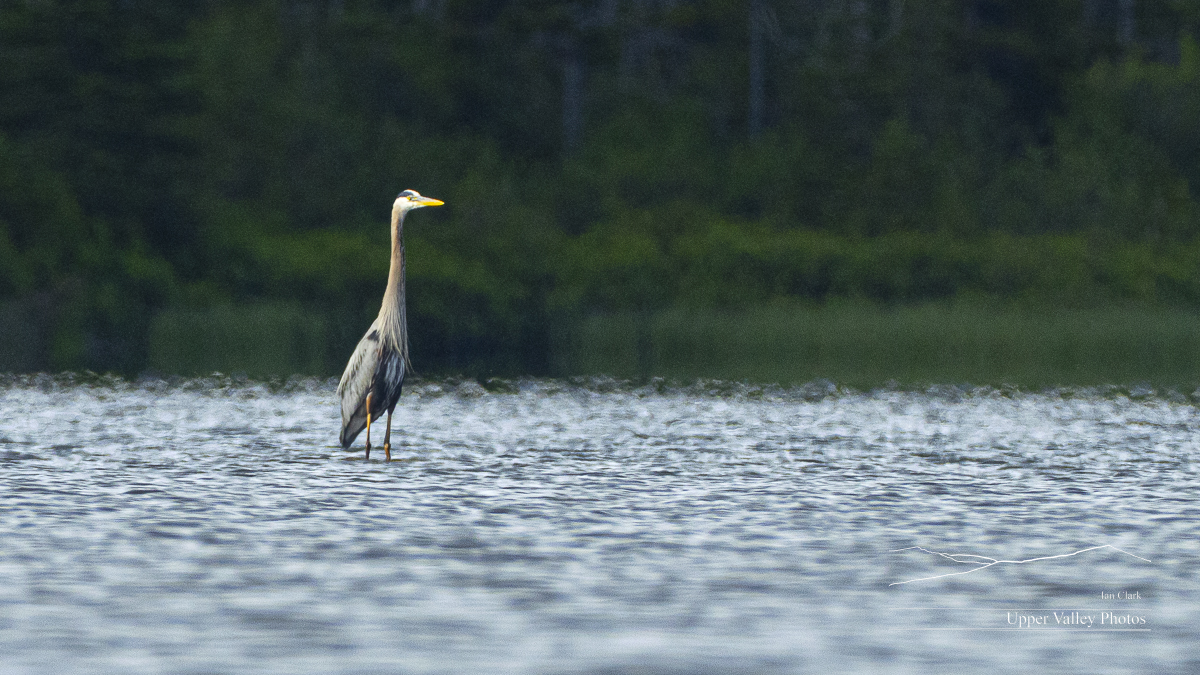
I’ll try to keep up with all three families through the summer. If you know someone who might be interested in following along, please share my blog with them.
First Loon Chicks Have Arrived
UPDATE: We’ve got a second pair of chicks that have hatched since I posted this. Lots of pix in their own post at here.
The weather final cleared enough to let me get back out to check on our three loon families. Well, sort of. I got very wet the first evening and made it back to the car with seconds to spare the second.
First, there’s some sad news from Vermont, the oldest known loon in Vermont has died. His age was estimated at 31 years. VT Diggerhttps://vtdigger.org/2023/06/15/vermonts-oldest-loon-dies-at-the-estimated-age-of-31/ has a piece interviewing Eric Hanson, Lead Biologist at the Loon Conservation Project about the loon.
With loon chicks hatching it is once again time to request that you give them space if you go to see or photograph them. You may not intend them any harm, but you may distract the parents from seeing other threats. Our new loon chicks were greeted by a circling eagle on their first or second day out. The parents need to concentrate on the real threats, keep back and let them do their job. All the images of chicks here were with a 600mm lens and heavily cropped.
Tuesday evening I got a message from a friend on the Weston’s pond that the chicks had arrived. And that the eagle was eyeing them. Wednesday morning was wet and windy. It gradually cleared a bit through the day. I set out in the evening to check on the chicks. It was sunny when I left the house. On the way into the pond, I had to wait while a doe browsed from the road – with her fawn gamboling about in the road. By the time I had everything in the boat, there were a few sprinkles. Not enough to dissuade in intrepid photographer.
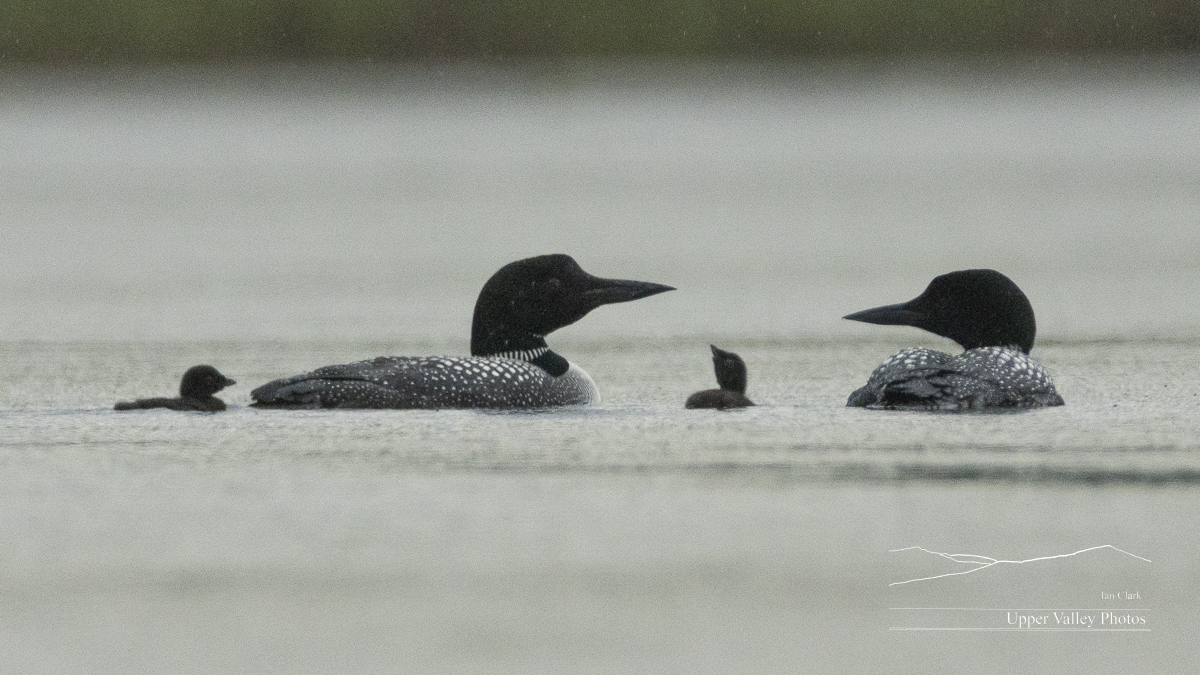
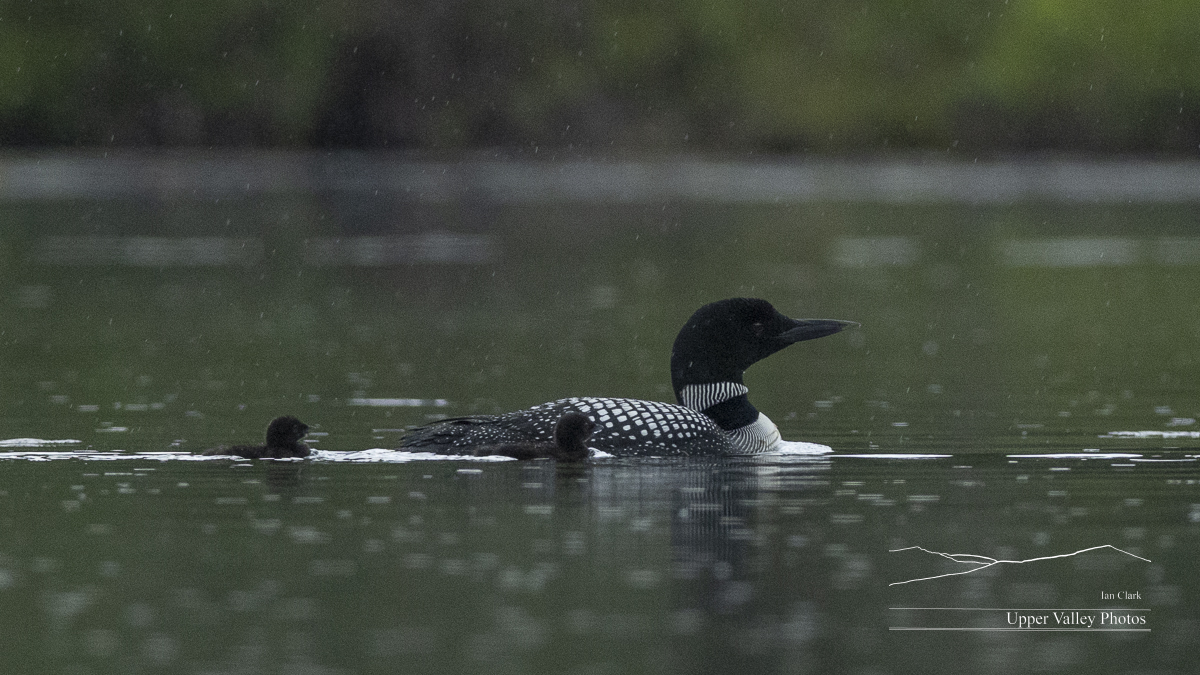
When I got up at 0345 on Thursday ready to head out, it was raining heavily. Early morning is the most productive time in the office, almost no one calls before 0700 or 0800. I got a fair bit done. When the dogs finally got up, I noticed some breaks in the clouds when I let them out. Hoping it would clear a bit, I headed off to to check on the Middletons.
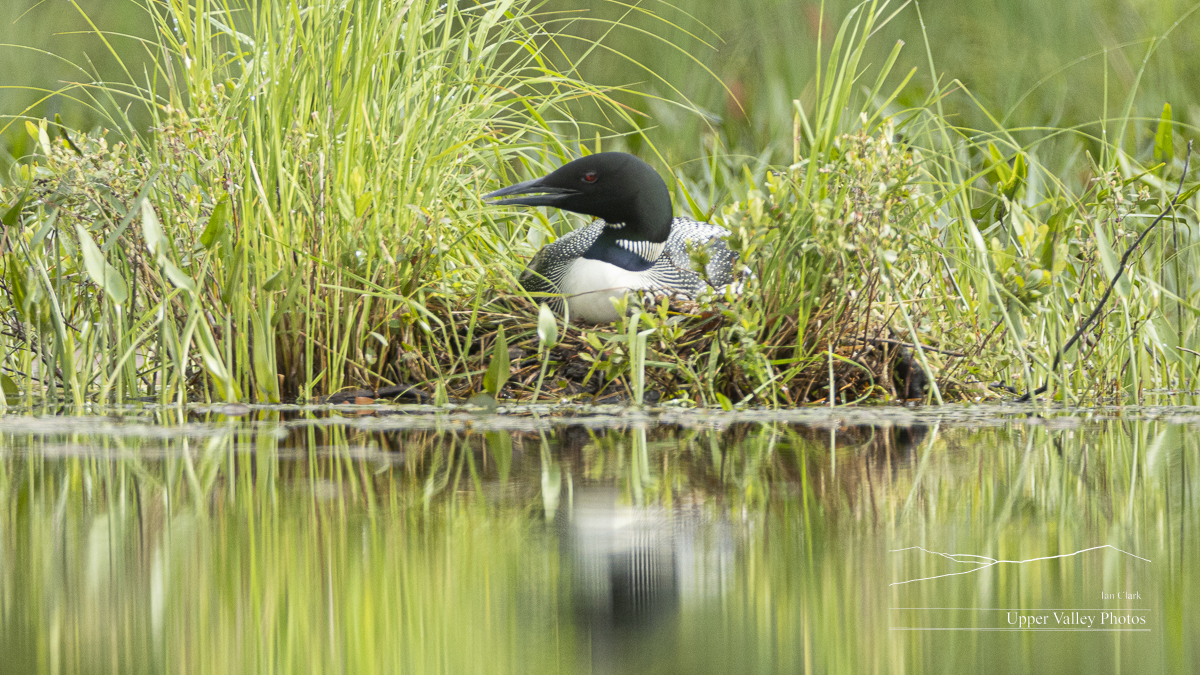
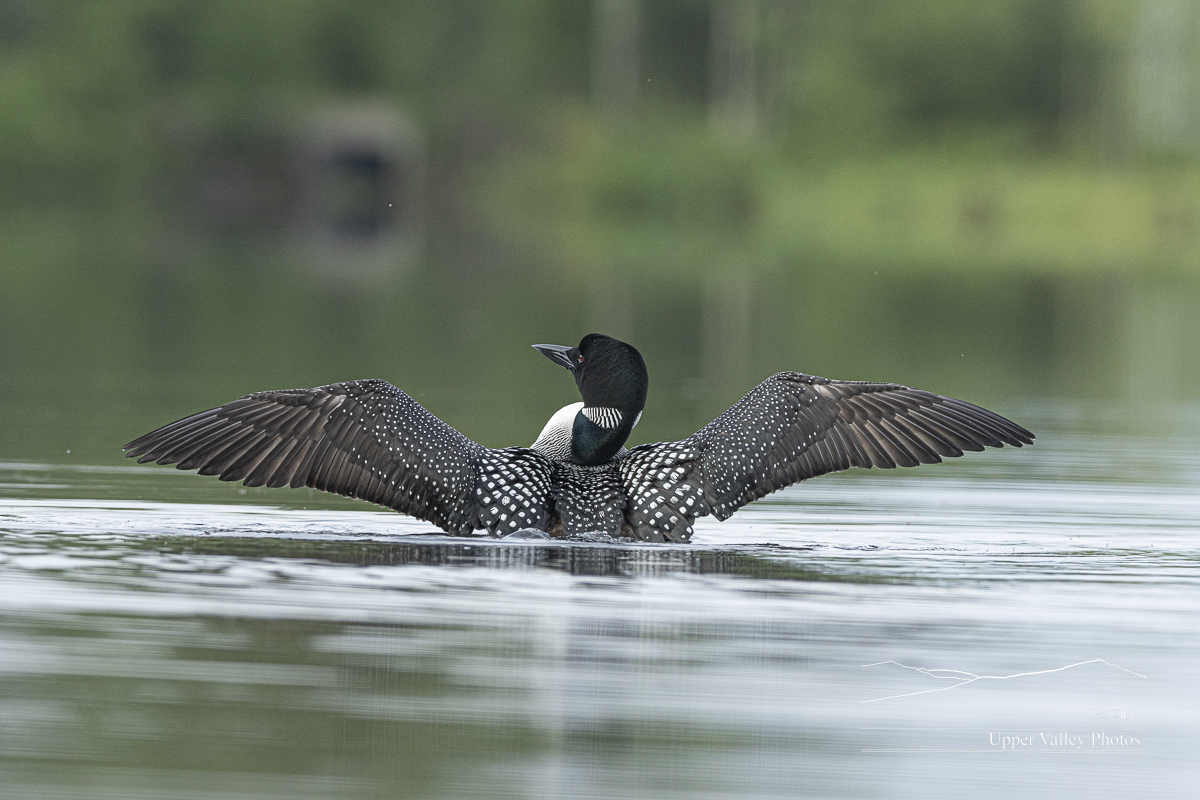
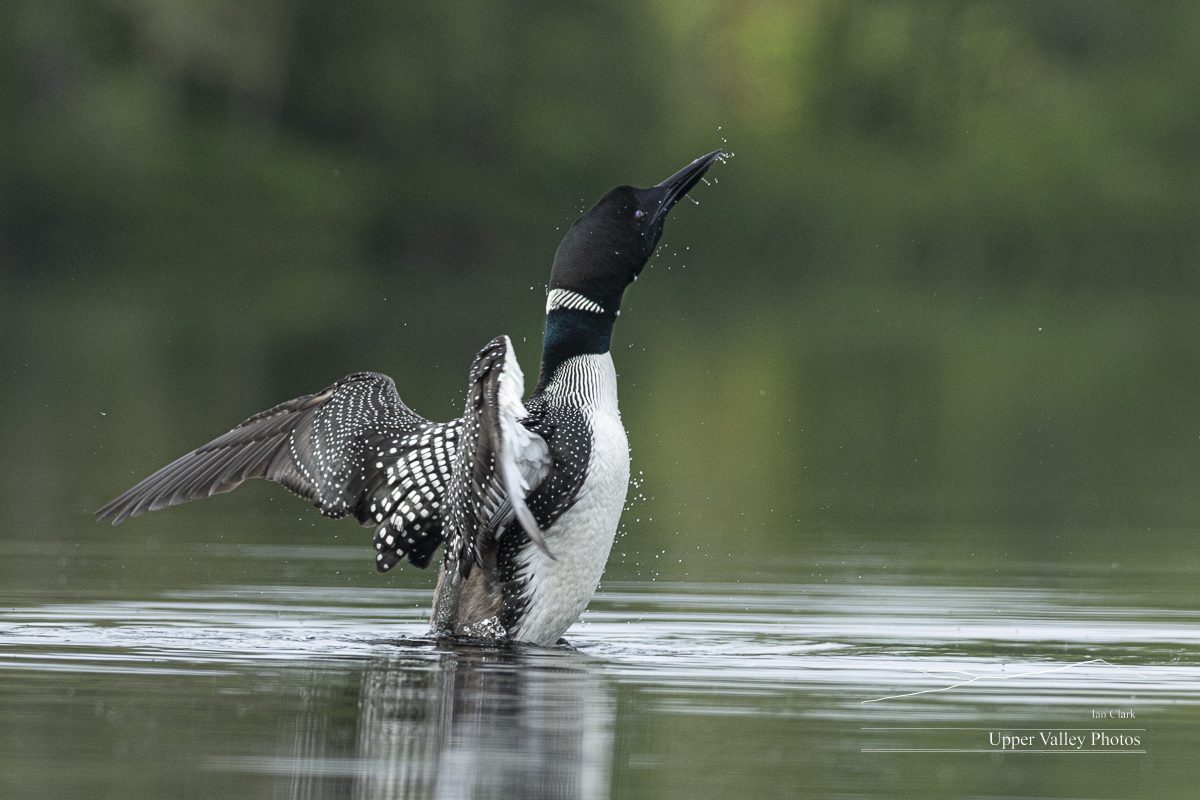
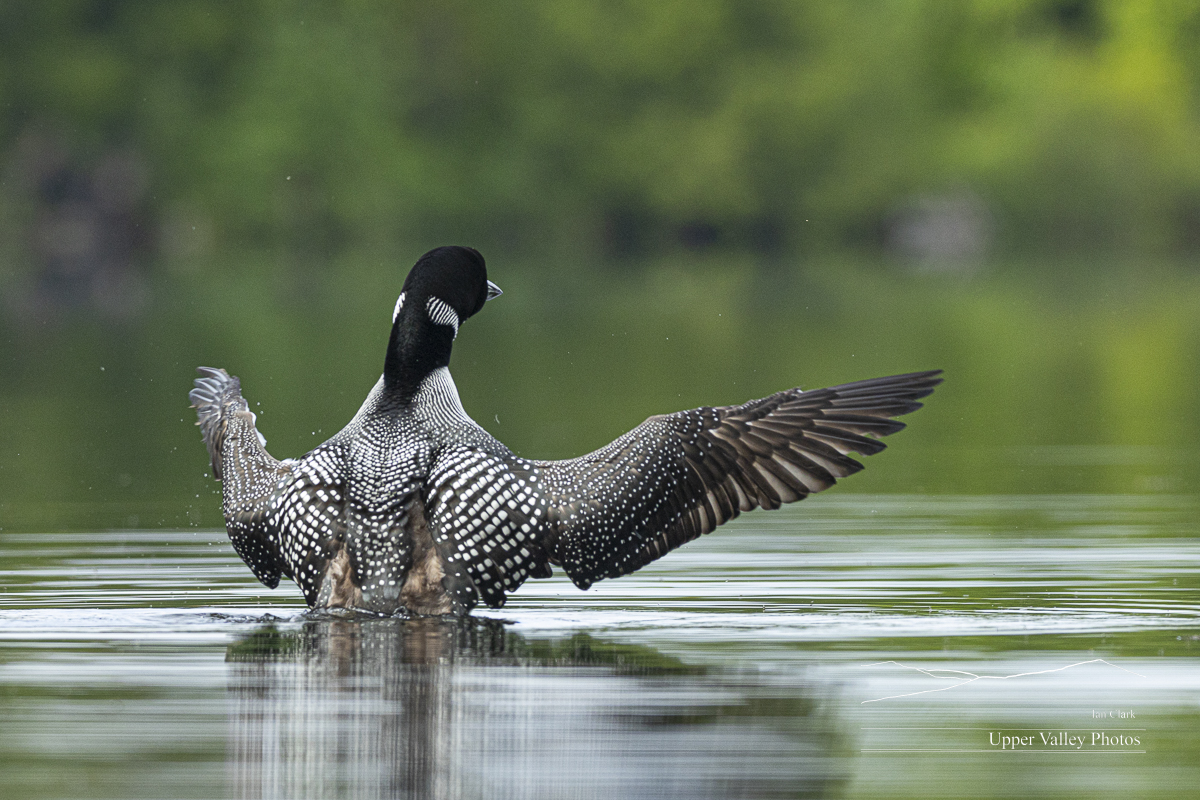

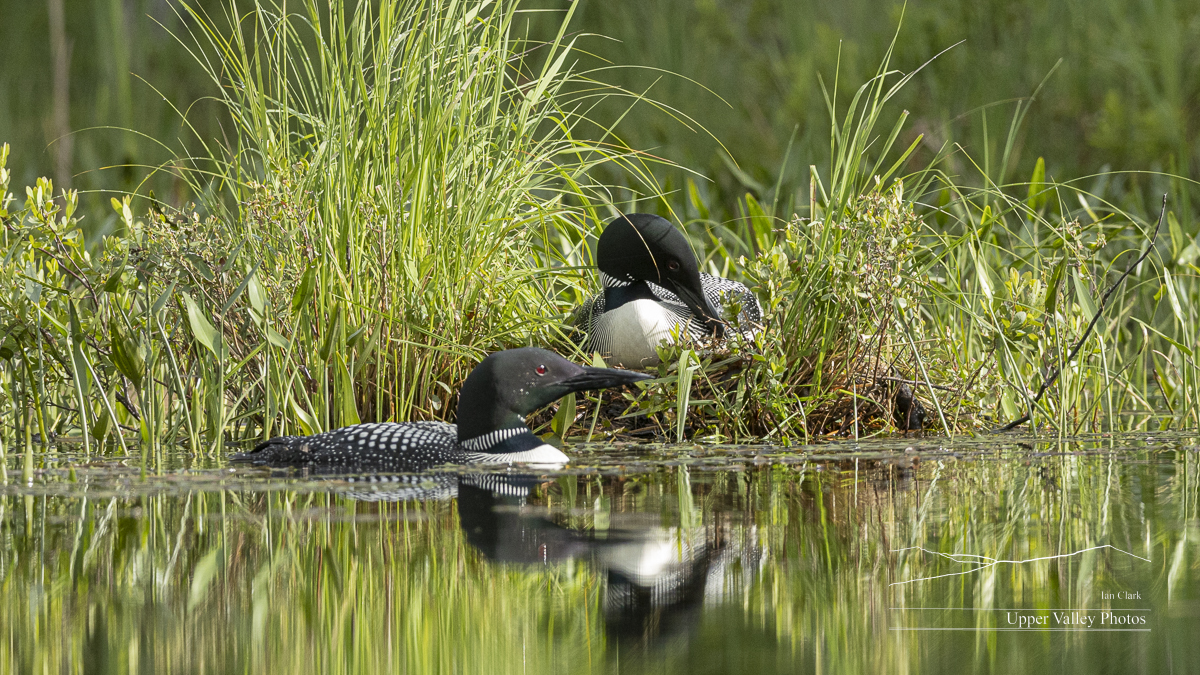
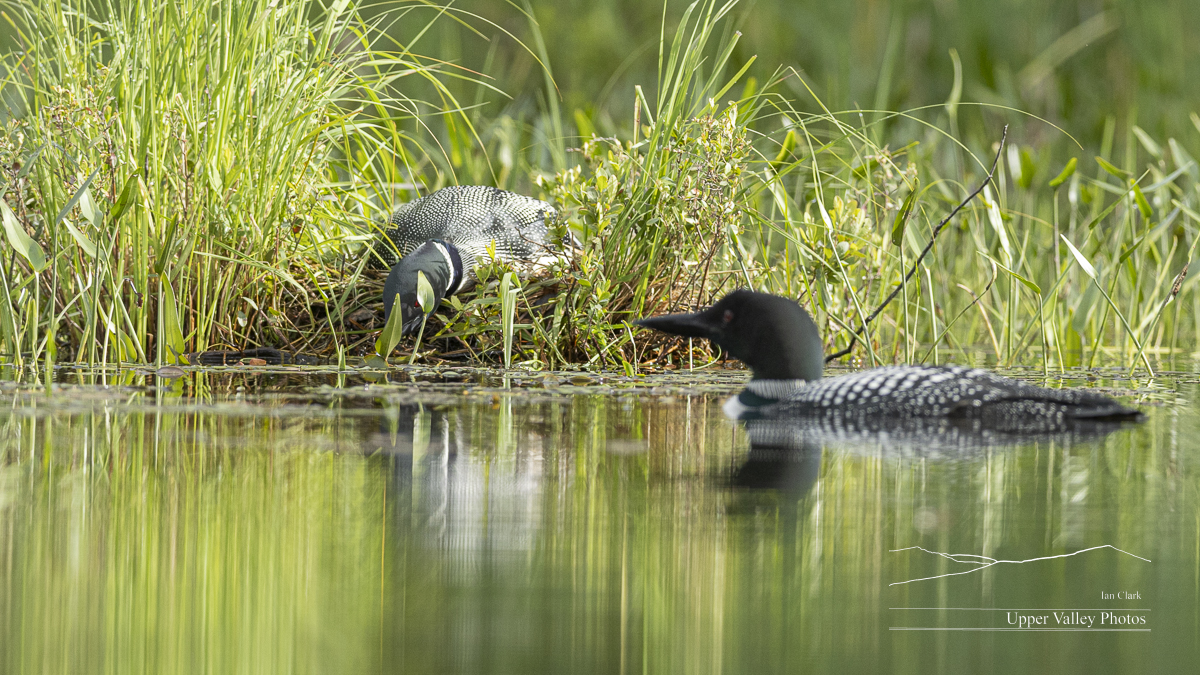
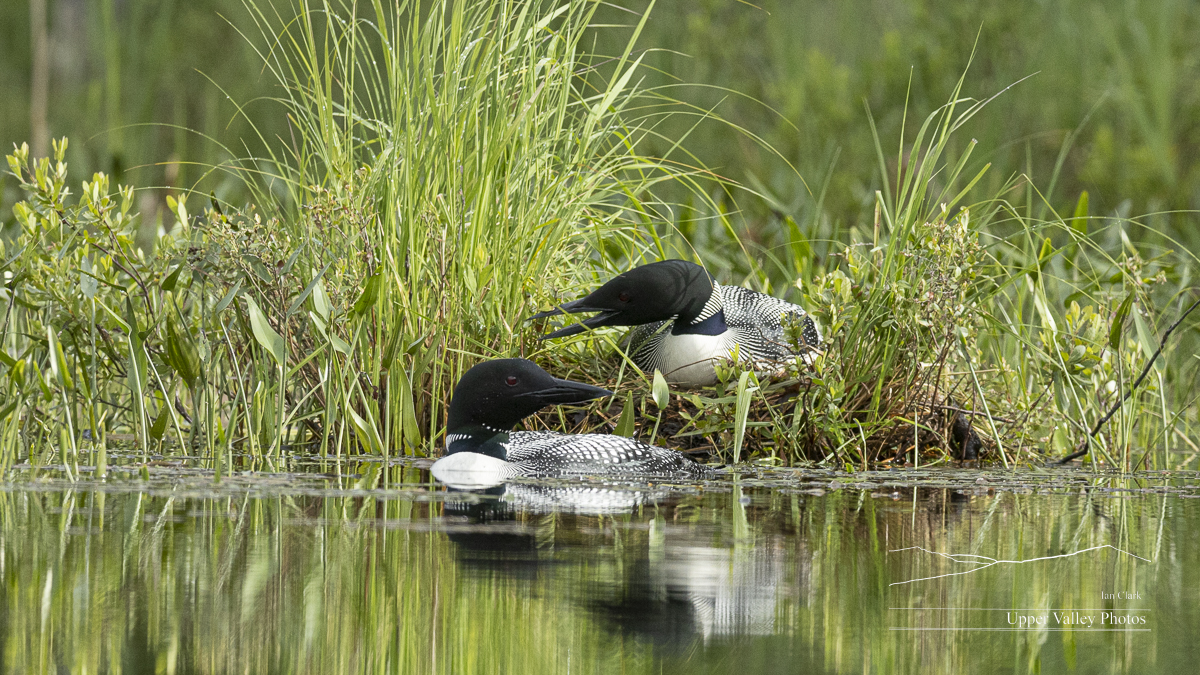
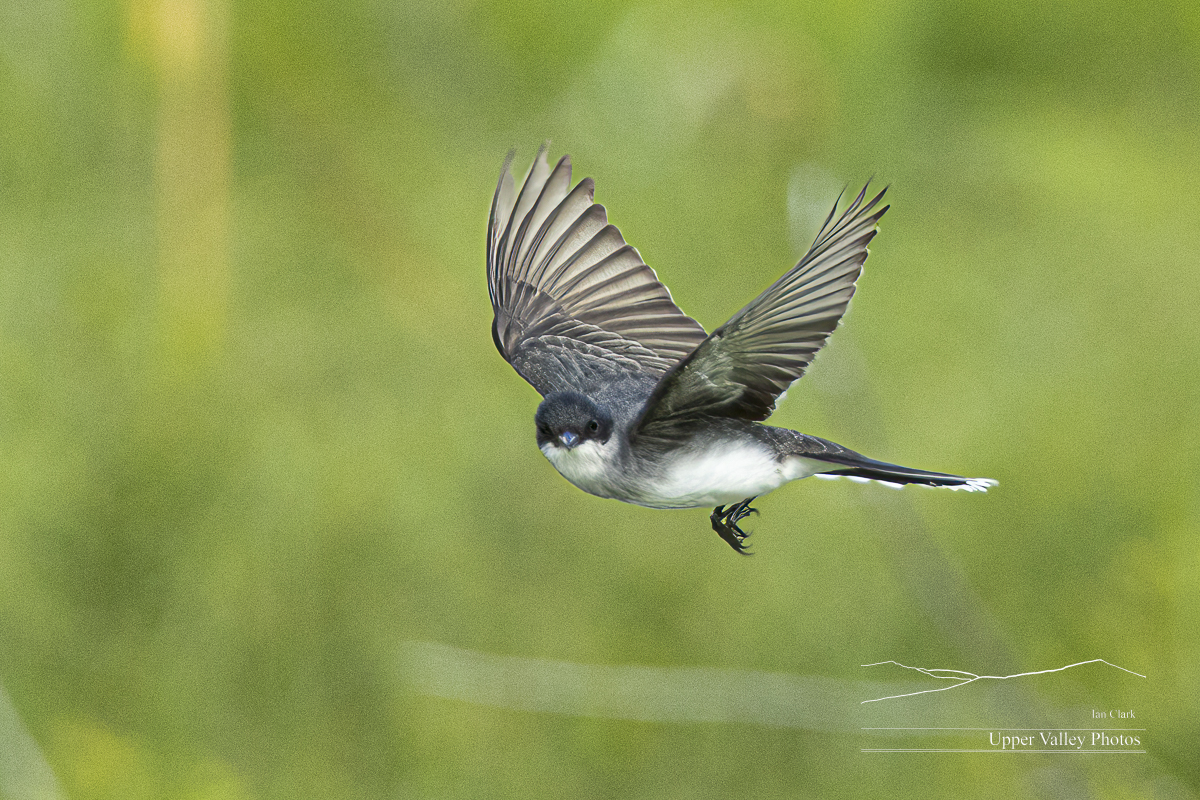
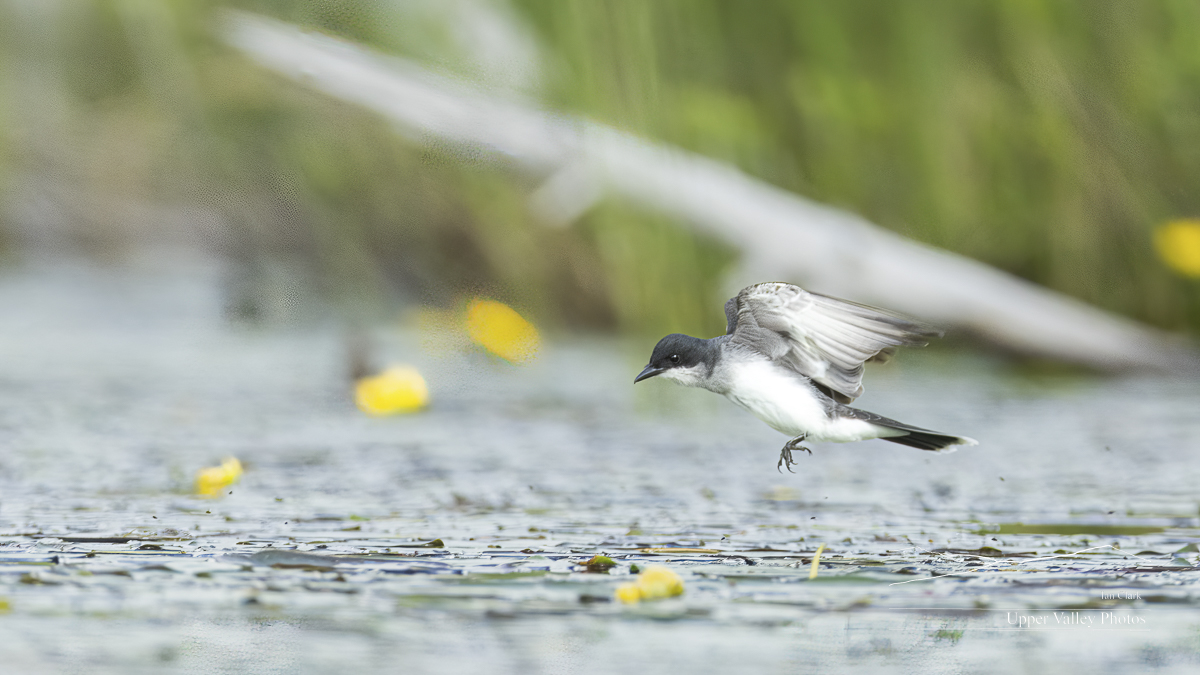
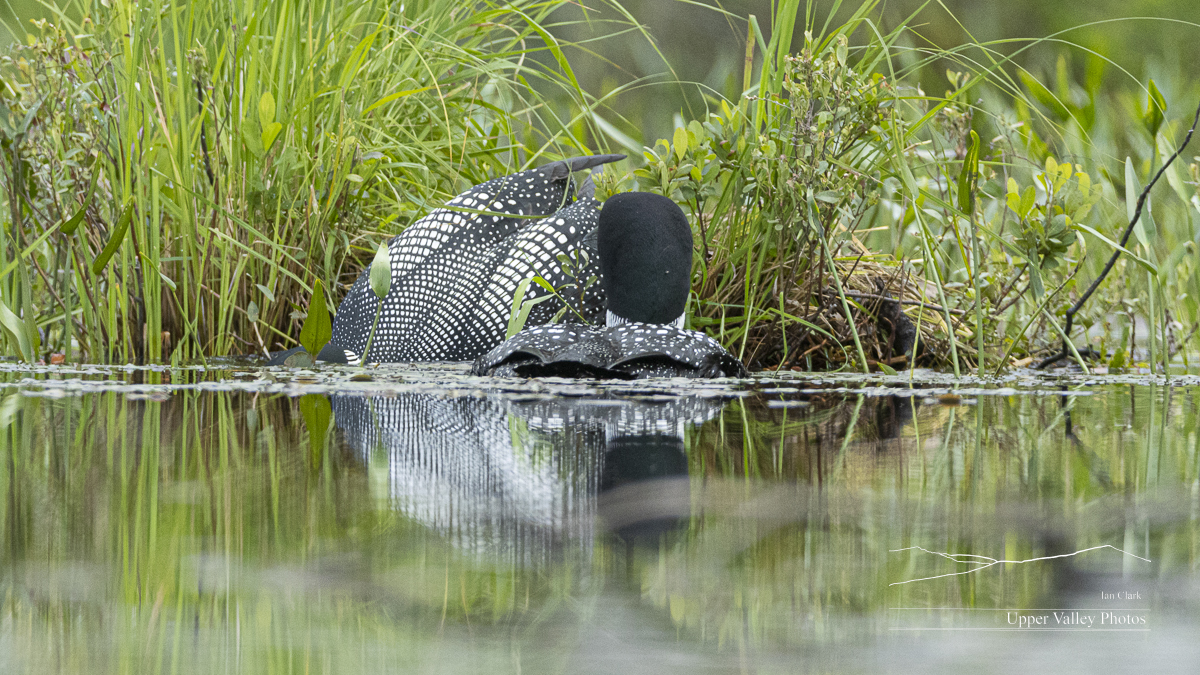
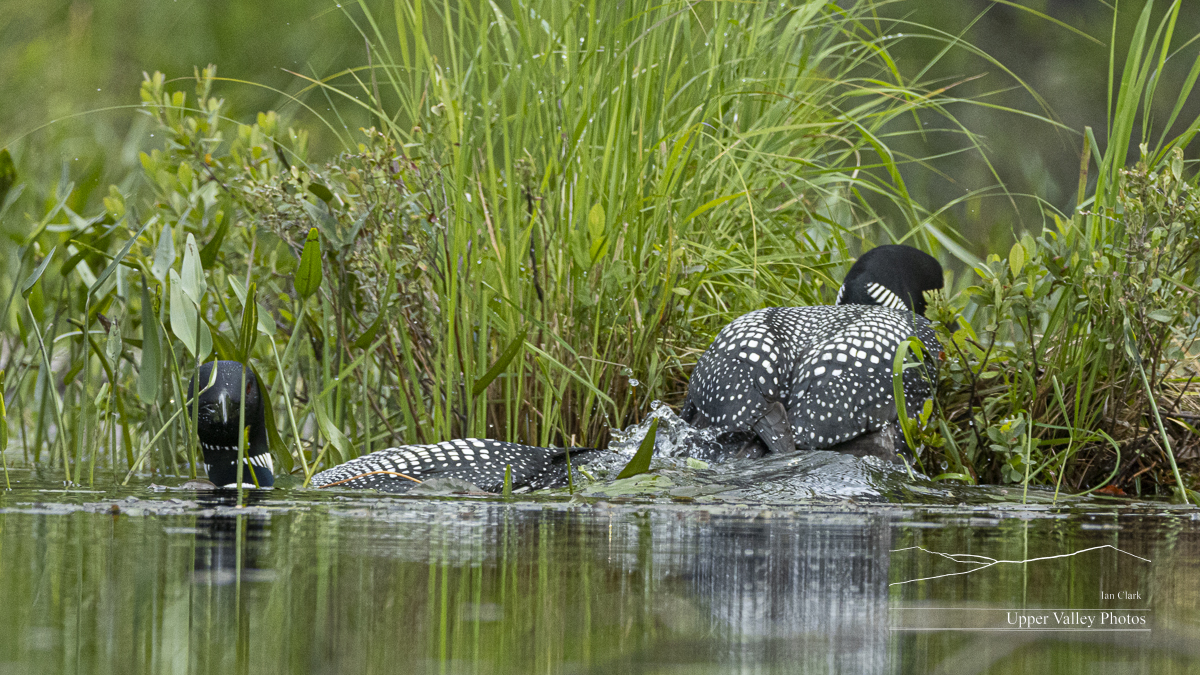

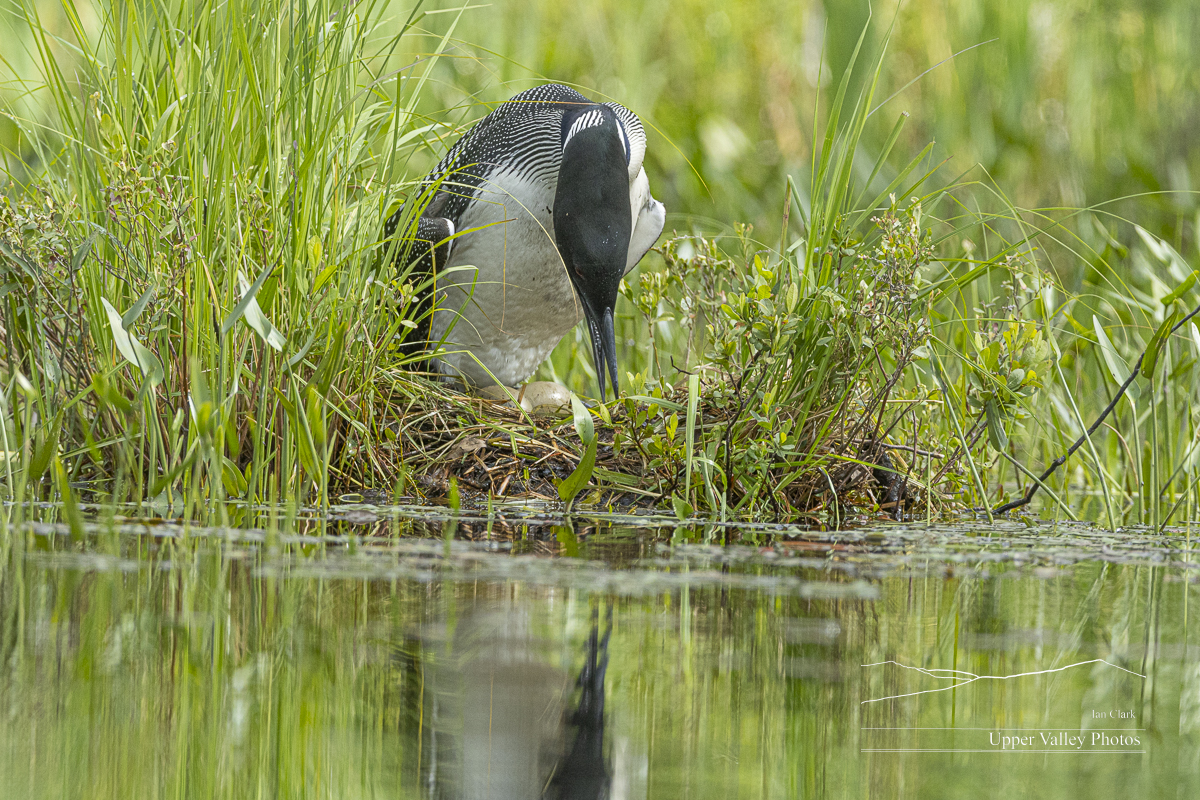
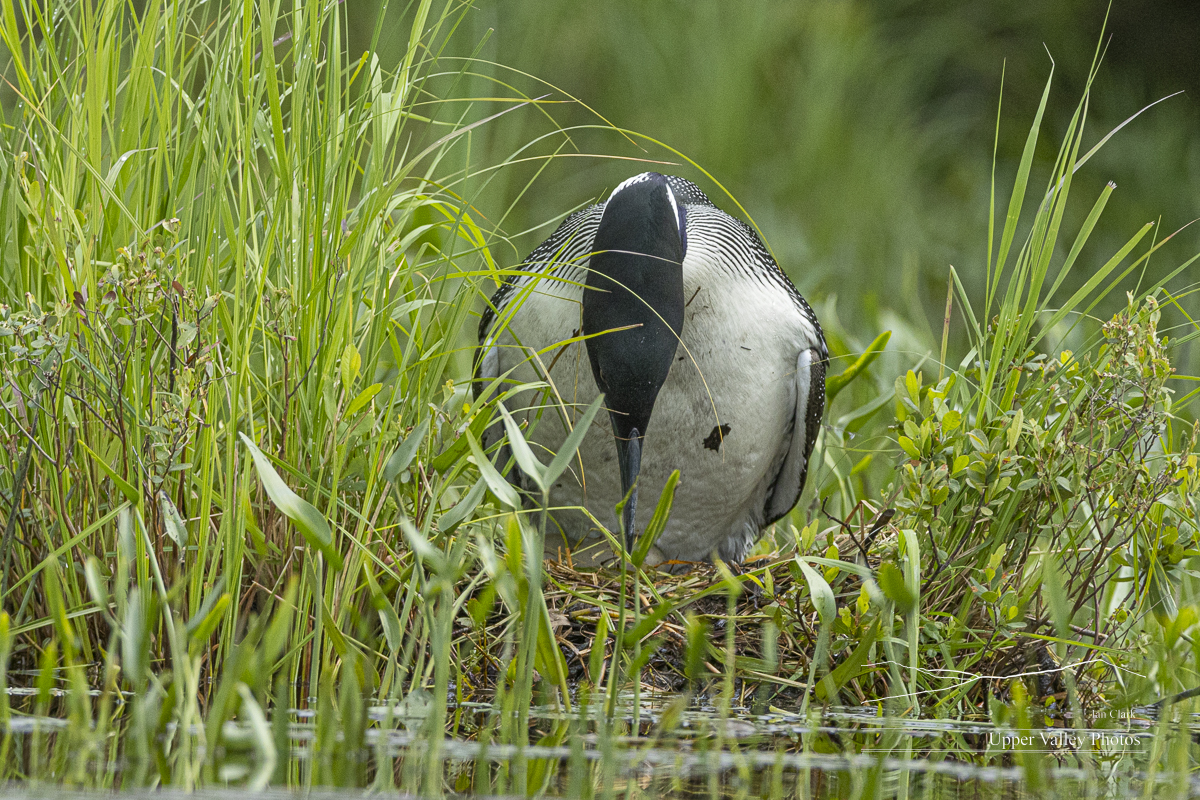
Thursday evening, I went back to check on the Westons. This time with just a couple puffy clouds in the sky.
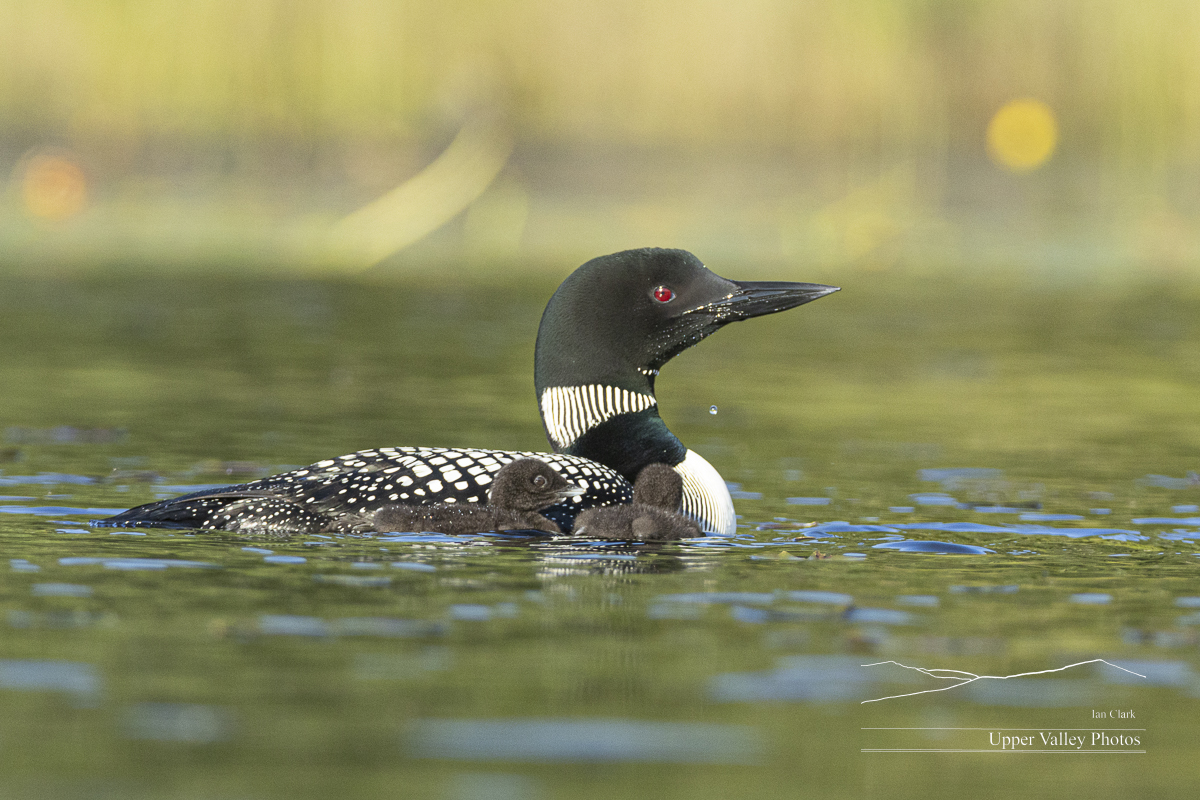

This morning, I was up and out by 0430, with clouds above and fog below me as I headed to see the Eastons. They’re up in the White Mountain National Forest, they were on their nest by the time the Forest Service got the road to the pond open, so we don’t know when to expect the chicks. But, the last three years, they’ve hatched in the third weekend of June, so soon…..
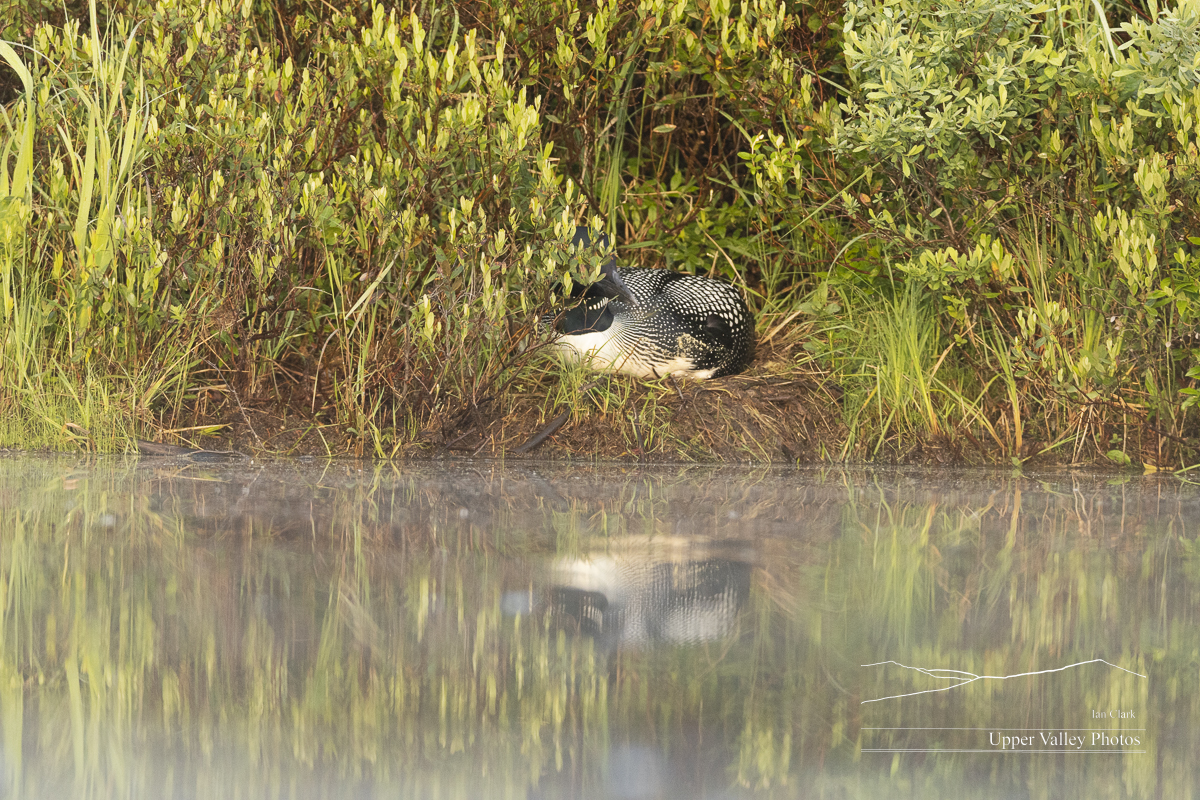

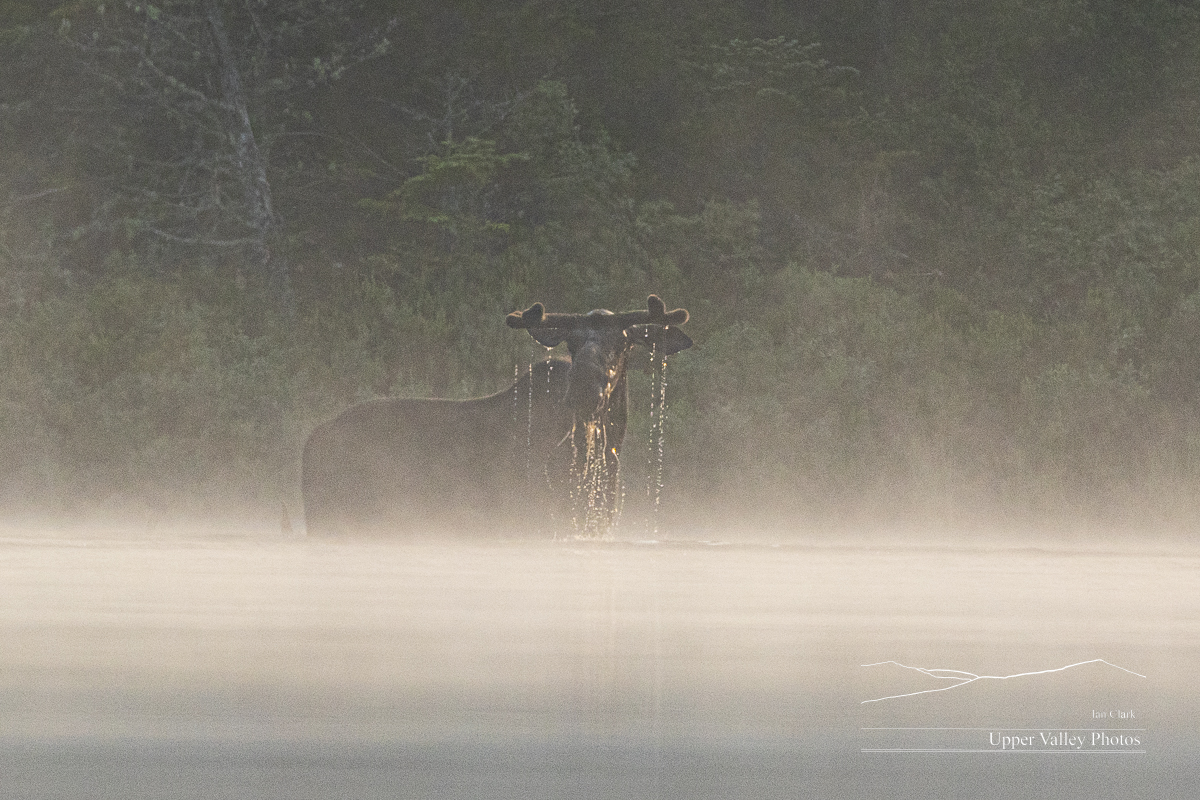
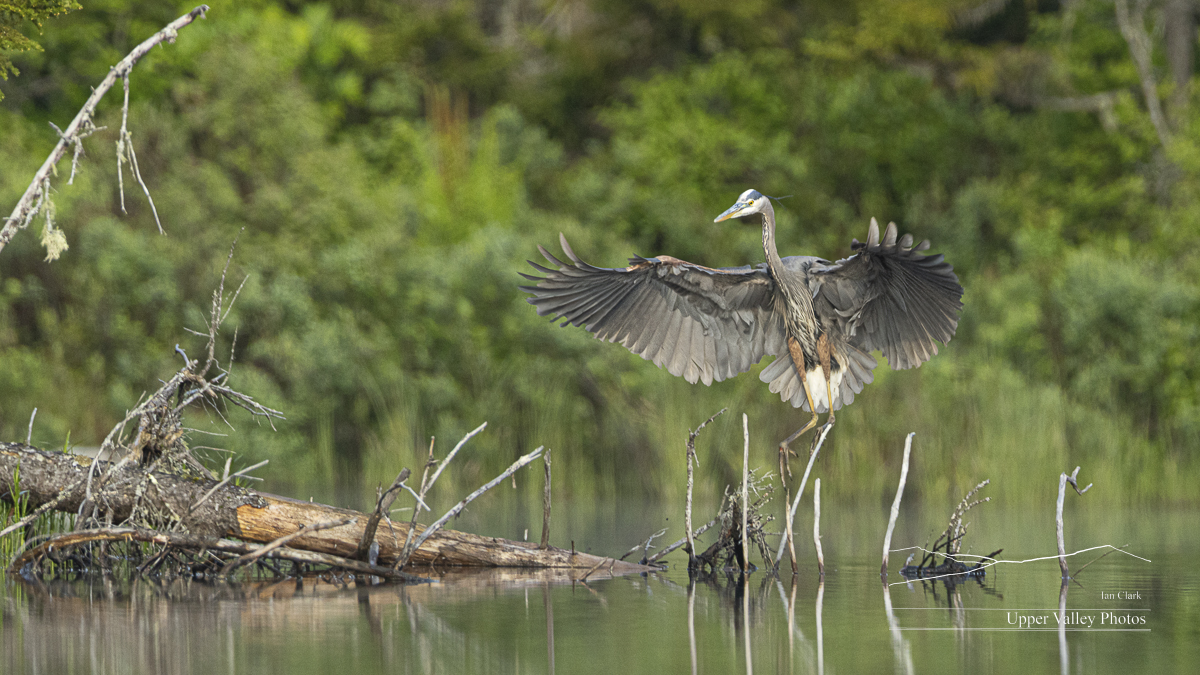
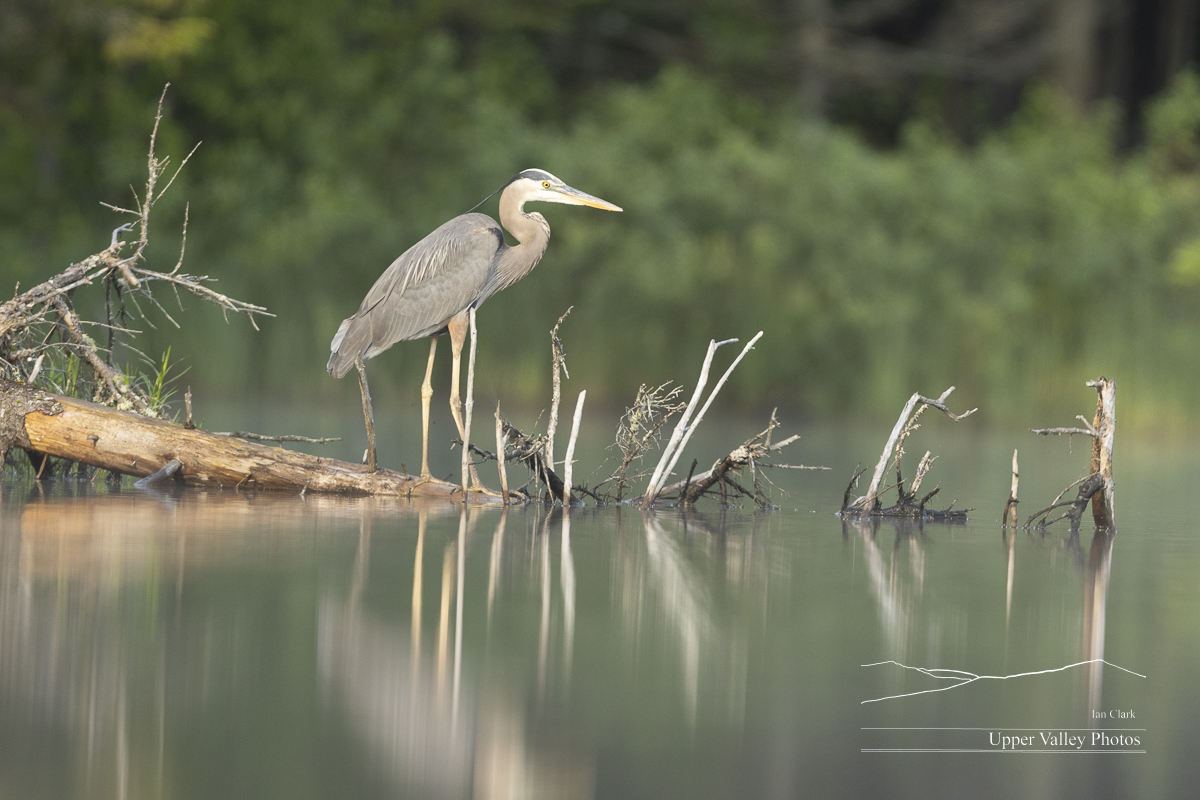

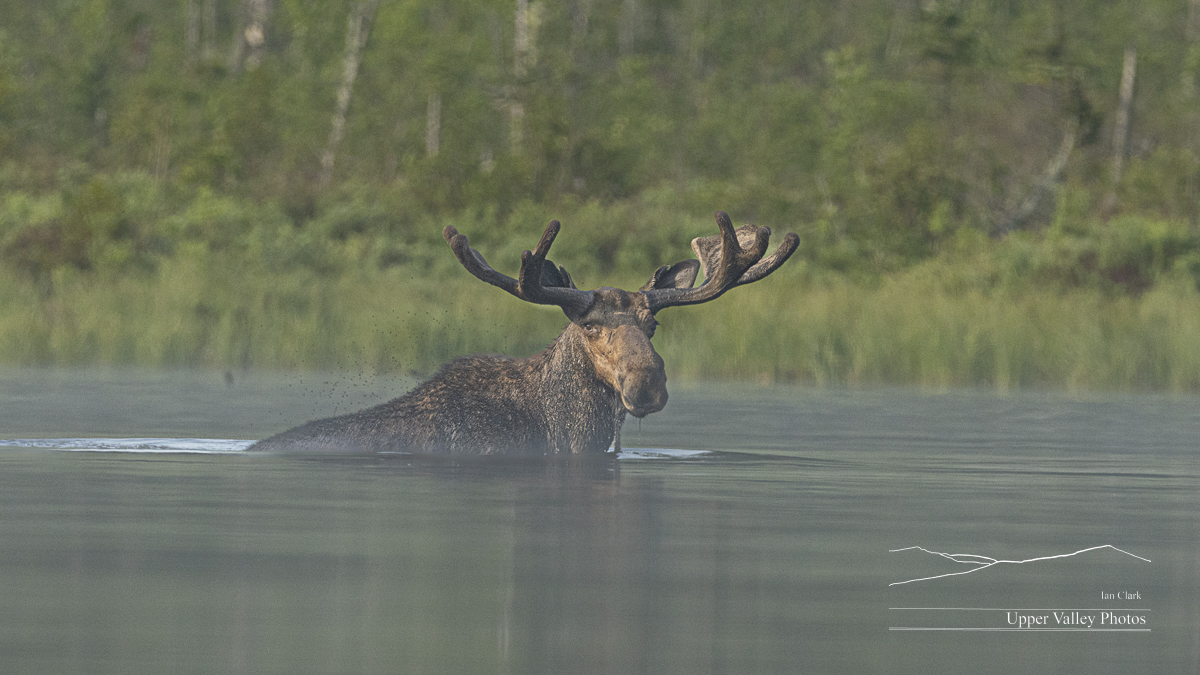
I’ll be out looking for the rest of our chicks as soon as we get a break in the weather.
Link to the newer post: https://blog.ianclark.com/photography/wildlife-photography/the-eastons-have-two-chicks/
A Look Back at Our Loons in 2022
Lazy photographers everywhere squeeze an extra post out of their favorite pix of the previous year. Why should I be different? Let’s look at some of my favorite pix of our loon families from last summer.
If you liked following the loons on my blog, you might be interested in seeing my presentation An Uncommon Look at the Common Loon. I’ve put together a PowerPoint presentation with some natural history of loons and we’ll follow a loon family from nest to the chicks in flight. I’ll be giving the presentation a couple times this week.
The first presentation will be at the Thompson Center in Woodstock, VT, this Thursday, January 12, at 1:00 p.m. The second presentation will be at the Blake Memorial Library in East Corinth, VT, this Friday, January 13, at 6:30 p.m. Both are free and everyone welcome.
And, if your interests include steam locomotives, I’ll be giving my presentation Under Steam at the Bugbee Senior Center in White River Jct., VT, on Wednesday, January 25 at 1:00 p.m. We’ll take a look at some of the US’s remaining operating steam locomotives. I’ve been tracking down the last steam engines since the 1970s, this show looks at the highlights from coast to coast. Also free and everyone welcome.
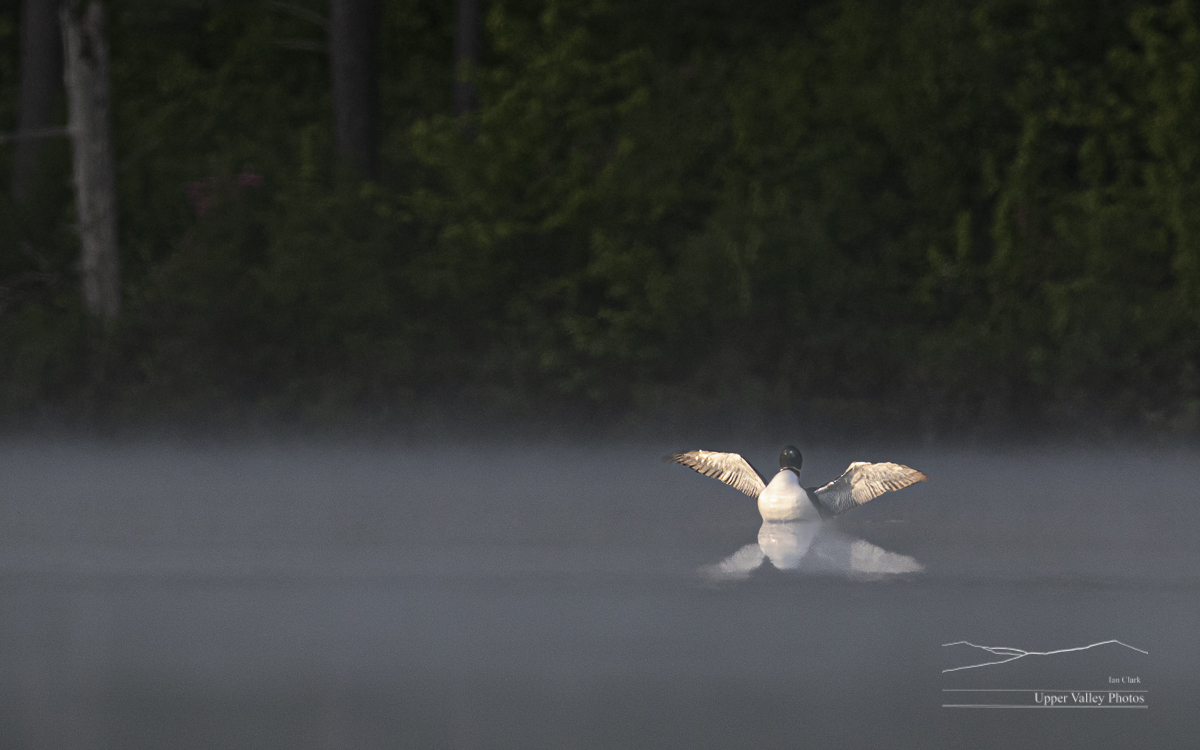

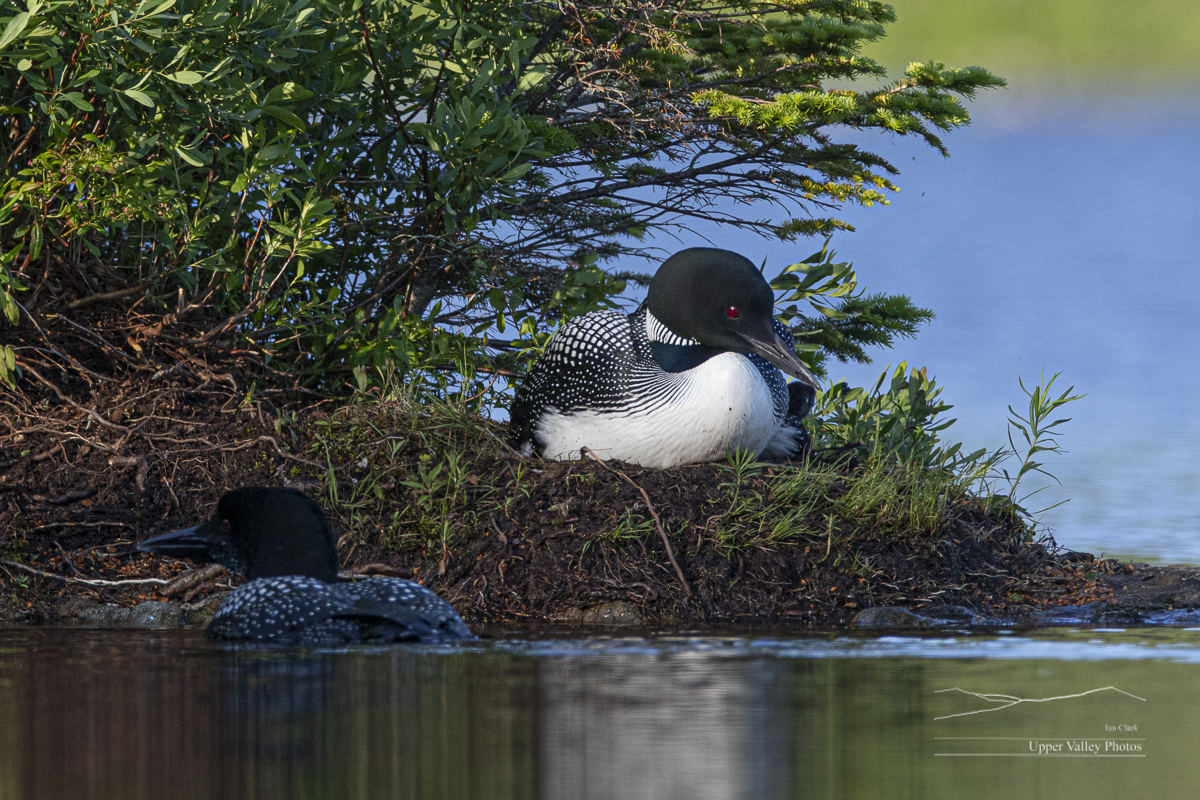
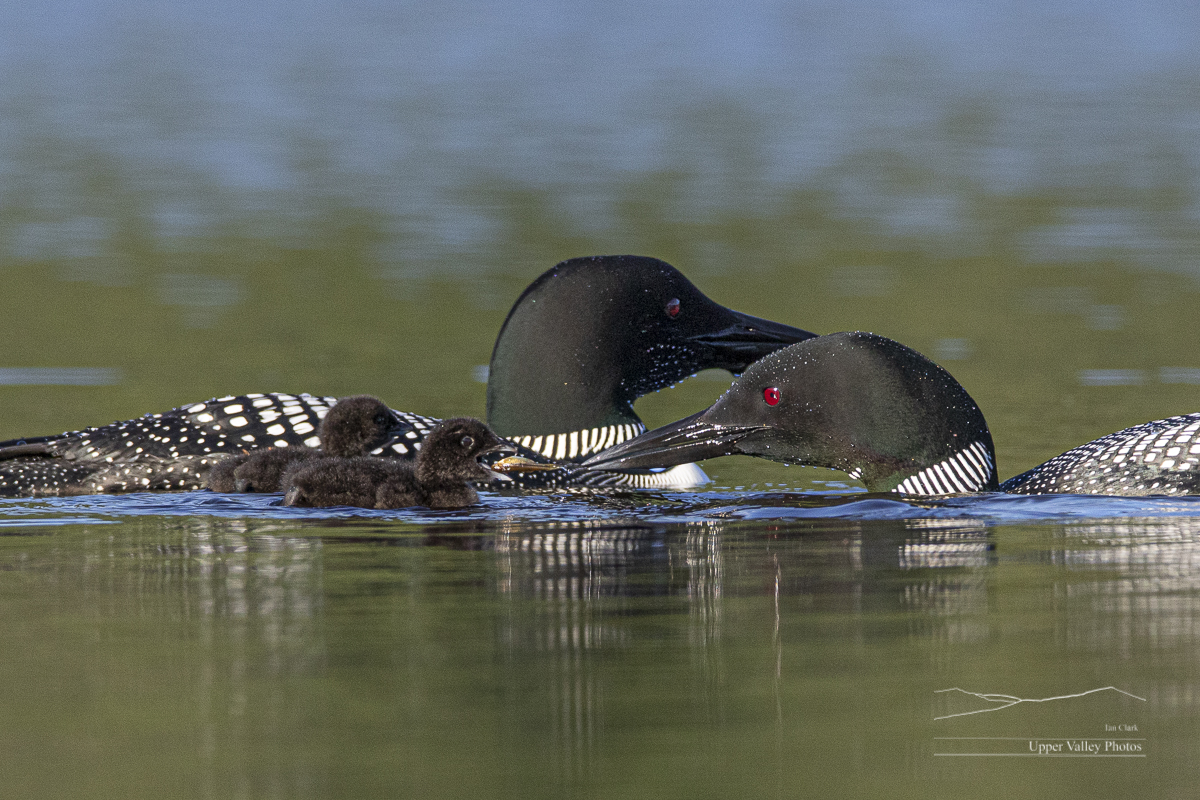
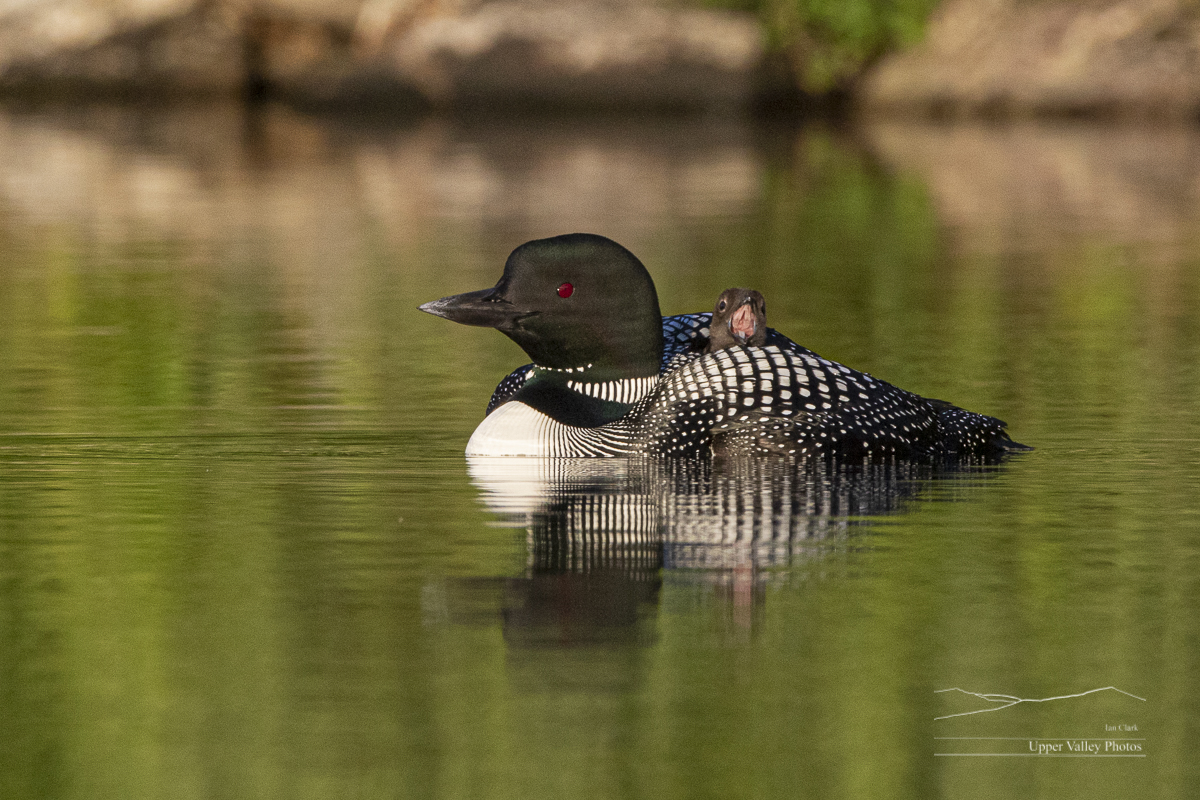

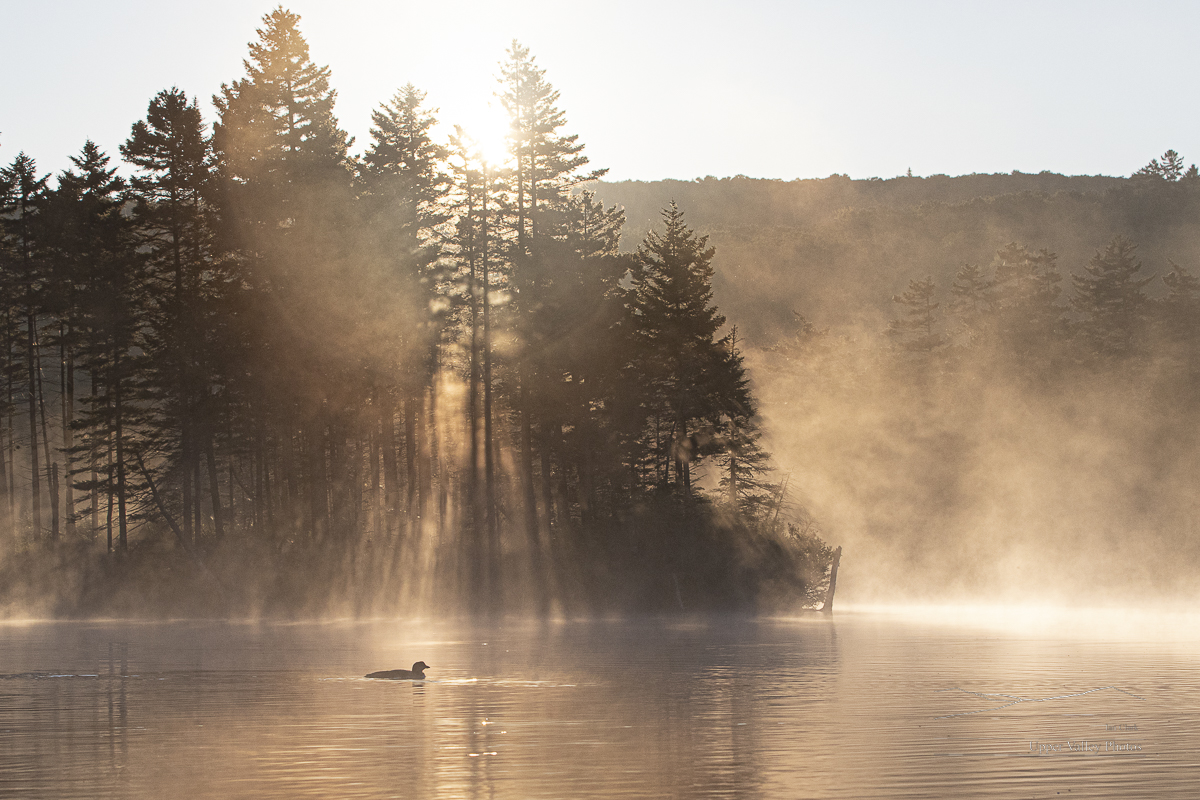


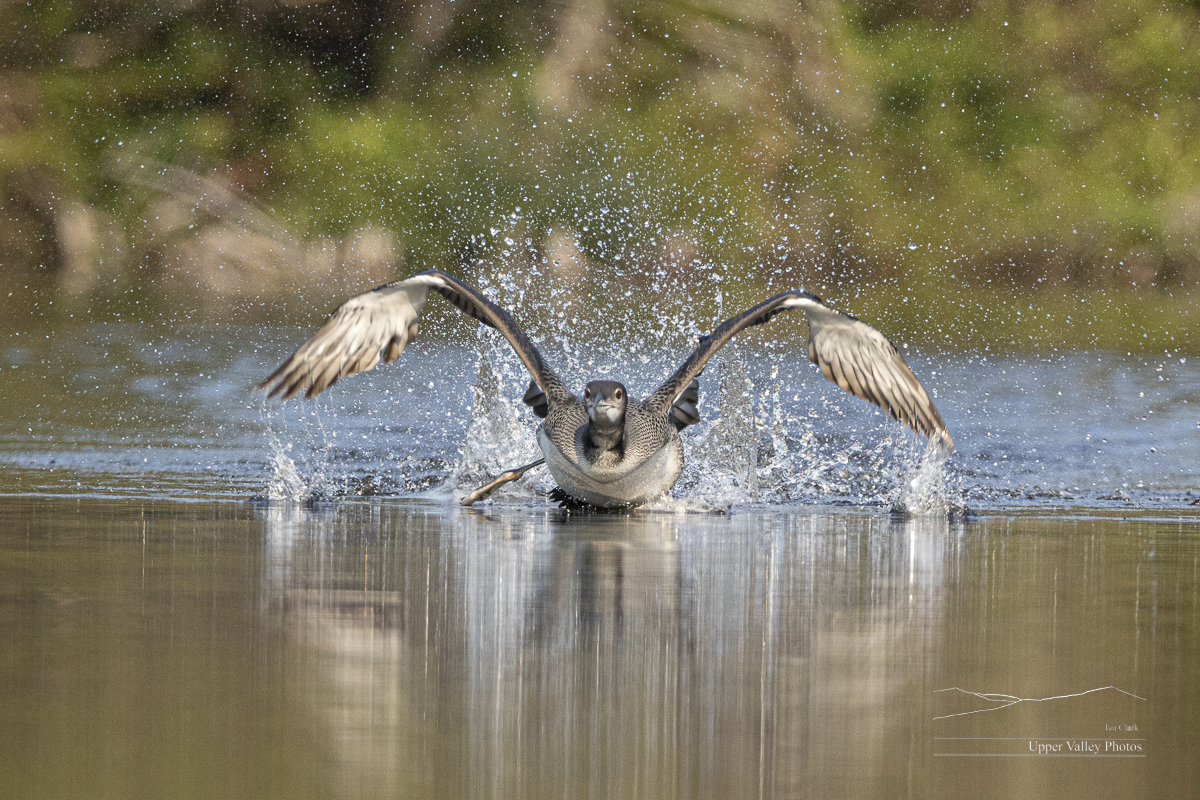
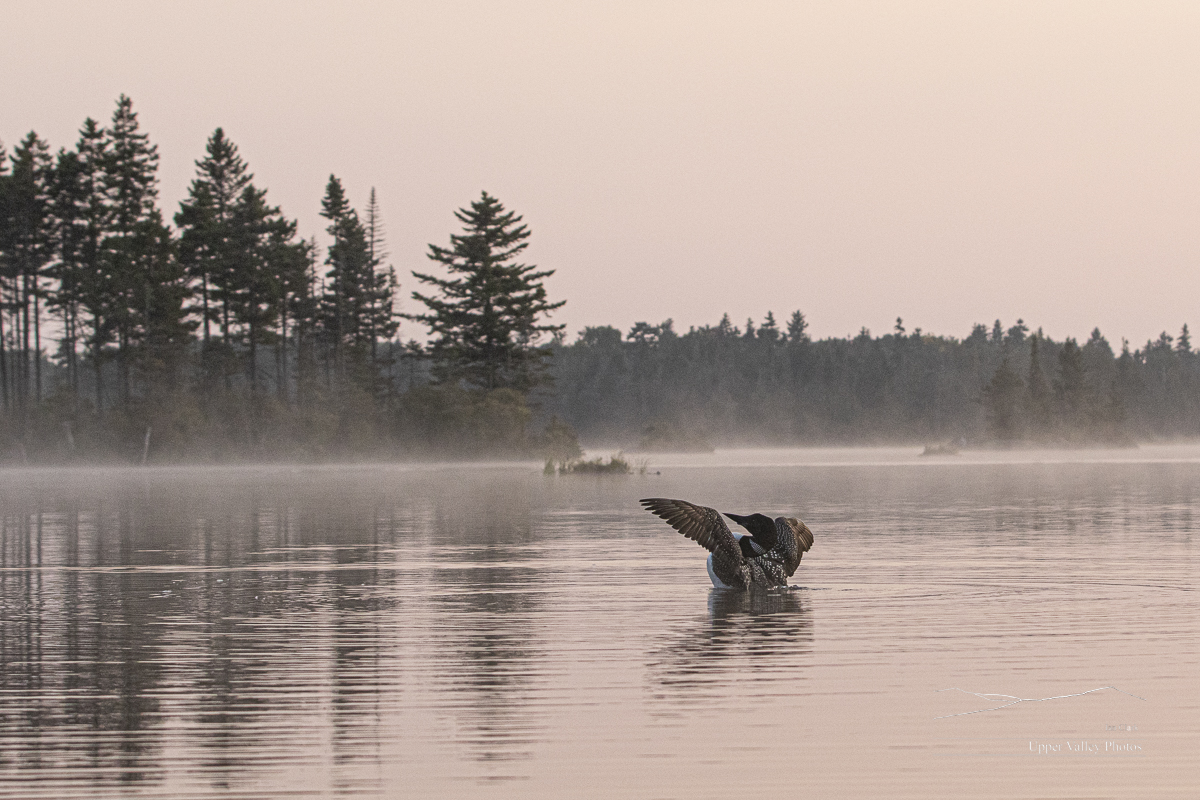
One Loon Family Still Here
Dawn yesterday found a cloudless sky and with the temperature here on the hill at 32°, I figured I could get the kayak around the pond. I headed north to check on the Westons. This is the family that faced intruders for several weeks in the spring. They hatched two chicks and one survives and is 15 weeks old.
I’ve got a couple appearances coming up. Wednesday October 26, I’ll be at the Bugbee Senior Center at 1:00 p.m.with my slideshow An Uncommon Look at the Common Loon. The show is open to the public, see the details on their site: https://www.bugbeecenter.org/activity/special-events/bugbeetalks/.
There’s a photographic print version of An Uncommon Look which I’ll be hanging at the Kellogg-Hubbard Memorial Library in Montpelier on November 1. It will stay up until November 30. I’ll be giving An Uncommon Look at 6:30 p.m. on November 9 at the Library. Free and open to the public.
And, I’ll be at Craft Vermont November 18-20, 2022 at the DoubleTree in South Burlington. Come on by and say hello.
When I got to the loon’s pond, the sun had yet to hit the tops of the trees along the west side of the pond and it was a refreshing 29°. There was only the slightest trace of ice along the shore, no problem for a kayak.
While I was launching the kayak, I noticed what looked to be a large hawk land in a tree towards the other end of the pond. Too far away for a good ID and with the loons talking I headed out to find them.
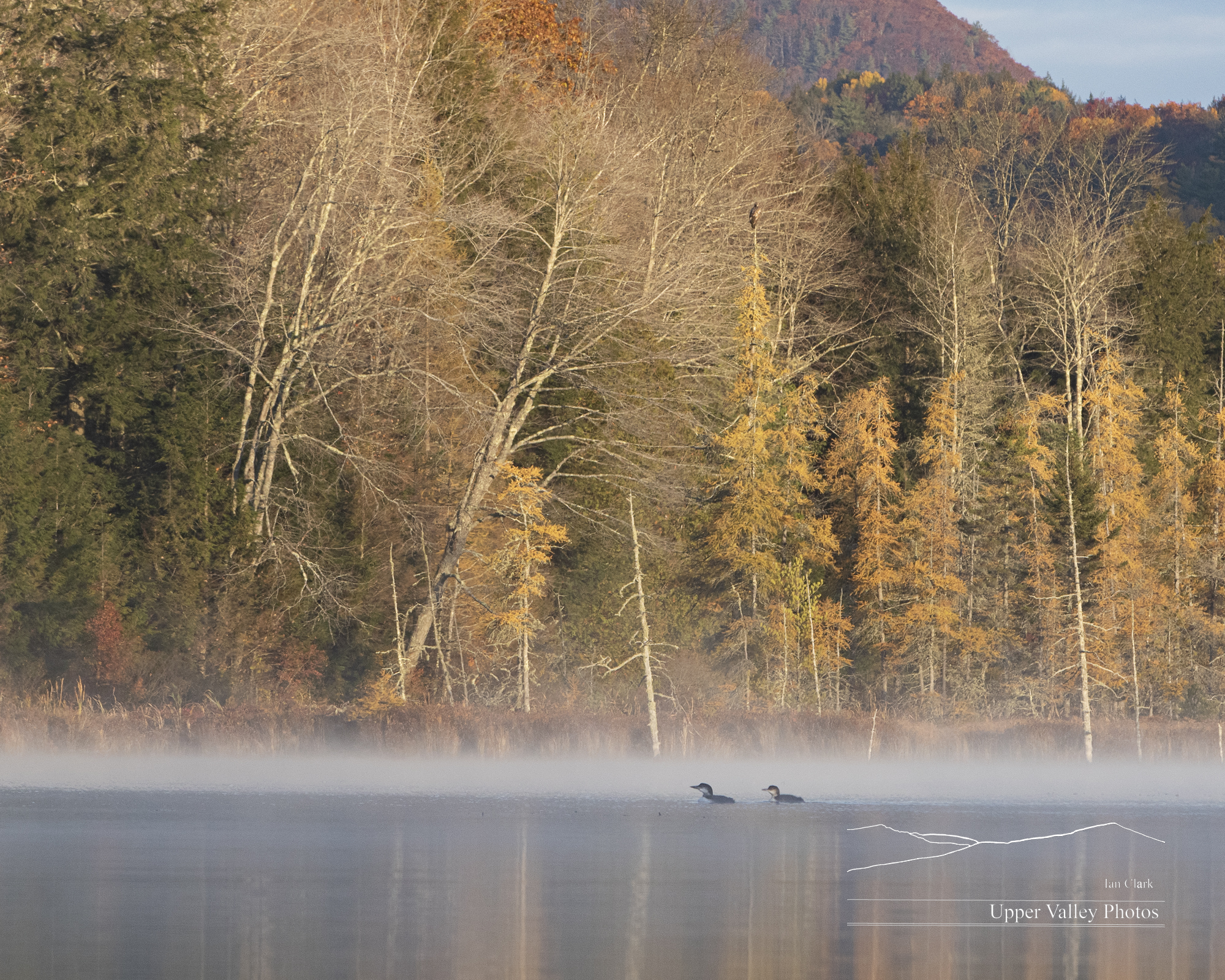
There were two loons on the pond. One I suspect is mom, the other is our surviving chick. When I found thems, they appeared agitated. They were swimming back and forth, fairly rapidly and making low hooting calls. After I watched for a few minutes, it occurred to me to check that hawk out. It turned out to be a juvenile bald eagle. One of the residents on the pond told me earlier that a young eagle had been harassing the chick. The eagle is at the top of the tree just right of center.

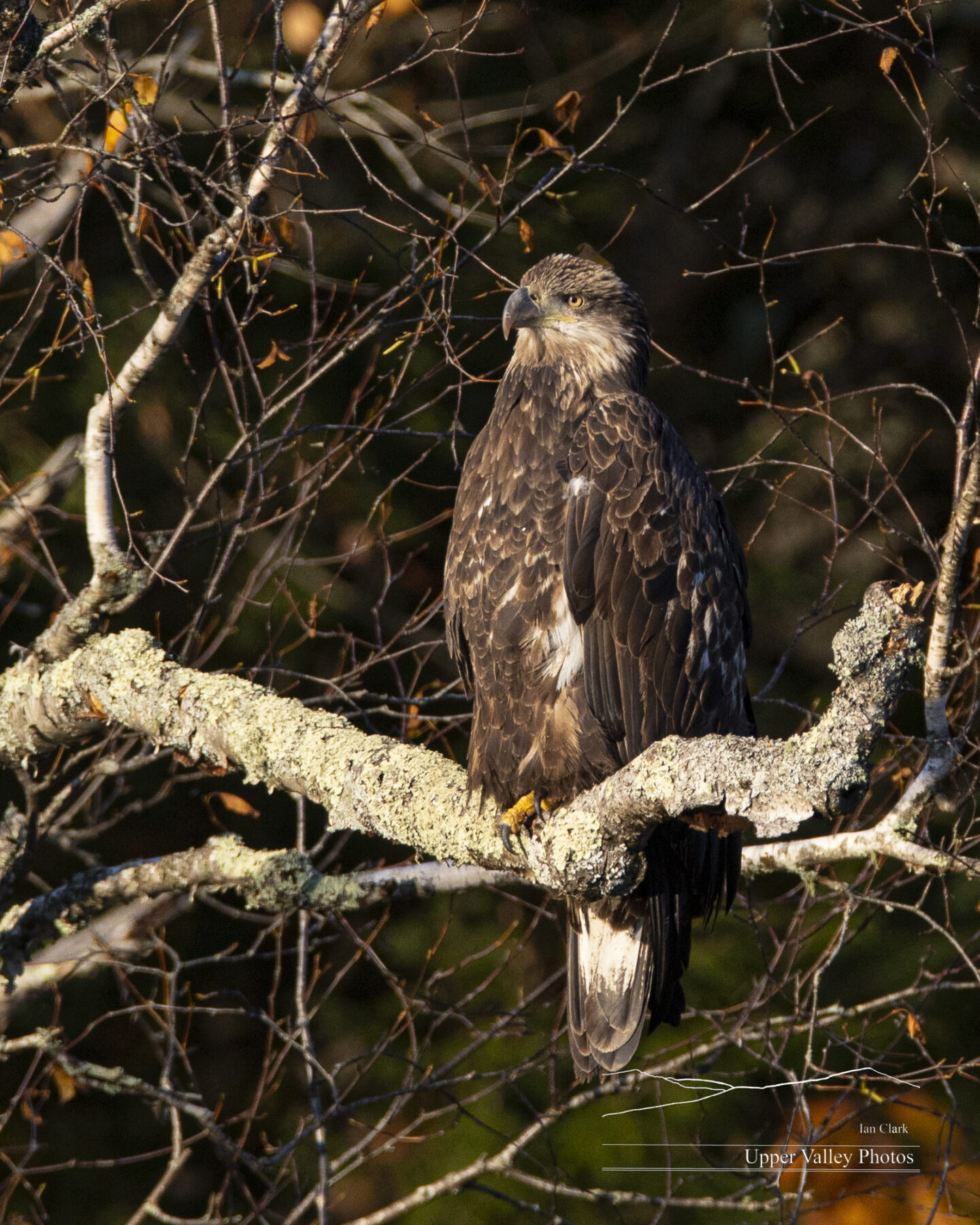

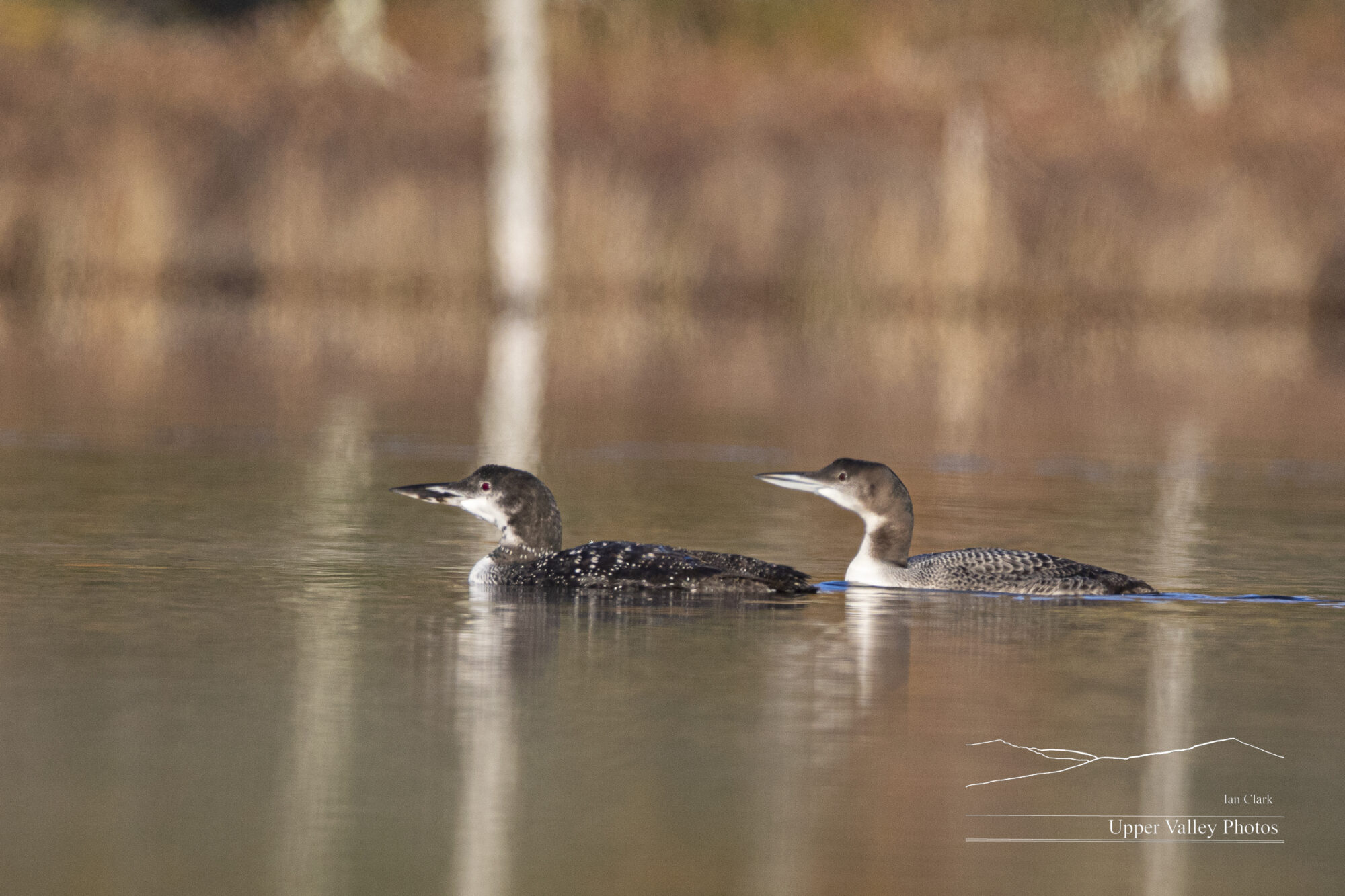
I suspect that’s mom in front. My guess is based on not hearing the adult loon yodel. The male on the pond this year was not shy about yodeling at eagles or most anything that moved along the shore. Our chick is a male, he tried a couple of yodels that didn’t impress the eagles. Note that mom has pretty much changed into her winter plumage.

